Inbox and Environment News: Issue 533
April 3 - 9, 2022: Issue 533
Ban The Release Of Balloons In NSW Petition
Ella: Green Turtle Rescued From Manly
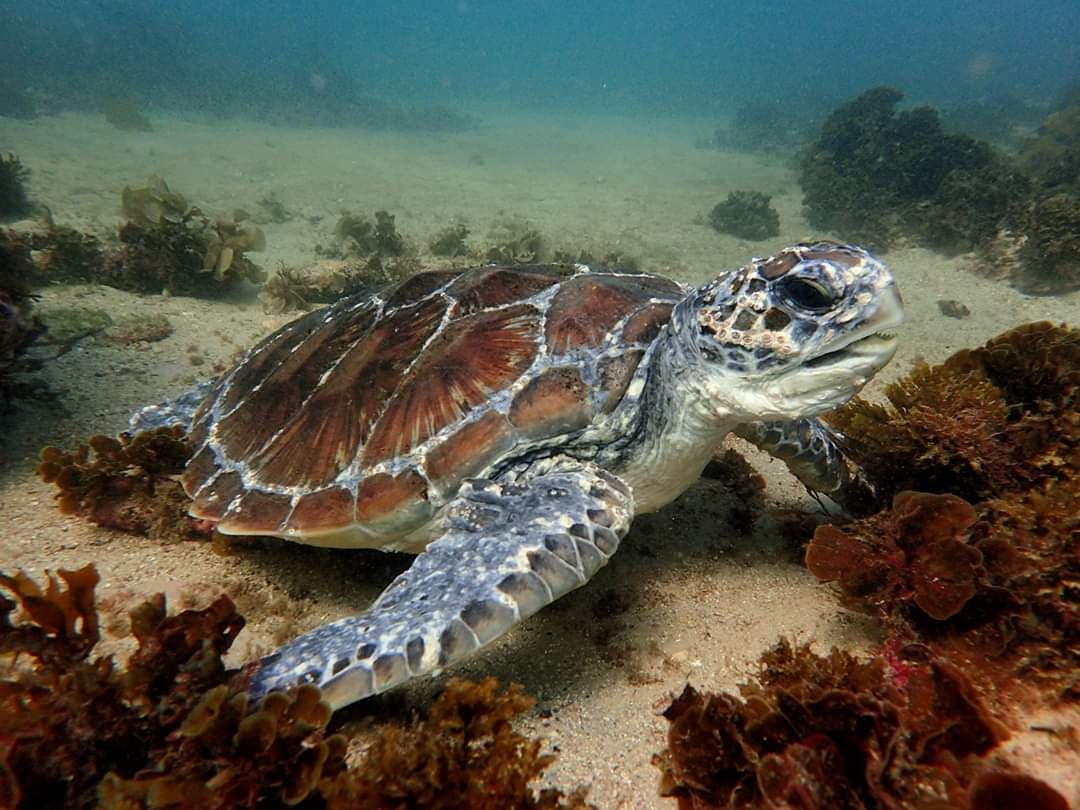
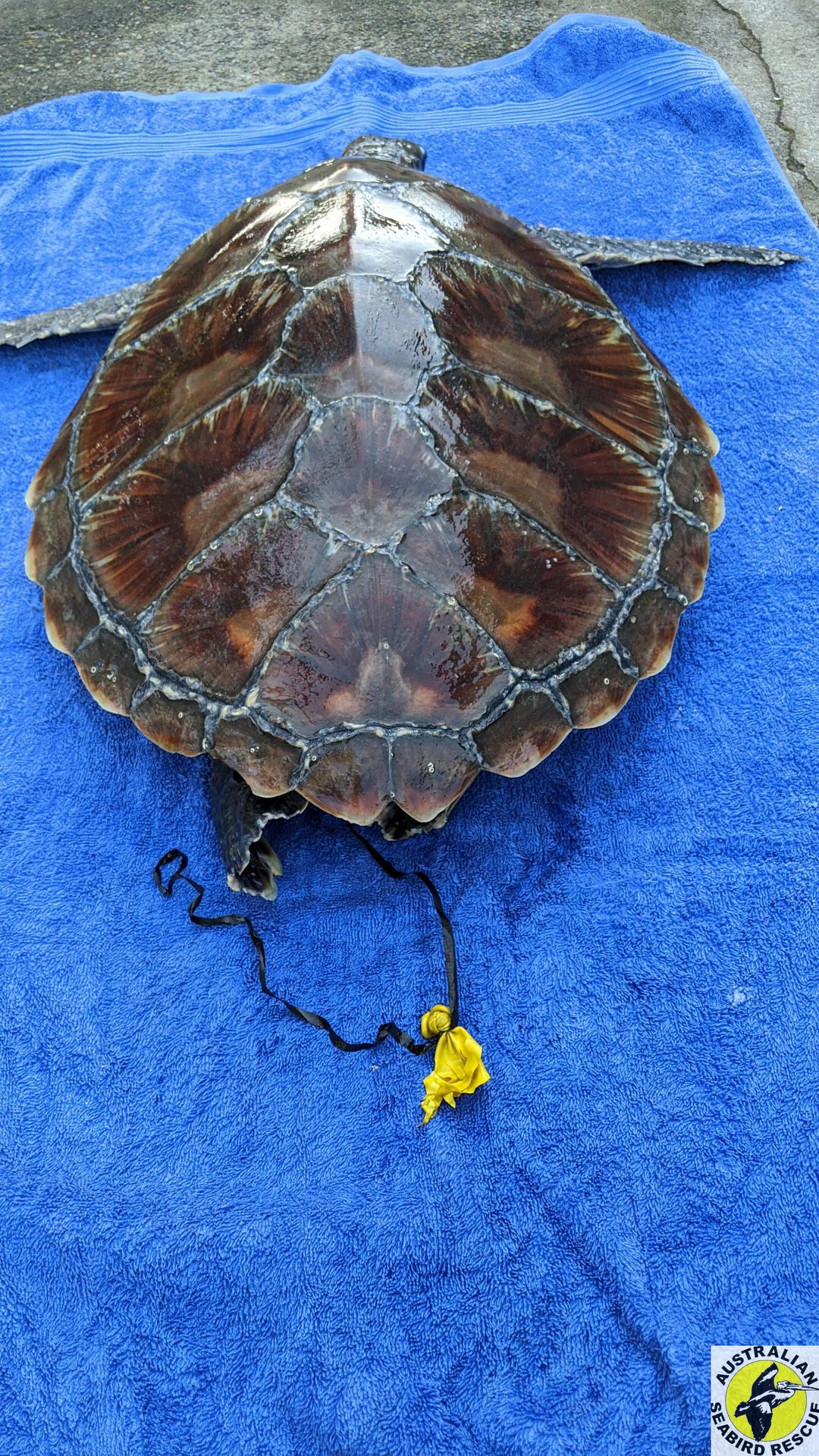
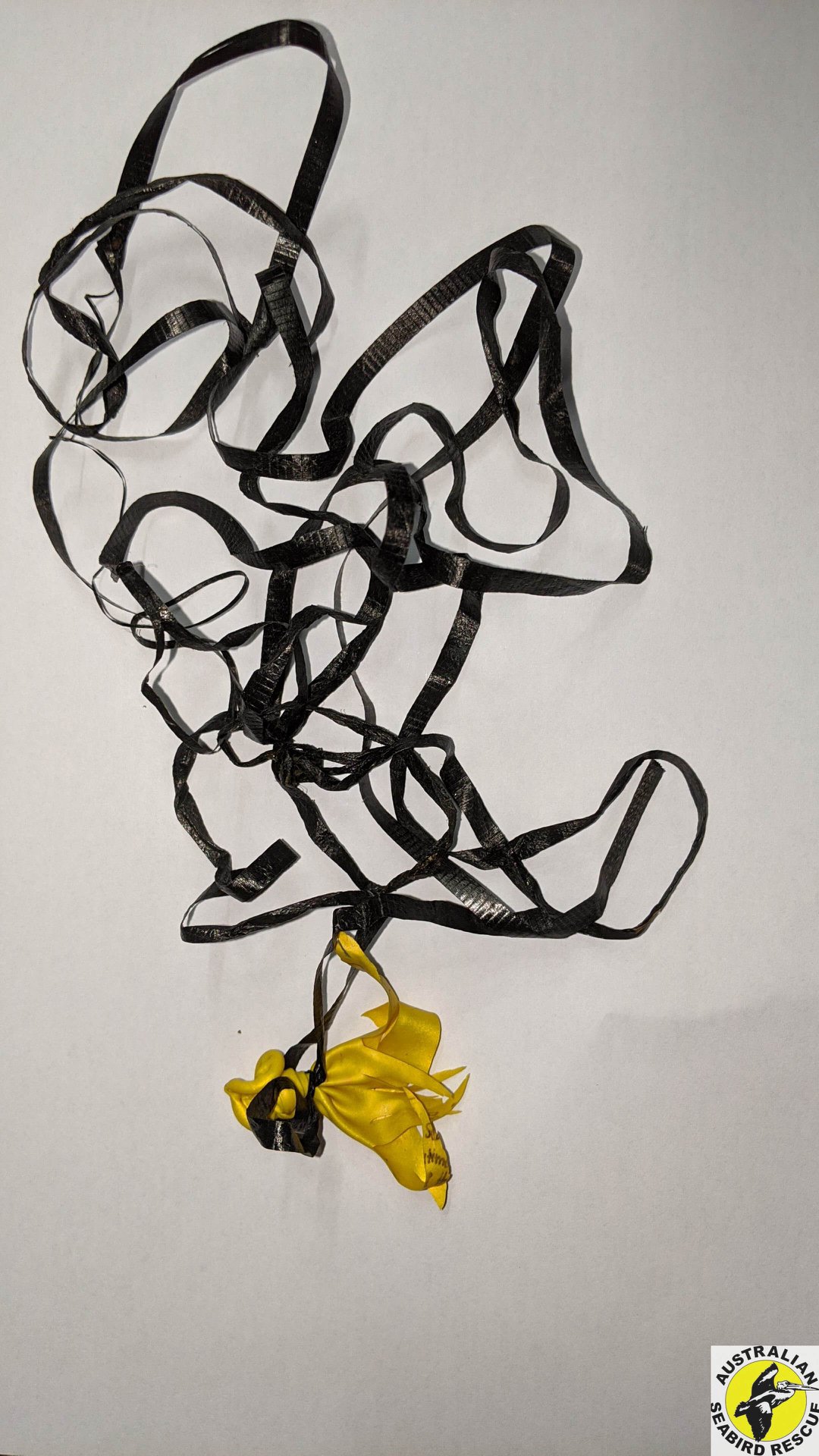
Local Wildlife Rescuers And Carers State That Ongoing Heavy Rains Are Tough For Us But Can Be Tougher For Our Wildlife:
- Birds and possums can be washed out of trees, or the tree comes down, nests can disintegrate or hollows fill with water
- Ground dwelling animals can be flooded out of their burrows or hiding places and they need to seek higher ground
- They are at risk crossing roads as people can't see them and sudden braking causes accidents
- The food may disappear - insects, seeds and pollens are washed away, nectar is diluted and animals can be starving
- They are vulnerable in open areas to predators, including our pets
- They can't dry out and may get hypothermia or pneumonia
- Animals may seek shelter in your home or garage.
You can help by:
- Keeping your pets indoors
- Assessing for wounds or parasites
- Putting out towels or shelters like boxes to provide a place to hide
- Drive to conditions and call a rescue group if you see an animal hit (or do a pouch check or get to a vet if you can stop)
- If you are concerned take a photo and talk to a rescue group or wildlife carer
There are 2 rescue groups in the Northern Beaches:
Sydney Wildlife: 9413 4300
WIRES: 1300 094 737
Please be patient as there could be a few enquiries regarding the wildlife.
Generally Sydney Wildlife do not recommend offering food but it may help in some cases. Please ensure you know what they generally eat and any offerings will not make them sick. You can read more on feeding wildlife here
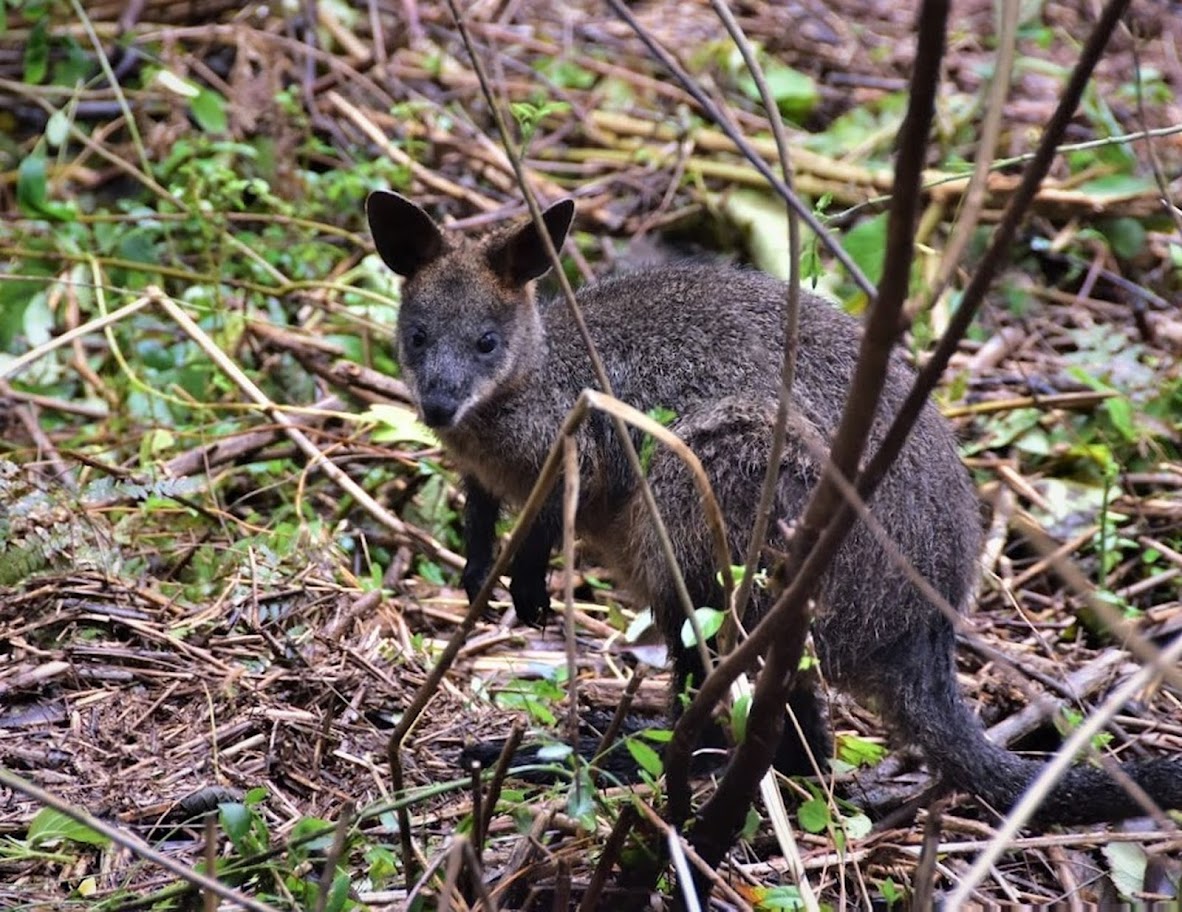
Information courtesy Ed Laginestra, Sydney Wildlife volunteer. Photo: Warriewood Wetlands Wallaby by Kevin Murray, March 2022.
Join The Fight Against Foxes On The Northern Beaches
Northern Beaches residents are invited to hear how they can join the fight against foxes in their area at a free online event on April 5th.
A joint initiative between NSW DPI, Greater Sydney Local Land Services and Northern Beaches Council, the webinar will feature a range of expert speakers and local information.
Greater Sydney LLS Senior Biosecurity officer Gareth Cleal said the event would give residents advice and information based on real life scenarios and experiences.
“There is no doubt foxes are becoming more and more prominent in urban areas of Sydney and the Northern Beaches is not immune,” he said.
“We regularly receive reports of fox sightings in the area and there are simple steps residents can take to help reduce their impact.”
Mr Cleal said foxes were attracted by food scraps and domestic pets like chickens and rabbits.
“Residents can help by ensuring compost bins are kept secure and properly closed, keeping household rubbish in a secure location, feeding domestic pets inside, ensuring food is not left outside and wherever possible, keeping pets inside overnight,” he said.
“Keeping yards in check by tidying gardens, weeding to reduce fox harbour and housing backyard chickens in secure, fox-proof enclosures rather than free ranging will also help.”
The webinar will feature presentations from local pest animal experts, and cover topics including:
- How to minimise impacts to your pets and native wildlife
- Recording/reporting foxes into FoxScan - https://www.foxscan.org.au/
- An update on local programs
The webinar will be held on Tuesday, 5 April 2022 from 7pm. RSVP via https://bit.ly/3qq5aIK or email feralscan@feralscan.org.au.
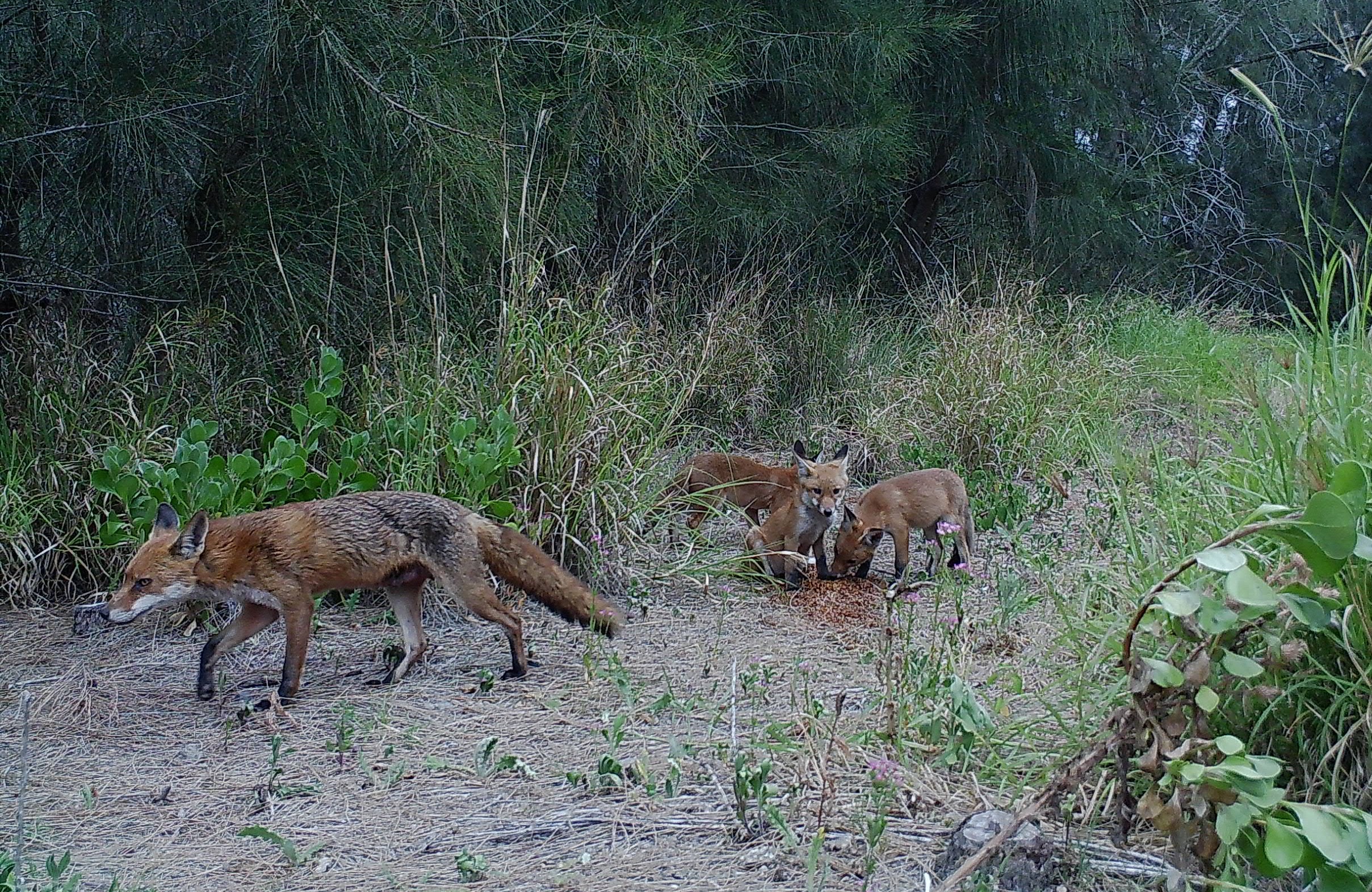
Bookoccino Discussion Events
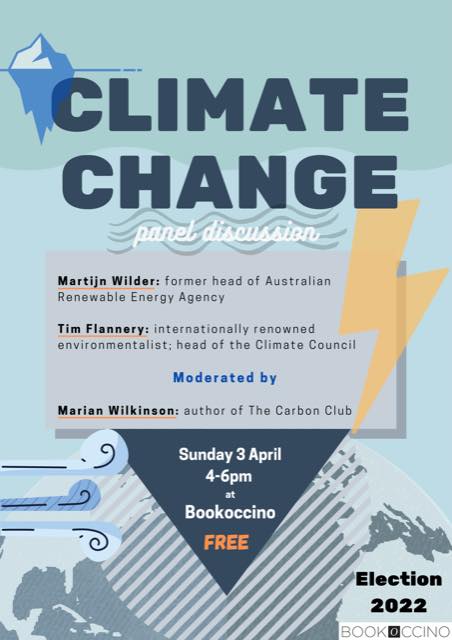

Long Reef Fishcare Free Guided Walks
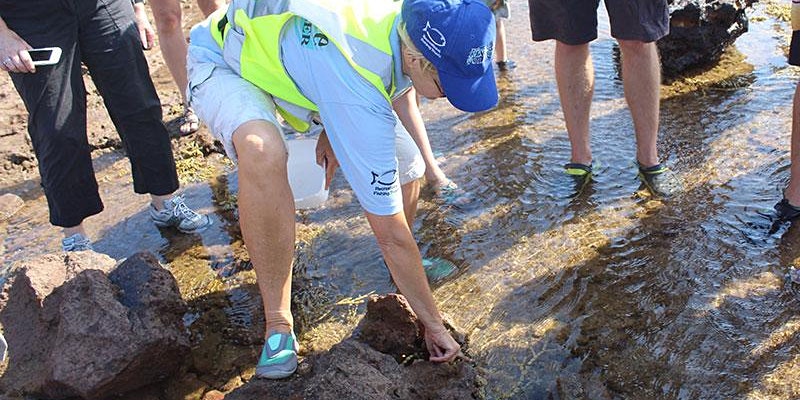
Friends Of Narrabeen Lagoon Catchment Forum: May 2022 - Speaker - Prof. Dennis Foley On The Aboriginal Heritage Of The Narrabeen Lagoon Catchment
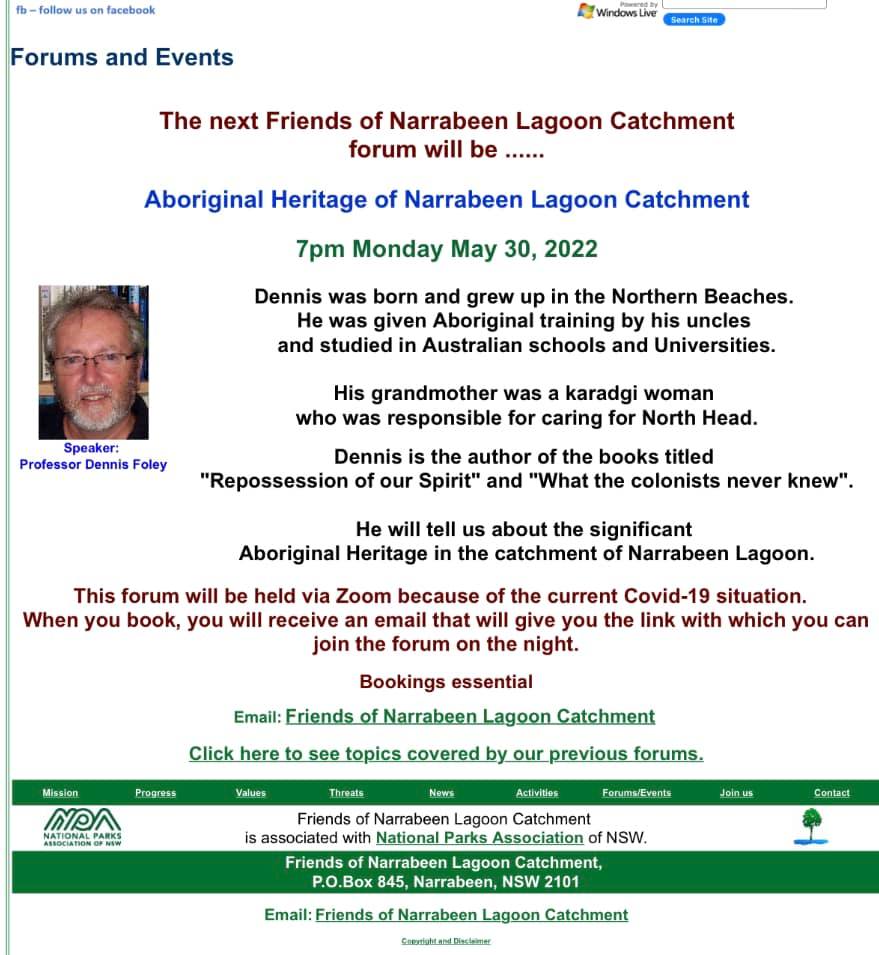
Pittwater Natural Heritage Association (PNHA) Autumn 2022 Newsletter
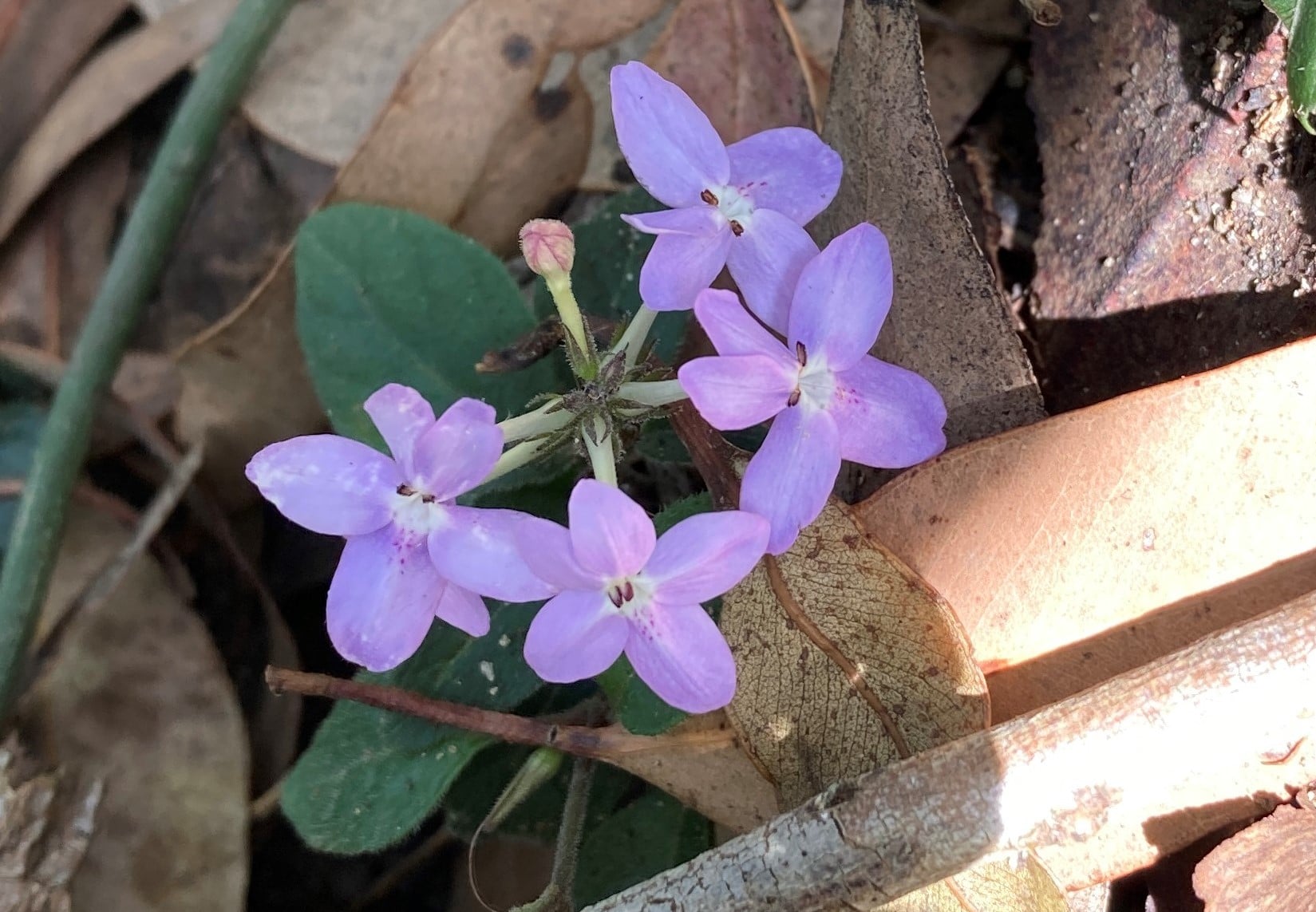
Sulphur-Crested Cockatoo Mucking About
The Sulphur-crested Cockatoo's normal diet consists of berries, seeds, nuts and roots. It also takes handouts from humans. Feeding normally takes place in small to large groups, with one or more members of the group watching for danger from a nearby perch.
Cockatoos often “play” with each other, performing intricate aerial manoeuvres or crazy antics, such as hanging upside down while perched, just for the “fun” of it - as this one was this week! These activities serve as a form of exercise for the birds, and strengthen social bonds. - Info: BirdLife Astralia
.jpg?timestamp=1648774048876)
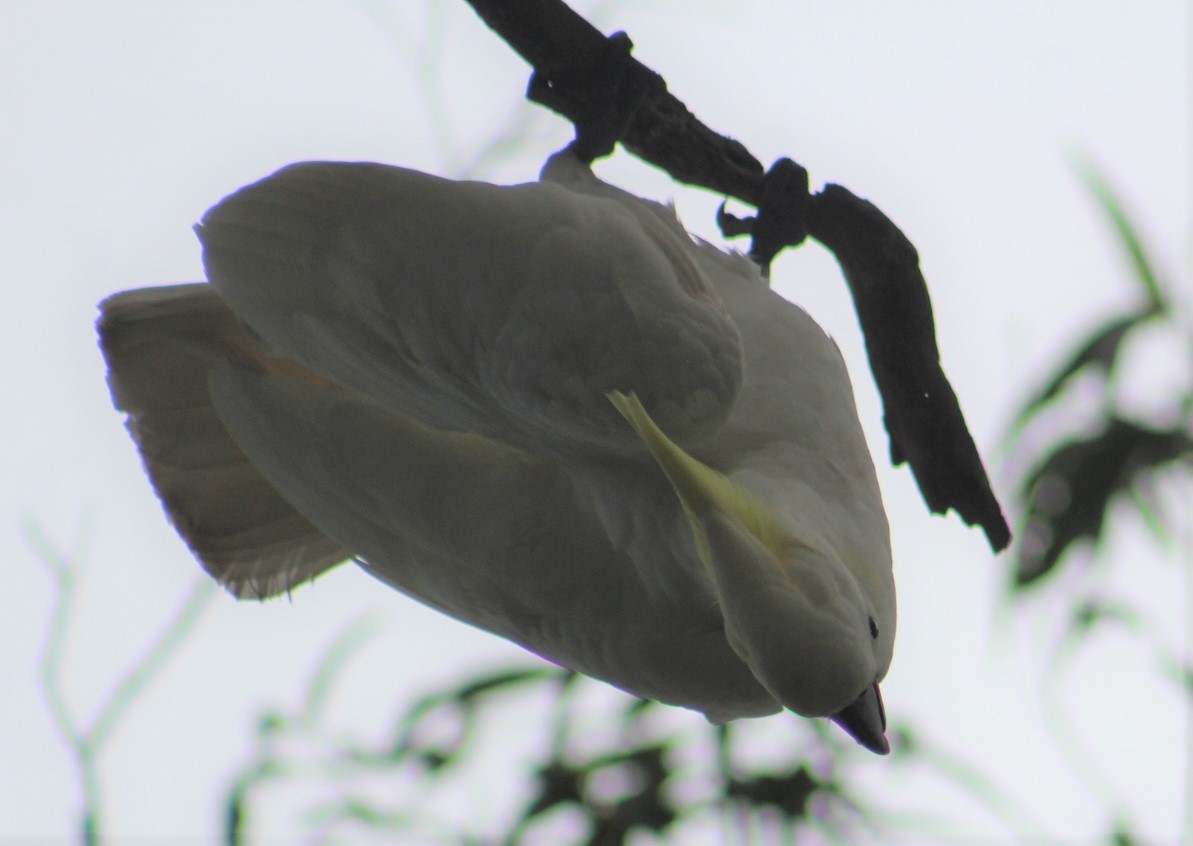
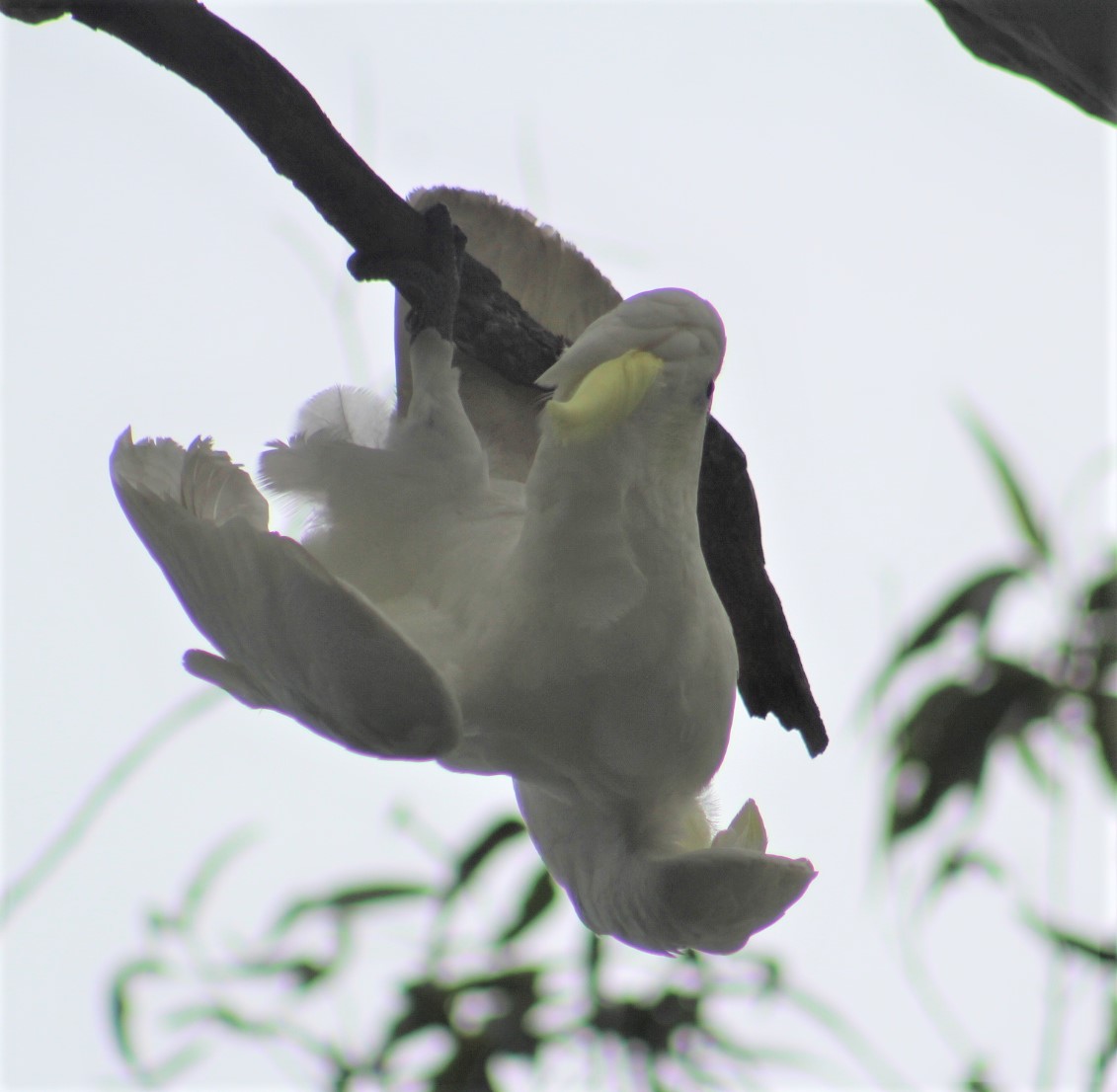
.jpg?timestamp=1648774149347)
.jpg?timestamp=1648774178595)
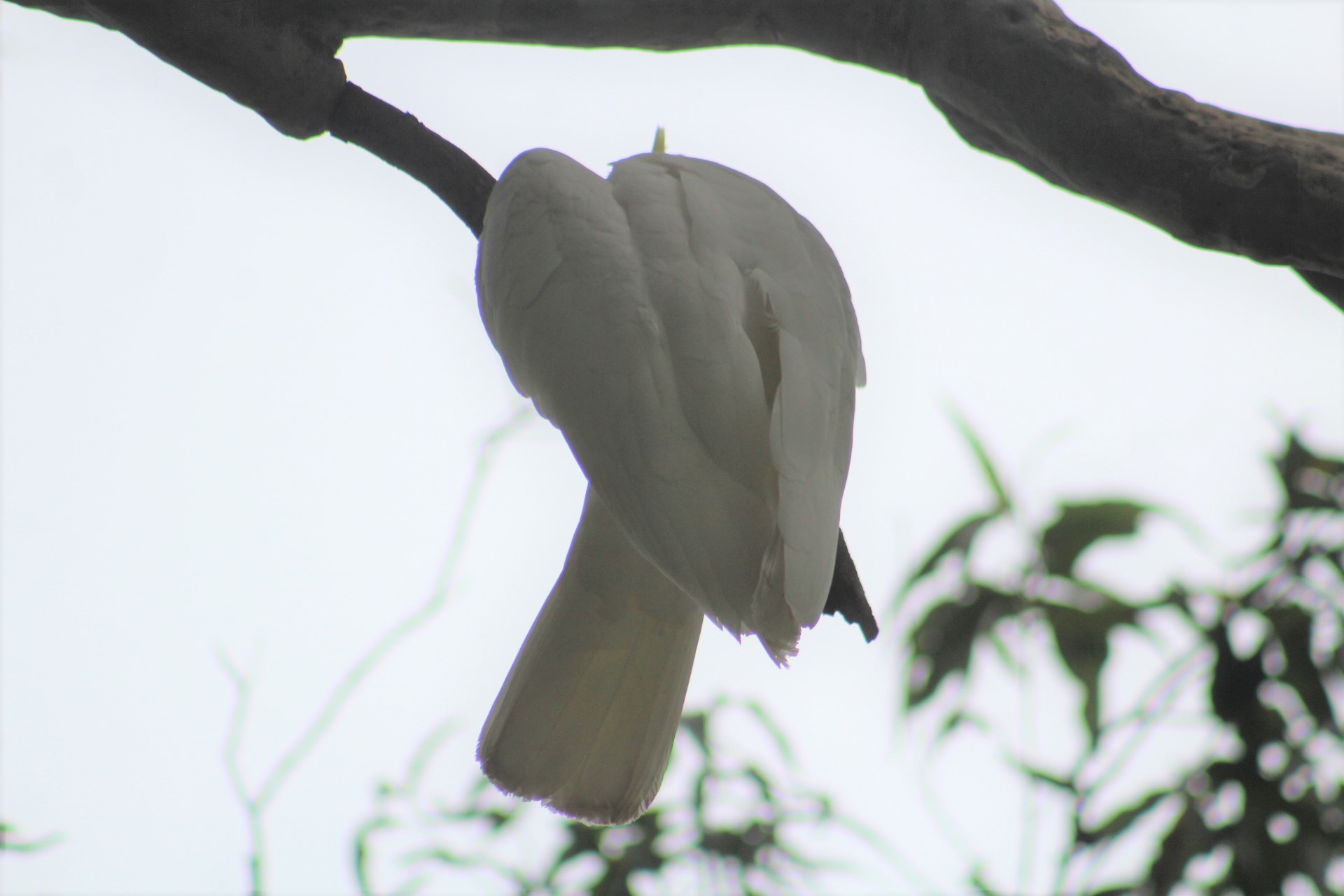
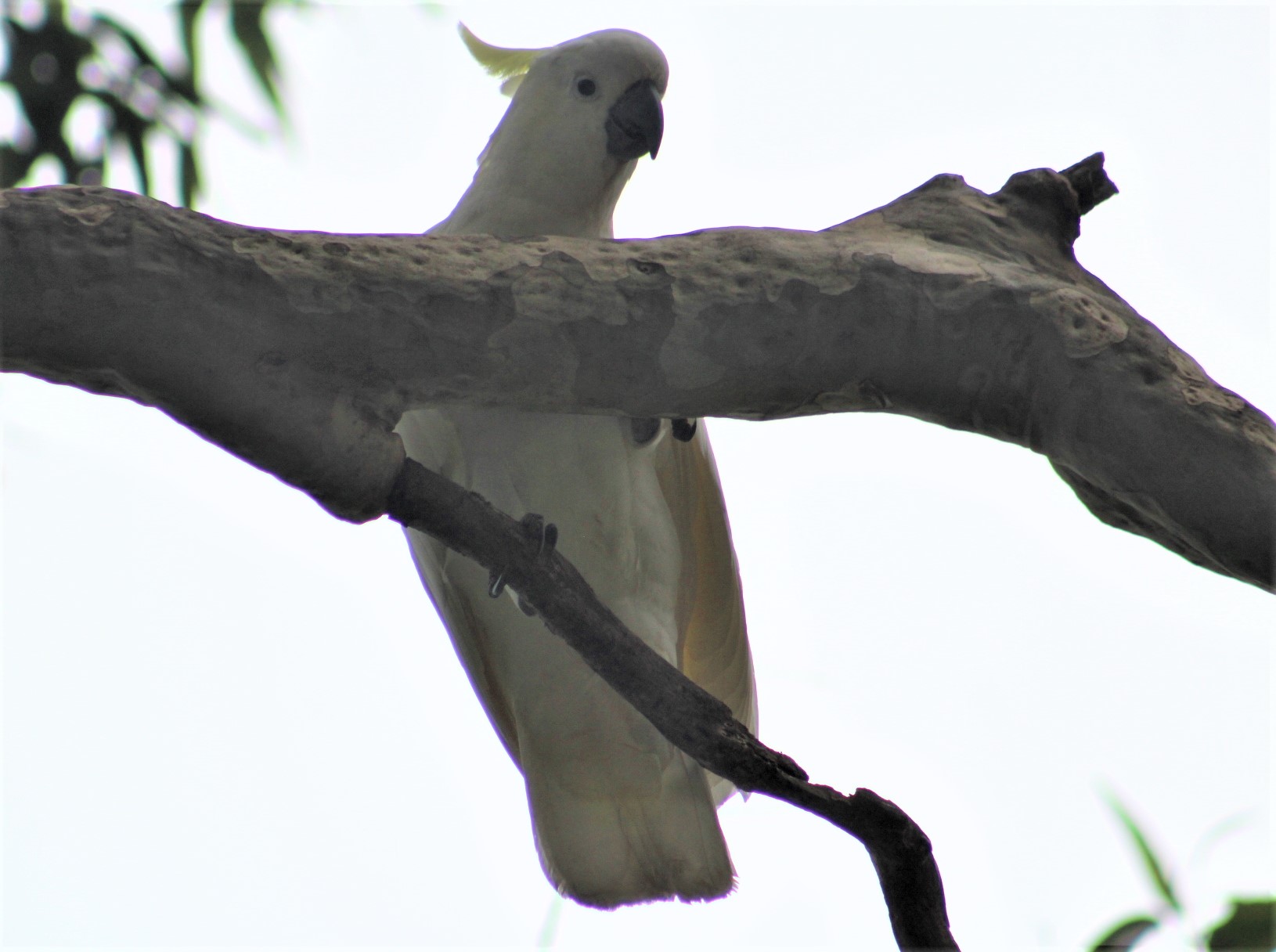
Photos: A J Guesdon, March 29, 2022
Long-Billed Corella
.jpg?timestamp=1648584010745)
.jpg?timestamp=1648584436823)
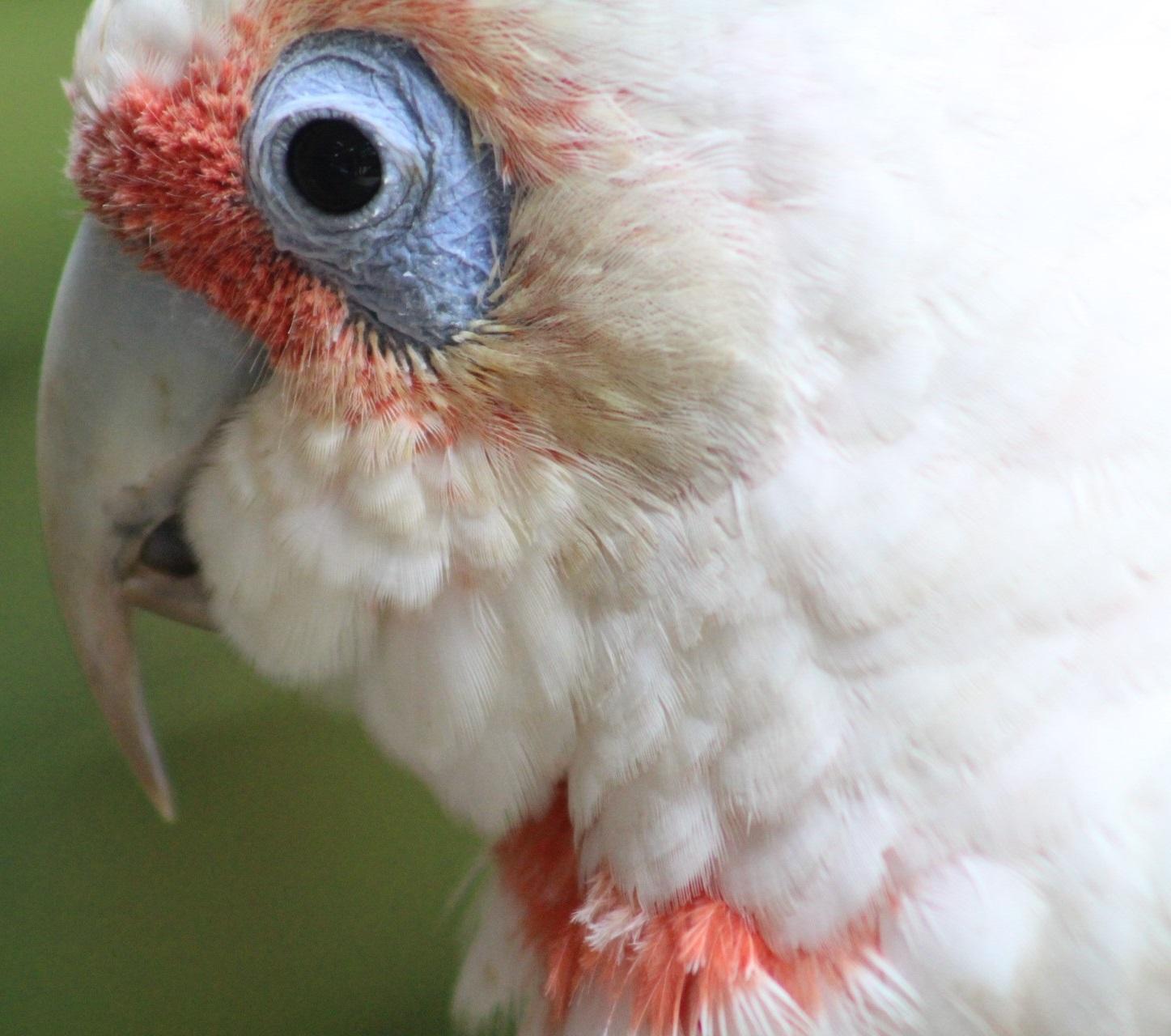
Aviaries + Possum Release Sites Needed

Asparagus Fern Flowering Now: Dispose Of This Weed To Stop The Spread
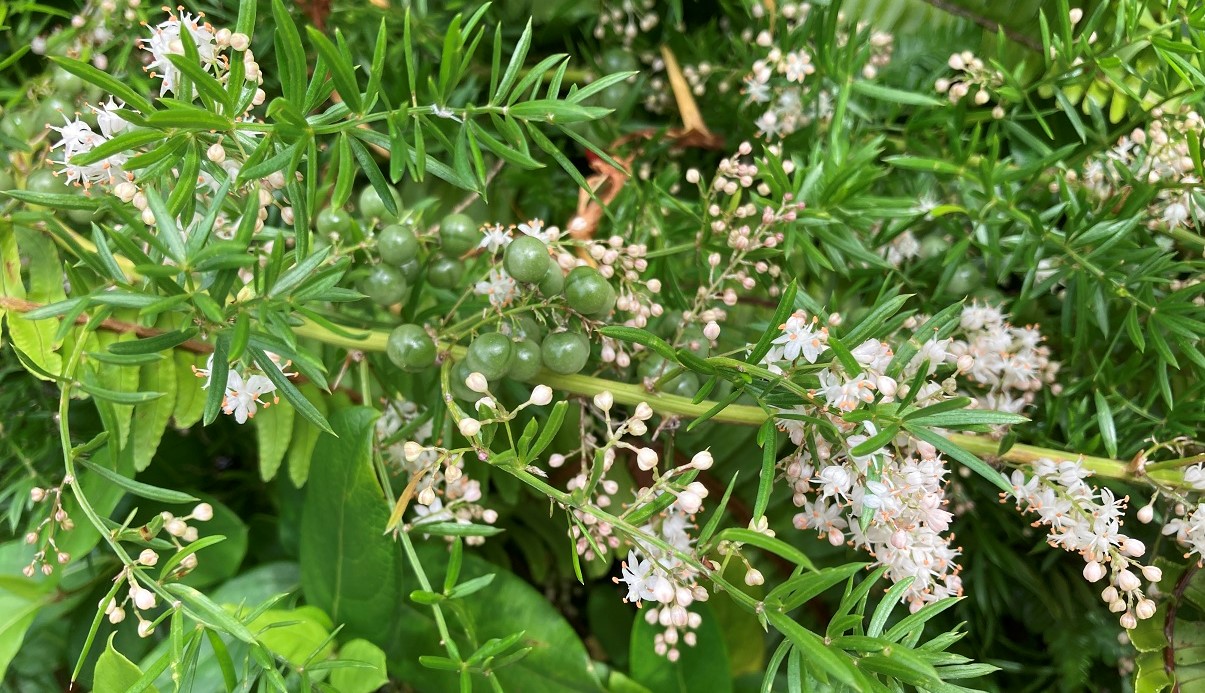
Sydney Wildlife Rescue: Helpers Needed

Bushcare In Pittwater
Where we work Which day What time
Avalon
Angophora Reserve 3rd Sunday 8:30 - 11:30am
Avalon Dunes 1st Sunday 8:30 - 11:30am
Avalon Golf Course 2nd Wednesday 3 - 5:30pm
Careel Creek 4th Saturday 8:30 - 11:30am
Toongari Reserve 3rd Saturday 9 - 12noon (8 - 11am in summer)
Bangalley Headland 2nd Sunday 9 to 12noon
Bayview
Winnererremy Bay 4th Sunday 9 to 12noon
Bilgola
North Bilgola Beach 3rd Monday 9 - 12noon
Algona Reserve 1st Saturday 9 - 12noon
Plateau Park 1st Friday 8:30 - 11:30am
Church Point
Browns Bay Reserve 1st Tuesday 9 - 12noon
McCarrs Creek Reserve Contact Bushcare Officer To be confirmed
Clareville
Old Wharf Reserve 3rd Saturday 8 - 11am
Elanora
Kundibah Reserve 4th Sunday 8:30 - 11:30am
 Mona Vale
Mona Vale Mona Vale Beach Basin 1st Saturday 8 - 11am
Mona Vale Dunes 2nd Saturday +3rd Thursday 8:30 - 11:30am
Newport
Bungan Beach 4th Sunday 9 - 12noon
Crescent Reserve 3rd Sunday 9 - 12noon
North Newport Beach 4th Saturday 8:30 - 11:30am
Porter Reserve 2nd Saturday 8 - 11am
North Narrabeen
Irrawong Reserve 2nd Saturday 2 - 5pm
Palm Beach
North Palm Beach Dunes 3rd Saturday 9 - 12noon
Scotland Island
Catherine Park 2nd Sunday 10 - 12:30pm
Elizabeth Park 1st Saturday 9 - 12noon
Pathilda Reserve 3rd Saturday 9 - 12noon
Warriewood
Warriewood Wetlands 1st Sunday 8:30 - 11:30am
Whale Beach
Norma Park 1st Friday 9 - 12noon
Western Foreshores
Coopers Point, Elvina Bay 2nd Sunday 10 - 1pm
Rocky Point, Elvina Bay 1st Monday 9 - 12noon
Gardens And Environment Groups And Organisations In Pittwater
Illegal Logging To Be Made Legal: New Powers Create Moving Goalposts On Logging Laws And Quash Community Rights To Consultation
- Legislation gives the power to Victorian senior bureaucrats or the Environment Minister to vary logging laws, without public consultation.
- By removing community rights to public consultation, the legislation is expected to undermine the ability of community groups and citizen scientists to hold government logging agency VicForests to account.
- The Victorian government intends to change an important legal principle known as the Precautionary Principle, this change is likely to impact several community court cases brought against VicForests for alleged breaches of logging laws.
New Hope’s Renewable Energy Shift Warmly Welcomed
Arrow’s Million Dollar Fine A Pittance For Its Owners But A Start For QLD
$4 Billion Industry Response To Hydrogen Hubs
Australia’s environment law doesn’t protect the environment – an alarming message from the recent duty-quashing climate case
Laura Schuijers, University of SydneyThe Federal Court recently quashed a duty of care owed by the environment minister to Australian children, to protect them from the harms of climate change.
The duty was attached to Australia’s federal environment law, the Environment Protection and Biodiversity Conservation (EPBC) Act. In reversing the decision that had established the duty, the new judgment shone a spotlight on the EPBC Act’s limitations. Or at least, it should have.
Much of the commentary around the judgment focused on lamenting the hands-off position the court took in its unwillingness to delve into so-called political territory.
Less attention was paid to a key take-home message: the EPBC Act gives the minister power to approve coal projects, even if they’ll have adverse effects.
It doesn’t, in a general sense, protect the environment from these effects. It doesn’t protect the public from consequent harm, even if deadly. And it doesn’t, actually, tackle climate change at all.
Alarmed? You should be.
Why The Duty Was Quashed
The appeal was heard by three judges, each with a different opinion on why there shouldn’t be a duty.
One key problem was that the class of victims won’t just include the children represented in the case. Currently unborn children will be affected too. The judges also found issues with the minister’s relationship with the children given the intervening steps that will lead to climate change, extreme weather events, and future harm.
To help resolve novel disputes, courts look to previous cases. One case that featured prominently was about protecting the public from contaminated oysters. In that case, a council wasn’t liable for failing to prevent water pollution that caused hepatitis infection. In another case, where there was no way of identifying the source of asbestos fibres that caused mesothelioma, it was found that whoever materially increased the risk of harm could be liable for it.
The fact these were considered the most relevant cases just goes to show how unprecedented the problem of climate change is. There was no case directly on point, which could help with the complex and cumulative cause-and-effects.
The Problem Of ‘Incoherence’
Another important problem for two of the three judges was that the duty wasn’t coherent – meaning consistent or compatible – with the EPBC Act. That’s because the EPBC Act doesn’t squarely address climate change or human safety, and yet the duty concerns precisely those two things.
For decades, it’s been recognised that humans depend on the environment for survival, and that a stable climate system is necessary for life as we know it.
The third judge thought the minister’s obligations, embedded in an environment protection framework, could therefore sit side by side with a duty of care. Our environment, he said, “is not just there to admire and objectify.”
But the other two were dissuaded by their view that the EPBC Act doesn’t in fact protect the environment in a general sense. Nor does it explicitly aim to mitigate climate change. It operates in a piecemeal way, rather than concerning ecosystems as a whole, or our dependency on them.
Can this really be how the EPBC Act operates in practice? Well, yes.
We heard this same message just recently via the ten-yearly, independent review of the legislation. It concluded that the EPBC Act is outdated, and not fit for the purpose of environment protection.
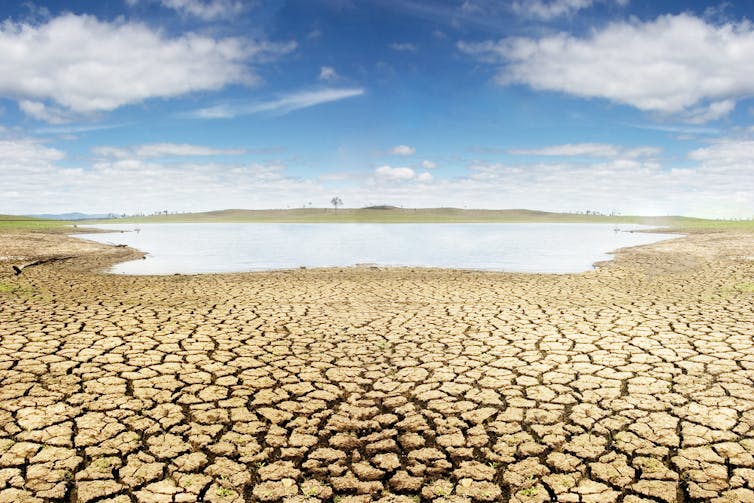
What Does The EPBC Act Do, Then?
For the most part, the EPBC Act is an impact assessment law. It’s triggered when specific environmental matters, like individual threatened species, are likely to be harmed by a proposed project (such as a coal mine). When it’s triggered, it sets in motion a procedural process that requires the minister to consider whether to approve the project given its impacts.
Year after year, nearly every single project that is put forward is approved. In fact, the coal mine that was the subject of the case was approved even before the appeal went to court. This explains why so many, including the independent review, feel the EPBC Act doesn’t really do enough to adequately safeguard against environmental loss.
The review recommended the introduction of science-backed environmental standards. If this happened, it may be easier for courts to judge ministerial decisions, with a legal reference point for what’s considered politically acceptable. It also recommended decision-making incorporate climate scenarios.
A Call To Action
Back in 2020, I wrote that whether the children win or lose, their case would make a difference.
Although not over yet (they have two more weeks to lodge an application to appeal to the High Court), it already has. It’s drawn attention to the fact that Australia doesn’t have a climate law to protect its children. That it has no law to protect against harmful floods and fire that have already manifest since the case began. And it’s forced the Federal Court to acknowledge the uncontested risks of climate change.
Let’s look at this case as a call to action. The Federal Court has essentially said it can’t act. Reading the judgment closely, there are hints to suggest the High Court might be able to, and that eventually, the law will have to evolve to manage complex causation.
But the decision certainly doesn’t mean the government can’t act. In fact, that’s exactly who the judges indicated must. ![]()
Laura Schuijers, Deputy Director, Australian Centre for Climate and Environmental Law and Lecturer in Law, University of Sydney
This article is republished from The Conversation under a Creative Commons license. Read the original article.
Poor policy and short-sightedness: how the budget treats climate change and energy in the wake of disasters

This year’s federal budget is characterised by an avalanche of immediate handouts in response to cost-of-living pressures, some sound initiatives and deferral of more fundamental decisions. This is precisely reflected in how the budget treats energy and climate change.
The A$1 billion to expand Australia’s low emission technology capabilities, such as green hydrogen, is welcome. But cuts to the fuel excise represent poor policy on fiscal and environmental grounds.
From the devastating bushfires of 2019-2020 to this year’s shocking floods, unprecedented climate-related disasters have wrought havoc across Australia.
It is deeply regretful that the budget and forward estimates do not specifically recognise the ongoing, and escalating, scale and the fiscal impact of these disasters.
Fuel Excise Is Poor Policy
For six months, the government will halve fuel excise to 22.1 cents per litre to offset soaring petrol prices. This short-term reduction will undoubtedly be welcomed by anyone with a petrol or diesel vehicle, and may provide the sort of political boost the government seeks ahead of the election.
Yet, it is poor fiscal policy. First, the outlook for global oil prices is as unpredictable as the outcome of the Ukraine war. That means the cut in fuel excise will quickly be either too strong a response or insufficient.
Second, restoring the level will not be politically simple. As a relief for households under financial stress, the measure is poorly targeted.
It is also a stark illustration of how motorists today would already be financially better off if Treasurer Josh Frydenberg was able to implement his proposed fuel efficiency standards in 2017, when he was the minister for energy and the environment.
At that time, the benefit to motorists was calculated to be more than $500 per year by 2025 – and that was based on prices below $1.50 per litre, well short of current levels above $2. And of course, we would have been making tangible progress on reducing emissions in the transport sector.
Funding Low-Emissions Technologies
Development and deployment of low-emission technologies – such as clean hydrogen, green steel and carbon capture and storage – will be critical to meeting Australia’s commitment to net-zero carbon emissions by 2050.
The government’s commitment of more than $1 billion to projects to support these technologies is welcome, as is the allocation of $84 million to support the development of microgrids.
These investments are generally aligned with the government’s technology investment roadmap, released in 2020. However, it would be better for these projects to be selected via an independent agency with criteria set by the government.
The government emphasises a “technology, not taxes” approach to bringing Australia’s emissions to net zero. But funding the net-zero transition from government coffers is not sustainable.
We need policies such as a price on carbon that encourage the market to deploy these technologies at scale. The recent history of such policies in Australia means this will be a big challenge for whoever is energy minister after the looming federal election.
Australia’s extensive renewable energy and critical minerals resources mean we could be a global leader in manufacturing, for instance, downstream processing or iron ore, copper, lithium and similar metals critical in a low emissions world.
So the $1 billion in the budget to boost our manufacturing capability is another step in the right direction.
But again, good governance should include a clear framework that determines which projects get selected. This process should be based primarily on Australia’s potential competitive advantage.
The primary source of such advantage lies in our renewable energy and minerals resources, while specific regions may also have advantages based on existing infrastructure such as ports and skilled workforces.
Investments in low-emission technologies and manufacturing is closely aligned with this budget’s focus on Australia’s regions.
Investment in new opportunities will be welcomed in the regions. It should be accompanied by an equally strong commitment to working with regional communities that may suffer job losses and other economic harms in the transition away from fossil fuel industries.
Short-Term Climate Thinking
Frydenberg’s budget acknowledged the devastation wrought in Australia by floods, drought and bushfires. Yet it failed to acknowledge the future cost of such disasters on the budget under climate change.
The budget includes measures to make regional Australia more resilient, to mitigate the impact of these disasters and support insurance coverage. But these are short-term commitments.
Even if we manage to stop global warming beyond 1.5℃ this century, the frequency and severity of natural disasters will only worsen. Australia is already feeling the damage.
The economic and fiscal consequences of these disasters will only increase. And there will be other risks from a changing climate such as rising health spending and reduced government revenues from key exports, including liquefied natural gas.
So What Should The Government Do Differently?
At the very least, the federal government should move to better understand and quantify the fiscal risks from climate change.
First, it should include some of the immediate risks of climate change in the budget’s “Statement of Risks”, which outlines the general fiscal risks that may affect the budget.
Second, it should adjust medium-term fiscal projection models to factor in declining revenue from fossil fuels, higher cost of debt, and higher expenditure on health and natural disaster supports.
Third, the longer-term impacts of climate change on the budget must be modelled. This should inform the next Intergenerational Report in 2025, which provides an economic outlook for Australia over coming decades.
Climate change ultimately challenges governments to reconsider their fiscal strategy. The many climate-related uncertainties make a strong case for preserving fiscal flexibility and firepower to cushion the direct impacts of climate change, including natural disasters.![]()
Tony Wood, Program Director, Energy, Grattan Institute
This article is republished from The Conversation under a Creative Commons license. Read the original article.
The Morrison government’s $50 million gas handout undermines climate targets and does nothing to improve energy security
Samantha Hepburn, Deakin UniversityTuesday night’s federal budget confirmed the Morrison government will spend A$50.3 million on gas projects in the Northern Territory, South Australia and the east coast.
This decision, it says, will support the completion of seven new “priority” gas projects. Energy Minister Angus Taylor says the government strongly backs natural gas and accused the opposition of being “willing to risk Australia’s energy security and investment in regional Australia to appease gas activists.”
However, the development of new fossil fuel projects is completely inconsistent with the broader goal of achieving net zero emissions by 2050 – and will not improve energy security.
Gas Extraction Drives Climate Change And Extreme Weather
Gas is a fossil fuel and a greenhouse gas. Emissions from the extraction, processing and export of gas contribute significantly to Australia’s carbon emissions.
Globally, there is growing recognition the energy sector must change. An International Energy Agency report last year made clear there can be no new oil, gas or coal development if the world is to have any chance of reaching net zero by 2050.
The methane found in natural gas is 25 times as potent as carbon dioxide at trapping heat in the atmosphere.
Funding new gas projects undermines Australia’s efforts to achieve an already unambitious climate target of 26-28% below 2005 levels by 2030.
Failing our climate target would breach the global goals of the Paris Agreement to limit the increase in global average temperatures to well below 2℃ above pre-industrial levels.
The consequences of global warming are catastrophic. Australia has had recent and profound experience of extreme climate events in the form of devastating bushfires and floods.
But What About Energy Security And Russian Gas?
The European Commission is phasing down two-thirds of Russian gas exports by the end of the year, in response to Russia’s invasion of Ukraine. This will create a gas shortfall.
Russia supplies nearly 40% of the EU’s gas consumption via a fixed pipeline infrastructure.
To phase this supply out, the EU will this year require 500 terrawatt hours of additional imports of liquified natural gas (LNG).
This will be difficult. Global markets are tight and LNG tends to be sold on long-term contracts. Alleviating the EU shortfall will require record imports of LNG over the European spring and summer period and a rapid upgrade of gas infrastructure.
In a recent pact between Europe and the US, the EU will receive an additional 11 million tons of LNG by the end of 2022.
It’s unclear where this LNG will come from. Much may be sourced from non-contracted stock destined for Asia.
However it’s acquired, the price of LNG exports will continue to rise. Indeed, the delivered price for LNG in Northwest Europe rose 29% in a day after Russian President Vladimir Putin announced his special military operation. And spot prices for LNG in Asia are trading at near record levels.
Australia is one of the world’s largest exporters of LNG, with most going to China, Japan and South Korea.
Given the lock-in contracts, Australia has little existing capacity to assist the EU. Australian gas producers are, however, benefiting from the higher global prices for LNG exports caused by the EU shortfall.
Woodside, Santos and Oil Search have all registering significant gains in their share prices.
Complete Nonsense
Taylor says spending $50.3 million of public money for new gas projects will:
accelerate priority projects and ensure Australia does not experience the devastating impacts of a gas supply shortfall as seen in Europe.
This is complete nonsense.
Australia will never face a shortfall like Europe because it’s not import-dependent. We have plenty of gas.
The issue for Australia is regulating the export of gas to ensure a sufficient domestic supply.
If the federal government wanted to improve Australia’s energy security, it would force gas producers in the east coast market to reserve a percentage for domestic consumption.
And it would actually use the Australian Domestic Gas Security mechanism. The measure was introduced to ensure gas supplies meet forecast energy needs, but has never been triggered.
An Uncertain Future
Funding seven gas priority projects is also inconsistent with the conclusions of the 2022 Gas Statement of Opportunities, recently released by the Australian Energy Market Operator (AEMO).
This statement argues the future path for the gas sector in Australia is uncertain because the pace and impact of a transforming energy sector upon the gas system remains unclear.
In the short term, this statement suggests funding new infrastructure will not alleviate domestic supply concerns because it won’t be running in time.
In the longer term, the statement forecasts a gradual decline in domestic gas demand as consumers inevitably shift from gas to electricity or zero-emission fuels.
Contrary To Australia’s Climate Targets
Funding seven new fossil fuel projects is fundamentally contrary to Australia’s climate targets.
These projects will not improve Australia’s energy security or assist the EU with its supply difficulties.
Nor do they cohere with AEMO’s longer term conclusions about the future of the gas sector.
Prime Minister Scott Morrison has argued gas projects are needed to generate new dispatchable electricity which can be ramped up quickly when needed, making new gas projects integral to a national pandemic recovery plan.
But Kerry Schott, the former head of the Energy Security Board, disagrees. She’s made it clear there is an abundance of cheaper, cleaner alternatives.
Schott is right. This is where public money should be directed – to projects that represent the future, not the polluting past.![]()
Samantha Hepburn, Director of the Centre for Energy and Natural Resources Law, Deakin Law School, Deakin University
This article is republished from The Conversation under a Creative Commons license. Read the original article.
Federal budget: $160 million for nature may deliver only pork and a fudge
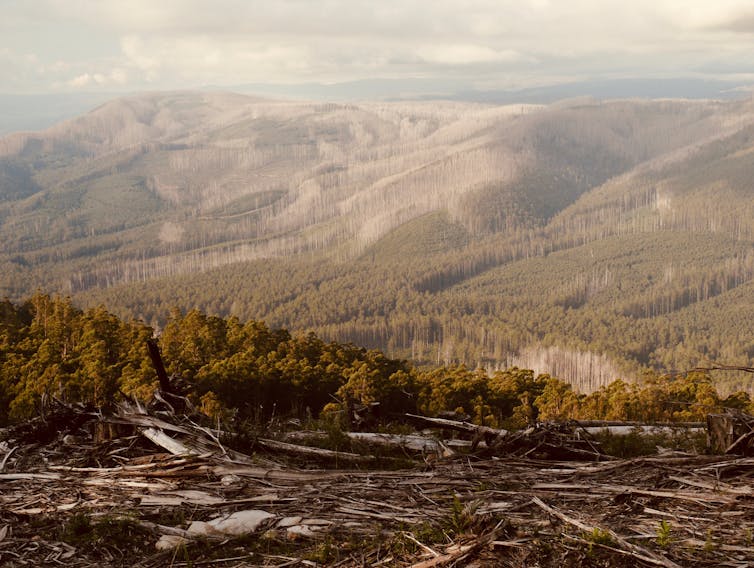
Treasurer Josh Frydenberg’s cash-splash budget has a firm eye on the upcoming federal election. In the environment portfolio, two spending measures are worth scrutinising closely.
First is a A$100 million round of the Environment Restoration Fund – one of several grants programs awarded through ministerial discretion which has been found to favour marginal and at-risk electorates.
Second is $62 million for up to ten so-called “bioregional plans” in regions prioritised for development. Environment Minister Sussan Ley has presented the measure as environmental law reform, but I argue it’s a political play dressed as reform.
It’s been more than a year since Graeme Samuel’s independent review of Australia’s environment law confirmed nature on this continent is in deep trouble. It called for a comprehensive overhaul – not the politically motivated tinkering delivered on Tuesday night.

A Big Barrel Of Pork?
The Environment Restoration Fund gives money to community groups for activities such as protecting threatened and migratory species, addressing erosion and water quality, and cleaning up waste.
The first $100 million round was established before the 2019 election. In March 2020 it emerged in Senate Estimates that the vast majority had been pre-committed in election announcements. In other words, it was essentially a pork-barelling exercise.
The grants reportedly had no eligibility guidelines and were given largely to projects chosen and announced as campaign promises – and mostly in seats held or targeted by the Coalition.
Given this appalling precedent, the allocation of grants under the second round of the fund must be watched closely in the coming election campaign.

A Tricky Senate Bypass
Australia’s primary federal environment law is known as the Environmental Protection and Biodiversity Conservation (EPBC) Act.
Under provisions not used before, the need for EPBC Act approval of developments such as dams or mines can be switched off if the development complies with a so-called “bioregional plan”.
Bioregions are geographic areas that share landscape attributes, such as the semi-arid shrublands of the Pilbara.
In theory, bioregional plans deliver twin benefits. They remove the need for federal sign-off — a state approval will do the job – and so eliminate duplication. And national environmental interests are maintained, because state approvals must comply with the plans, which are backed by federal law.
But the government’s record strongly suggests it’s interested only in the first of these benefits.
Since the Samuel review was handed down, the government has largely sought only to remove so-called “green tape” – by streamlining environmental laws and reducing delays in project approvals.
Bills to advance these efforts have been stuck in the Senate. Now, the government has opted to fund bioregional plans which, as an existing mechanism, avoid Senate involvement.
Meanwhile, the government has barely acted on the myriad other problems Samuel identified in his review of the law, releasing only a detail-light “reform pathway”.

A Rod For The Government’s Back?
Ironically, bioregional plans may create more problems for the government than they solves.
First, the surveys needed to prepare the plans are likely to spotlight the regional manifestations of broad environmental problems, such as biodiversity loss.
And the EPBC Act invites the environment minister to respond to such problems in the resulting plans. This implies spelling out new investments or protections – challenging for the government given its low policy ambition.
The federal government would also need to find state or territory governments willing to align themselves with its environmental politics, as well as its policy.
Of the two Coalition state governments, New South Wales’ is significantly more green than the Morrison government, while Tasmania is not home to a major development push.
Western Australia’s Labor government has been keen to work with Morrison on streamlining approvals, but fudging environmental protections is another thing altogether. And Labor governments, with a traditionally more eco-conscious voter base, are particularly vulnerable to criticism from environment groups.
The government may fudge the bioregional plans so they look good on paper, but don’t pose too many hurdles for development. Such a fudge may be necessary to fulfil Morrison’s obligations to the Liberals’ coalition partner, the Nationals.
Tuesday’s budget contained more than $21 billion for regional development such as dams, roads and mines – presumably their reward for the Nationals’ support of the government’s net-zero target.
Bioregional plans containing strict environmental protections could constrain or even strangle some of these developments.

But on the other hand, the government may be vulnerable to court challenges if it seeks to push through bioregional plans containing only vague environmental protection.
For a government of limited environmental ambition bioregional plans represent more a political gamble than a reform.
Morrison has clearly rejected the safer option of asking Ley to bring forward a comprehensive response to the Samuel review, casting streamlining as part of a wider agenda.
Such a reform would have better Senate prospects and created room to negotiate.
Morrison could also have promised to reintroduce the streamlining bills after the election. But he must have concluded that the measure has no better chance of getting through the next Senate than this one.
What Price Fundamental Reform?
If the government successfully fudges bioregional plans, the result would be watered-down national environmental protections.
This would run completely counter to the key message of the Samuel review, that to shy away from fundamental law reforms:
“is to accept the continued decline of our iconic places and the extinction of our most threatened plants, animals and ecosystems”.
Clearly, good reform is too expensive — politically as well as fiscally — for this budget.![]()
Peter Burnett, Honorary Associate Professor, ANU College of Law, Australian National University
This article is republished from The Conversation under a Creative Commons license. Read the original article.
Another mass bleaching event is devastating the Great Barrier Reef. What will it take for coral to survive?
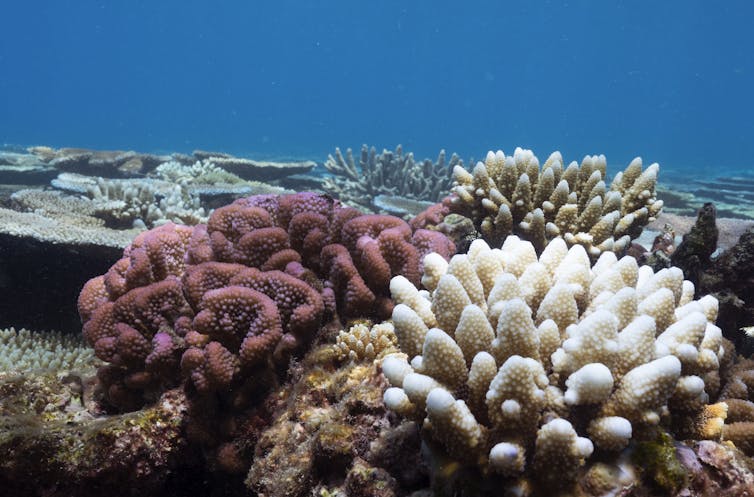
It’s official: the Great Barrier Reef is suffering its fourth mass bleaching event since 2016. We dived into the reef yesterday and saw the unfolding crisis firsthand.
Descending beneath the surface at John Brewer Reef near Townsville, our eyes were immediately drawn to the iridescent whites, blues and pinks of stressed corals among the deeper browns, reds and greens of healthier colonies.
It’s a depressing, but all-too-familiar feeling. A sense of: “here we go again”
This is the first time the reef has bleached under the cooling conditions of the natural La Niña weather pattern, which shows just how strong the long-term warming trend of climate change is. Despite the cooling conditions, 2021 was one of the hottest years on record.
When coral bleaches, it is not dead – yet. Coral reefs that suffer widespread bleaching can still recover if conditions improve, but it’s estimated to take up to 12 years. That is, if there’s no new disturbance in the meantime, such as a cyclone or another bleaching event.
So what conditions are needed for coral recovery? And under what conditions will coral die?
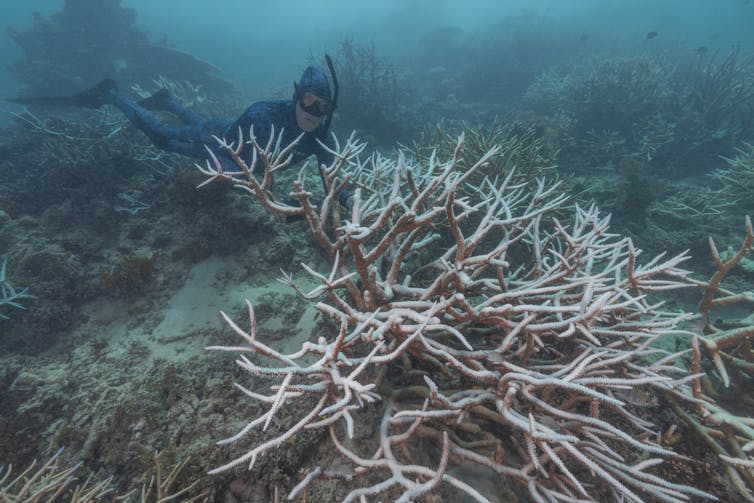
What It Takes For Coral To Die
Whether a coral can survive bleaching depends on how long conditions remain stressful, and to what level. What’s more, some species are more sensitive than others, such as branching acropora corals, especially if they’ve bleached previously.
If water remains too warm for too long, corals will eventually die. But if the water temperature drops and the ultraviolet light becomes less intense, then the coral may recover and survive.
While the average sea temperatures in the reef currently remain above average, they’ve shown signs of cooling to a more amenable average for coral survival.
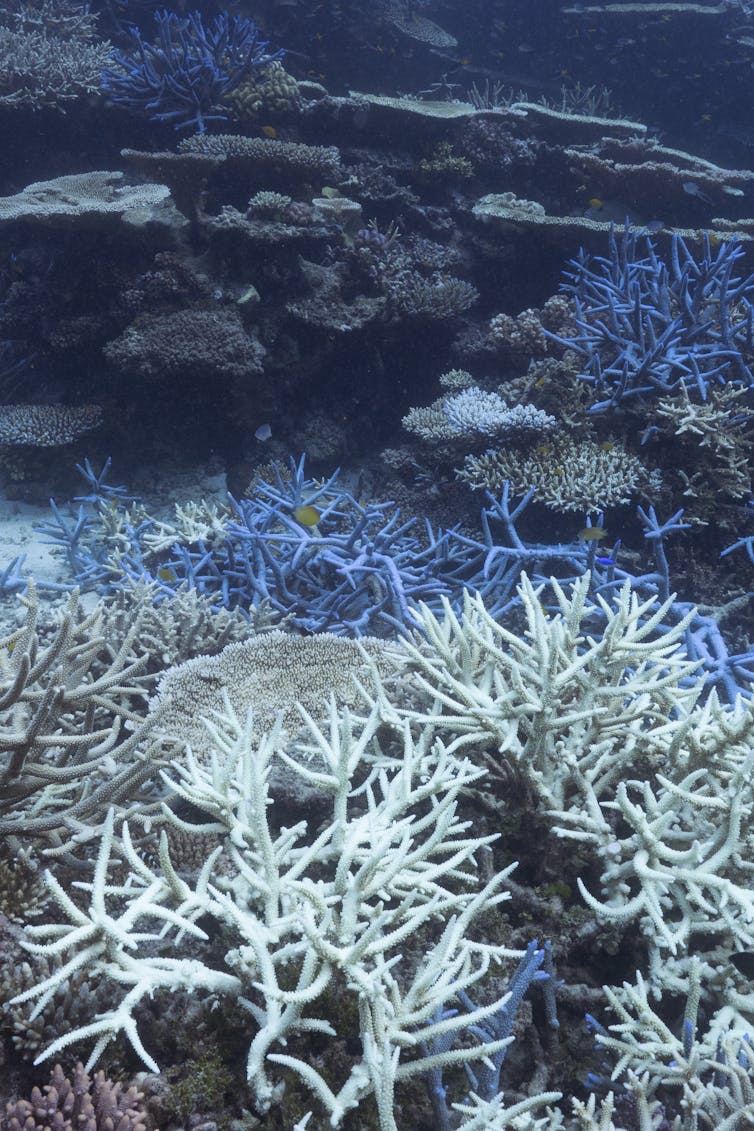
Sea temperatures in Cleveland Bay, near Townsville, were above 31℃ in early March, but thankfully have now reduced to below 29℃. Similarly in the Whitsundays, Hardy Reef experienced temperatures as high as 30℃ but has receded to nearer 26℃ in the past few weeks.
If coral does survives a bleaching event, it is still impacted physiologically, as bleaching can slow growth rates and reduce reproductive capacity. Surviving colonies also become more susceptible to other challenges, such as disease.
Signs Of Stress
Survival also depends on each individual coral’s own resilience: its ability to cope with higher temperatures and increased ultraviolet stress.
For example, fast growing branching corals are the most susceptible to bleaching and are generally the first to die. Long-lived massive corals, such as porites, may be less susceptible to bleaching, show minimal effects of bleaching and recover quicker.
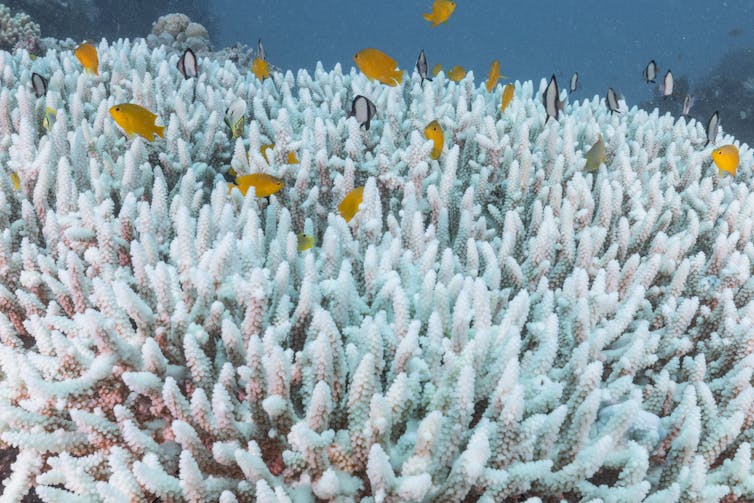
Corals can use fluorescent pigments to shield themselves from excessive ultraviolet radiation – a bit like sunscreen that lets coral manage, filter and attempt to regulate the incoming light.
To the casual observer, fluorescent corals look bright purple, pink, blue and yellow. For reef scientists, fluorescence is an obvious signal that corals are stressed and struggling to regulate their internal balance. As we’ve seen, white and fluorescent corals are currently a common sight on many reefs.
Most coral species have fluorescent pigments in their tissue. Some are always visible to humans, especially branching corals with bright blue or pink hues on the their branch tips.
Others are never visible, and some are visible only during times of heat stress when coral colonies boost these fluorescent pigments to fight the increasing ultraviolet intensity in warmer seas.
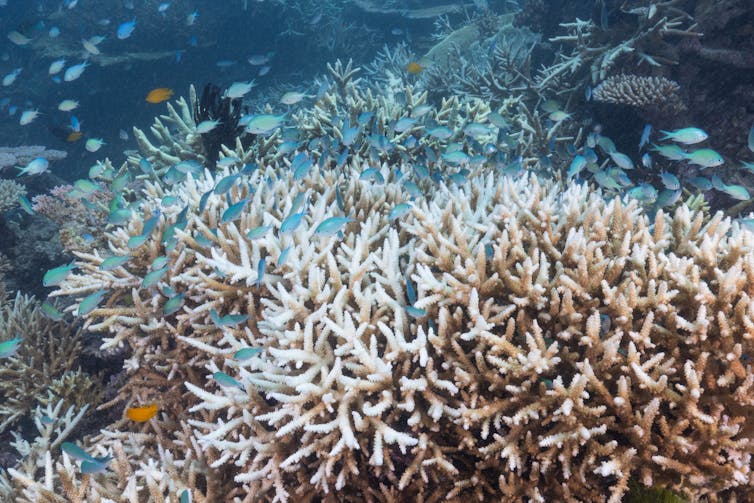
Coral Can’t Adapt Fast Enough
Scientists measure heat stress on corals using a metric called “degree heating weeks”.
One degree heating week is when the temperature at a given location is more than 1℃ over the historical maximum temperature. If the water is 2℃ above the historical maximum for one week, this would be considered two degree heating weeks.
Generally speaking, at four degree heating weeks, scientists expect to see signs of stress and coral bleaching. It usually takes eight degree heating weeks for coral to die.
According to Bureau of Meteorology data, many parts of the Great Barrier Reef, such as off Cairns and Port Douglas, currently remain in the window of between four and eight degree heating weeks. But some areas, near Townsville and the Whitsundays, are experiencing severe bleaching stress beyond eight degree heating weeks.
While we hope many coral reefs will recover from this round of bleaching, the long term implications cannot be understated.
When corals bleach, they eject their zooxanthellae – single-celled algae that gives coral colour and energy. Some corals may regain their zooxanthellae after the bleaching event is over, but this usually takes between three and six months.
To make matters worse, full reef recovery requires no new bleaching events or other disturbances in the years that follow. Given the reef has bleached six times since the late 1990s, alongside global climate trajectories, this would appear an unlikely scenario.
While some corals may learn to cope with these new conditions by potentially acquiring more heat-tolerant zooxanthellae, the reality is that change is happening too fast for coral to adapt via evolution.
The severe bleaching in previous years also means future events may appear less severe. But this is simply because most of the heat sensitive corals have already died, potentially resulting in a lower probability of widespread severe bleaching.
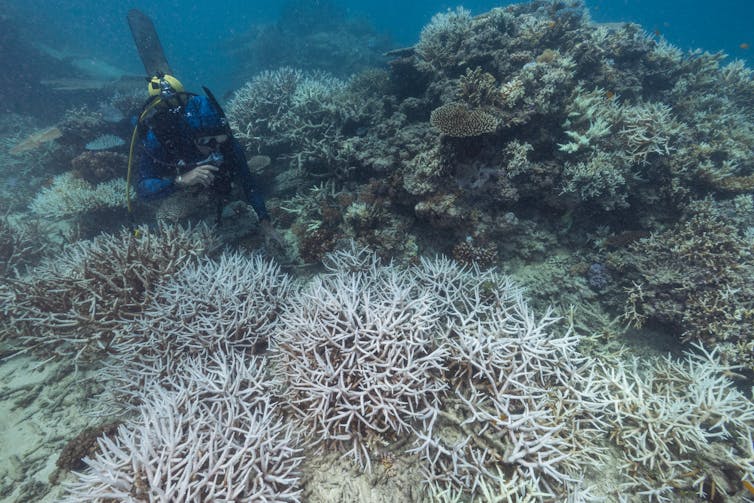
We Need Stronger Climate Policies And Action
Australia has the world’s best marine scientists and marine park managers. And yet, our policies are rated “highly insufficient”, according to the latest Climate Action Tracker.
If global emissions continue unabated, Australia may warm by 4℃ or more this century. Under this scenario, widespread coral bleaching is likely on the Great Barrier Reef every year from 2044 onward.
There has been some glimmers of hope in federal policy in recent years, such as statements recognising the existential threat climate change poses to coral reefs. Despite this recognition, substantial action is lacking, as any policy without action on climate change is ineffective.
If the federal government, reef businesses and individuals are to show leadership and maintain healthy reefs, we need to work together and take rapid, drastic action to reduce carbon emissions.
Committing to a stronger emissions target for 2030 and a carbon neutral footprint for all Great Barrier Reef businesses would go a long way to exhibiting the kind of change required if coral reefs, in their current form, are to survive into the future. ![]()
Adam Smith, Adjunct Associate Professor, James Cook University and Nathan Cook, Marine Scientist, James Cook University
This article is republished from The Conversation under a Creative Commons license. Read the original article.
Conger ice shelf has collapsed: what you need to know, according to experts
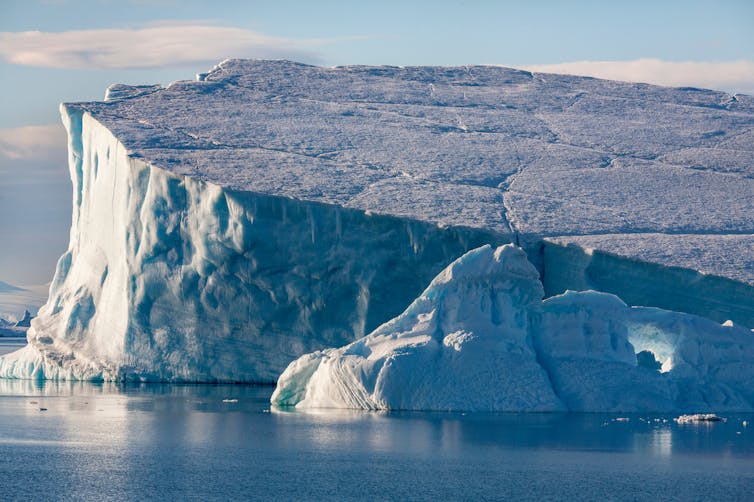
East Antarctica’s Conger ice shelf – a floating platform the size of Rome – broke off the continent on March 15, 2022. Since the beginning of satellite observations in the 1970s, the tip of the shelf had been disintegrating into icebergs in a series of what glaciologists call calving events.
Conger was already reduced to a 50km-long and 20km-wide strip attached to Antarctica’s vast continental ice sheet at one end and the ice-covered Bowman Island at the other. Two calving events on March 5 and 7 reduced it further, detaching it from Bowman and precipitating its final collapse a week later.
The world’s largest ice shelves fringe Antarctica, extending its ice sheet into the frigid Southern Ocean. Smaller ice shelves are found where continental ice meets the sea in Greenland, northern Canada and the Russian Arctic. By restraining how much the grounded ice flows upstream, they can control the loss of ice from the interior of the sheet into the ocean. When an ice shelf like Conger is lost, the grounded ice once kept behind the shelf may start to flow faster as the restraining force of the ice shelf is lost, resulting in more ice tumbling into the ocean.
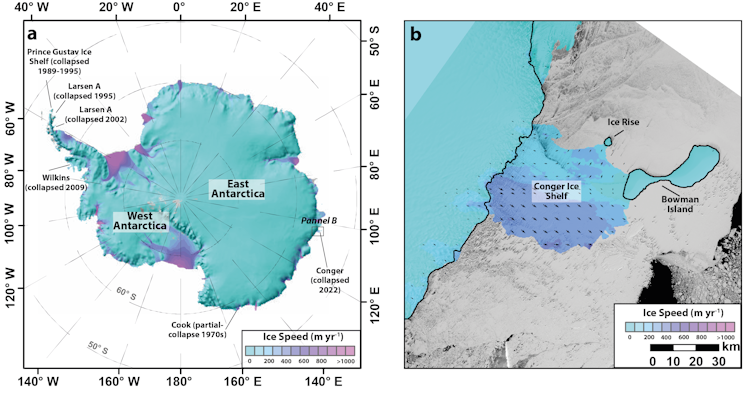
What Caused The Collapse?
Ice shelves are sometimes referred to as the “safety band” of Antarctica because they buttress the upstream flow of ice from the bordering ice sheet. Little of the Antarctic ice sheet melts at its surface, where snow piles up. Instead, most of the continent loses ice through calving and melting along the underside of the floating ice shelves.
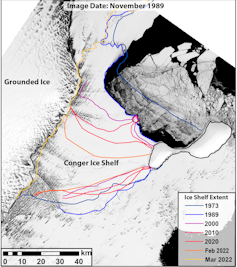
The breaking and detachment of parts of ice shelves is a natural process: ice shelves generally go through cycles of slow growth punctuated by isolated calving events. But in recent decades, scientists have seen several large ice shelves undergoing total disintegration.
Along the Antarctic Peninsula, the whip-like land mass which extends from the West Antarctic mainland, these include Prince Gustav ice shelf (from 1989 to 1995), Larsen A ice shelf (1995), Larsen B (2002), and Wilkins ice shelf (2008 to 2009). In East Antarctica, where Conger once was, Cook ice Shelf was partially lost in the 1970s. Taken together, this series of collapses suggests that some underlying environmental conditions, such as ocean and atmosphere temperatures, are changing.
It is too soon to say what triggered the collapse of the Conger ice shelf, but it appears unlikely to have been caused by melting at the surface – there are no indications of any ponds atop the ice shelf. The most recent sequence of events also preceded the record high air temperatures recorded in Antarctica on March 18.
What The Future Holds
As glaciologists, we see the impact of global warming on Antarctica in increasing ice loss with time. And what happens in Antarctica does not stay in Antarctica.
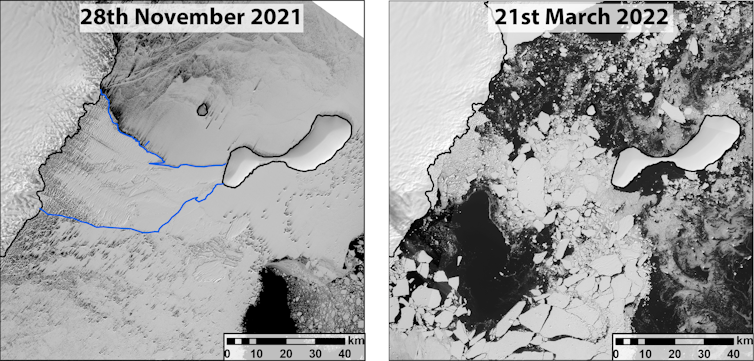
The consequences of the Conger ice shelf collapse are unlikely to be of global significance as the catchment area feeding ice into the former shelf is small. And due to its shape, the Conger ice shelf was most likely not a significant buttress to the flow of ice upstream.
But global warming is making events like this more likely. And as more and more ice shelves around Antarctica collapse, ice loss will increase, and with it global sea levels. There is enough ice in the West Antarctic ice sheet to raise sea levels by several meters, and if East Antarctica starts losing significant amounts of ice, the impact on sea levels could be measured in tens of meters.
Not everything that happens in nature is due to global warming alone. Antarctica loses mass through the discharge of icebergs and waxing and waning ice shelves as part of a natural cycle. But what we are seeing now, with the collapse of the Conger ice shelf and others, is the continuation of a worrying trend whereby Antarctic ice shelves undergo area-wide collapse one after another.

Don’t have time to read about climate change as much as you’d like?
Get a weekly roundup in your inbox instead. Every Wednesday, The Conversation’s environment editor writes Imagine, a short email that goes a little deeper into just one climate issue. Join the 10,000+ readers who’ve subscribed so far.![]()
Hilmar Gudmundsson, Professor of Glaciology, Northumbria University, Newcastle; Adrian Jenkins, Professor of Ocean Science, Northumbria University, Newcastle, and Bertie Miles, Leverhulme Early Career Fellow, Geosciences, University of Edinburgh
This article is republished from The Conversation under a Creative Commons license. Read the original article.
No, sunscreen chemicals are not bleaching the Great Barrier Reef
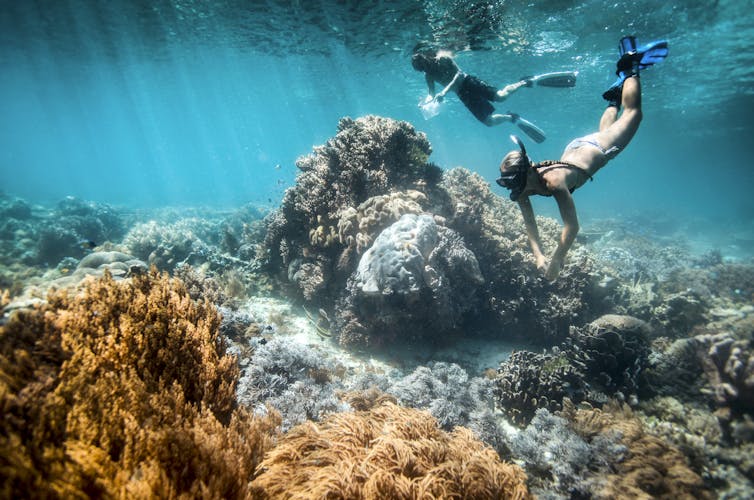
For the sixth time in the last 25 years, the Great Barrier Reef is bleaching. During bleaching events, people are quick to point the finger at different causes, including sunscreen.
Why sunscreen? Some active ingredients can wash off snorkelers and into the reef, contaminating the area. So could this be the cause of the Barrier Reef’s bleaching?
In a word, no. I reviewed the evidence for sunscreen as a risk to coral in my new research, and found that while chemicals in sunscreen pose a risk to corals under laboratory conditions, they are only found at very low levels in real world environments.
That means when coral bleaching does occur, it is more likely to be due to the marine heatwaves and increased water temperatures that have come with climate change, as well as land-based run-off.
Why Have We Been Concerned Over The Environmental Impact Of Sunscreens?
After we apply sunscreen, the active ingredients can leach from our skin into the water. When we shower after swimming, soaps and detergents can further strip the these sunscreen chemicals off and send them into our waste water systems. They pass through treatment facilities, which cannot effectively remove them, and end up in rivers and oceans.

It’s no surprise, then, that sunscreen contamination has been detected in freshwater and seas across the globe, from Switzerland to Brazil and Hong Kong. Contamination is highest in the summer months, consistent with when people are more likely to go swimming, and peaks in the hours after people have finished swimming.
Four years ago, the Pacific island nation of Palau made world headlines by announcing plans to ban all sunscreens that contain specific synthetic active ingredients due to concern over the risk they posed to corals. Similar bans have been announced by Hawaii, as well a number of other popular tourist areas in the Americas and Caribbean.
These bans are based on independent scientific studies and commissioned reports which have found contamination from specific active ingredients in sunscreen in the water at beaches, rivers and lakes.
Notably, the nations and regions which have banned these active ingredients, like Bonaire and Mexico, have local economies heavily reliant on summer tourism. For these areas, coral bleaching is not only an environmental catastrophe but an economic loss as well, if tourists choose to go elsewhere.
How Do We Know Sunscreen Isn’t The Issue?
So if contamination concerns over these active ingredients are warranted, how can we be sure they’re not the cause of the bleaching in the Great Barrier Reef?
Put simply, the concentrations of the chemicals are too low to cause the bleaching.
The synthetic ingredients used in most products are highly hydrophobic and lipophilic. That means they shun water and love fats, making them hard to dissolve in water. They’d much prefer to stay in the skin until they break down.
Because of this, the levels found in the environment are very low. How low? Think nanograms per litre (a nanogram is 0.000000001 grams) or micrograms per litre (a microgram is 0.00001 grams). Significantly higher levels are found only in waste water treatment sludge and some sediments, not in the water itself.
So how do we reconcile this with studies showing sunscreen can damage corals? Under laboratory conditions, many active ingredients in sunscreen have been found to damage corals as well as mussels, fish, small crustaceans, and plant-like organisms such as algae and phytoplankton.
The key phrase above is “under laboratory conditions”. While these studies would suggest sunscreens are a real threat to reefs, it’s important to know the context.
Studies like these are usually conducted under artificial conditions which can’t account for natural processes. They usually don’t account for the breakdown of the chemicals by sunlight or dilution through water flow and tides. These tests also use sunscreen concentrations up to thousands of times higher – milligrams per litre – compared to real world contamination levels found in collected samples.
In short, laboratory-only studies are not giving us a reliable indication of what happens to these chemicals in real world conditions.

If It’s Not Sunscreen, What Is It?
The greatest threats to the reef are climate change, coastal development, land-based run-off like pesticides, herbicides, and other pollutants, and direct human use like illegal fishing, according to a 2019 outlook report issued by the reef’s managing body.
Reefs get their striking colours from single-celled organisms called zooxanthellae which grow and live inside corals. Importantly, these organisms only grow under very specific conditions, including narrow bands of temperature and light levels. When conditions go outside the zooxanthellaes’ preferred zone, they die and the coral turns white.
As a result, the likeliest cause of this bleaching is climate change, which has increased ocean temperatures and acidity and resulted in more flooding, storms, and cyclones which block light and stir up the ocean floor.
So do you need to worry about the impact of your sunscreen on the environment? No. Sunscreen should remain a key part of our sun protection strategy, as a way to protect skin from UV damage, prevention skin cancers, and slow the visible signs of ageing. Our coral reefs face much bigger issues than sunscreen.![]()
Nial Wheate, Associate Professor of the Sydney Pharmacy School, University of Sydney
This article is republished from The Conversation under a Creative Commons license. Read the original article.
Roadside trees stitch the ecosystems of our nation together. Here’s why they’re in danger

You may know of marvellous tree-lined roads that lead into your favourite rural and regional towns. Sometimes they have an arched, church-like canopy, while others have narrow ribbons of remnant vegetation.
But have you noticed they’ve changed over the past decade? Some have gone, some have thinned and others are now declining. This is because in general, roads are not safe places for plants and their ecosystems.
There are the obvious dangers from collisions with cars. But there are also more subtle dangers from road construction and maintenance that increase the chances of plant (and animal) deaths, such as by altering the chemical and physical environment, which introduces weeds and segregates wildlife.
This network of vegetation reserves and corridors along Australian roads must be properly valued and better protected. They stitch the landscapes and ecosystems of our nation together and, as they diminish and disappear, will become an unrecognised part of road toll. We will all be the poorer for it.
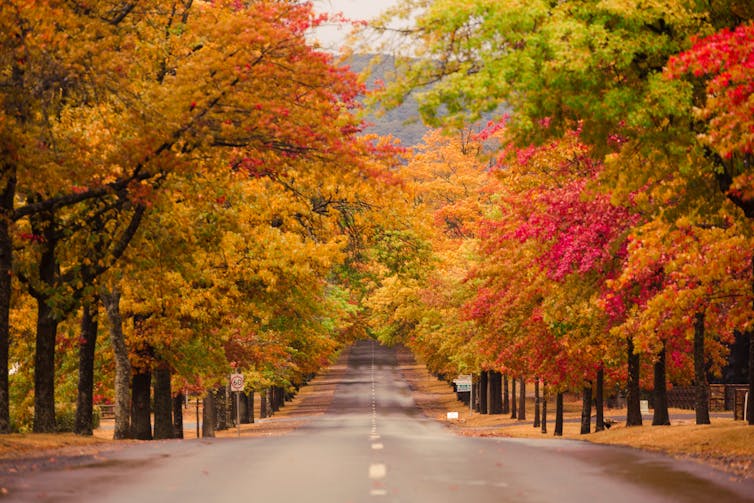
Ecosystems Found On The Roadside
Roadside vegetation are often important corridors connecting wildlife to their habitats. In some cases, they are the last bastions of rare and endangered plant species. Indeed, some of the grass and smaller flowering species of Australia’s once extensive grassy plains only persist on roadside refuges in parts of Victoria, New South Wales and South Australia.
These corridors are also important habitats for smaller birds, mammals, insects and reptiles. They not only provide access to food and water sources, but allow breeding with a broader animal population.
For example, nine different mammal species have been recorded along the roadside of Victoria’s Strathbogie Ranges, including koalas, brushtail possums, gliders and phascogales.
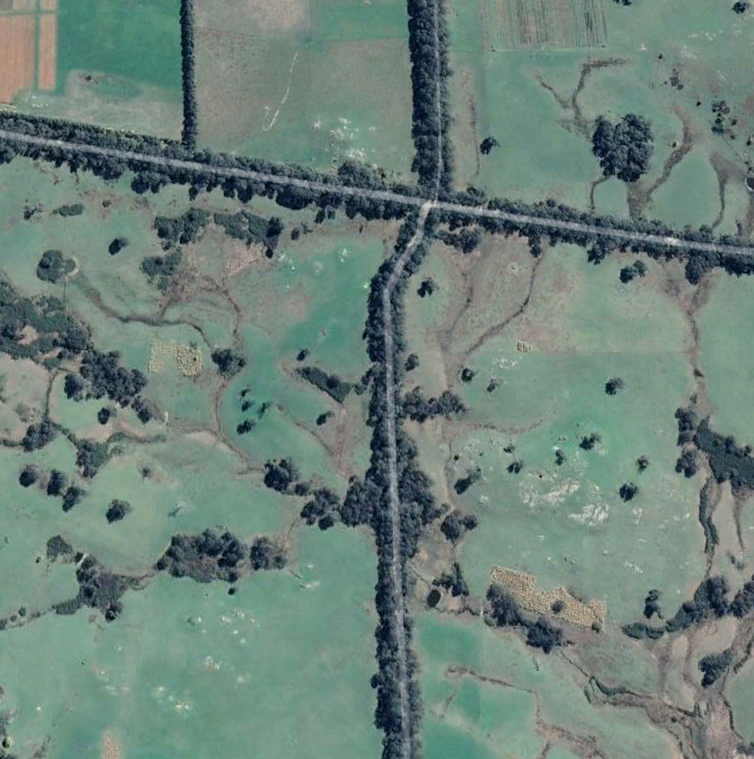
Roads also increase water run-off and carry nutrients, which can allow a diversity of species to flourish on verges (nature strips). Plants that may not survive elsewhere get a toehold on edge of the bitumen using the precious extra resources it provides.
Australian road authorities often acknowledge the importance of these habitat corridors when roads are set to be upgraded or widened. But when it comes to the crunch, it’s the engineering and bottom line demands that generally win out – and plants invariably suffer.
This has an impact to cultural heritage, too. We saw this all too clearly in 2020 when a Djab Wurrung directions tree was bulldozed in Victoria for a new highway, despite valiant protest efforts.
Likewise, people rallied in Hong Kong to protect a significant banyan tree from removal from railway works. And the 300-year-old Bulleen river red gum, which won the National Trust’s Victorian Tree of the Year in 2019, awaits its fate in a major freeway project.
The Dangers Of Roads
Trees are supposed to be cleared according to codes of practice, such as the Australian Standard for Pruning Trees and the Australian Standard for Protecting Trees on Development Sites.
But based on my experiences over many years, when contractors breach one of these protections, there’s rarely enforcement or penalty.
For example, breaches can occur during powerline clearing across Australia, where old roadside trees can be decimated by losing much of their canopy. Trees may not survive such damage and if they do it will takes years for recovery.
Clearing roadside vegetation can occur on a monumental scale after bushfires. While burnt, dead trees may be dangerous and need to be removed or pruned, the clearing can far exceed the safety requirement.
Local communities have been left to lament the loss of their green and leafy road reserves from fires, as well as losses to the trees themselves from unnecessary clearing – it’s a double blow.
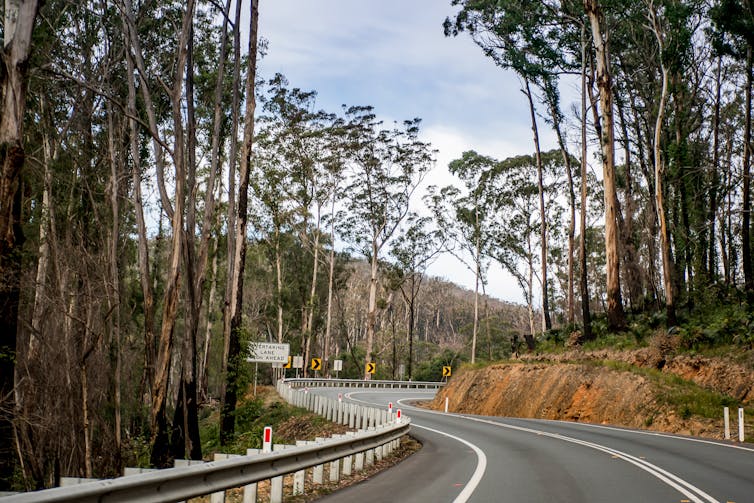
Herbicide is another very common, but rarely spoken of, cause of death for roadside trees and vegetation, with roadside verges routinely sprayed to reduce weeds encroaching onto the edges of roads and tarmac.
Herbicide spray can drift and kill non-target vegetation, such as crops on adjacent farms and even ancient remnant trees nearby. While such events have occurred in Australia, they are seldom reported and farmers are rarely successful in obtaining compensation for losses.
Vandalism is another major issue, with many local examples of street trees being poisoned, lopped or cut down, for instance, to secure prized coastal views.
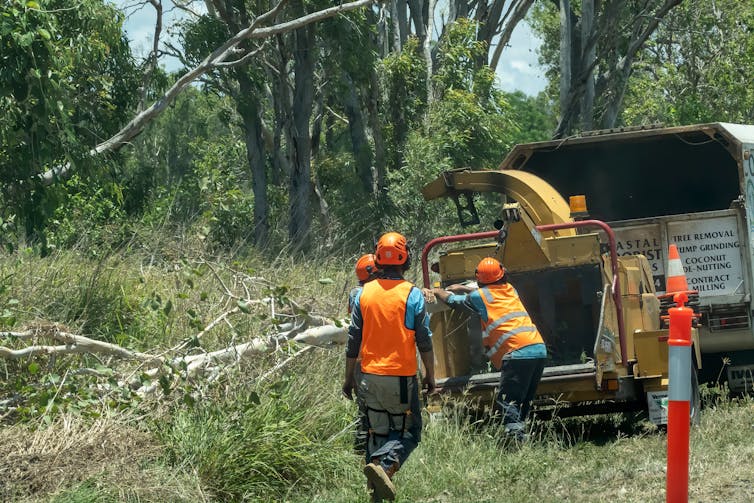
This not only affects Australia. In 2012 thousands of roadside and rural trees were illegally poisoned or cut down in the United States by billboard advertisers. Similar advertising-related tree removals also occurred in India.
Love Your Trees
More of us should take stock of roadside trees: they are links to Australia’s past, refuges of once more widespread natural communities, and remain an important part of cultural heritage.
Importantly, they connect us to a future under climate change. We cannot possibly fight to mitigate global warming without urban trees. If we do not value them, it is inevitable that we will be lamenting an expanding list of endangered species and possible extinctions.![]()
Gregory Moore, Doctor of Botany, The University of Melbourne
This article is republished from The Conversation under a Creative Commons license. Read the original article.
Want to avoid a bluebottle sting? Here’s how to predict which beach they’ll land on
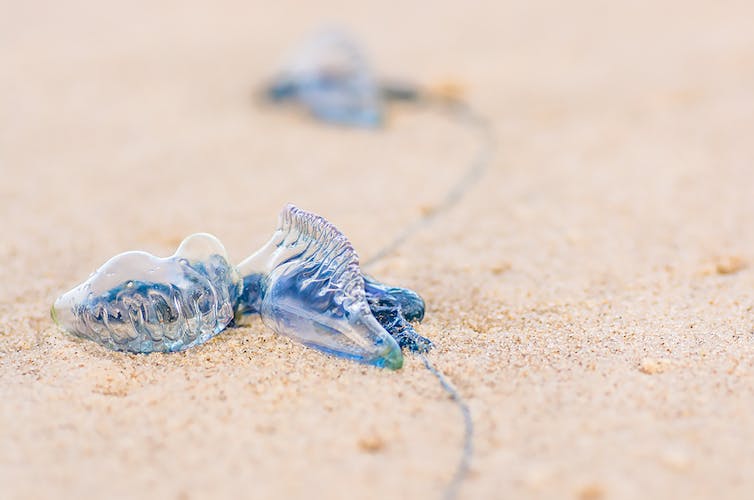
If you’re among the one in six Australians to experience the bitter pain of a marine stinger such as a bluebottle, you’ll know how quickly they can end a fun day at the beach.
We can’t stop the summer winds that deliver these creatures to our shores, but we can choose the safest spots to swim.
Our recent research provides the first evidence of what transports bluebottles to Australian beaches.
We found the direction a beach faces, relative to wind direction, largely determines how many bluebottles are pushed to shore. We hope these findings will help beachgoers safely plan where to take their next dip.
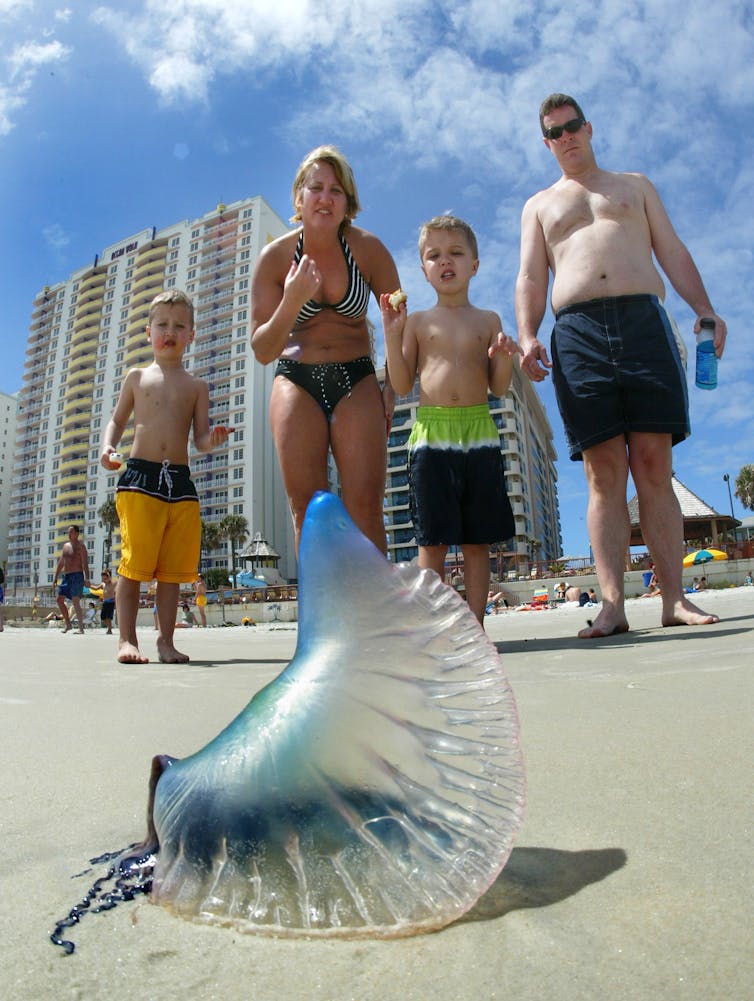
Delicate Ocean Drifters
The bluebottle is a jellyfish found mostly along Australia’s east coast.
Most bluebottle stings occur while swimming, and are the top reason people seek assistance from surf lifesavers.
Bluebottles aren’t a single animal. They’re a floating colony of individual organisms, each variously responsible for reproducing, capturing or digesting food and catching the wind.
The bluebottle’s long, trailing tentacles are designed to sting prey and creatures they feel threatened by, including humans.
Bluebottles do not swim, but drift on the ocean’s surface. Their inflated blue bladder is sensitive to aerodynamic forces and acts as a sail.
Currents drive a bluebottle’s long tentacles below the ocean’s surface and wind drives the sail above it.
The Bluebottle As A Sailboat
A bluebottle’s body, including the tentacles, is not aligned with its sail.
Some sails point to the left of the body, and others to the right. This quirk is thought to help populations survive.
If all bluebottle sails pointed the same way, an entire group might pick up a prevailing wind and be blown to shore. But when half the group has sails facing the other way, some individuals are blown in a different – and hopefully less perilous – direction.
Our previous research sought to shed light on bluebottle drift by examining physical equations that determine how sailboats respond to winds and currents.
That research found wind force can cause right-leaning bluebottles to drift around 50⁰ left of the downwind direction, while left-leaning individuals drift around 50⁰ to the right.
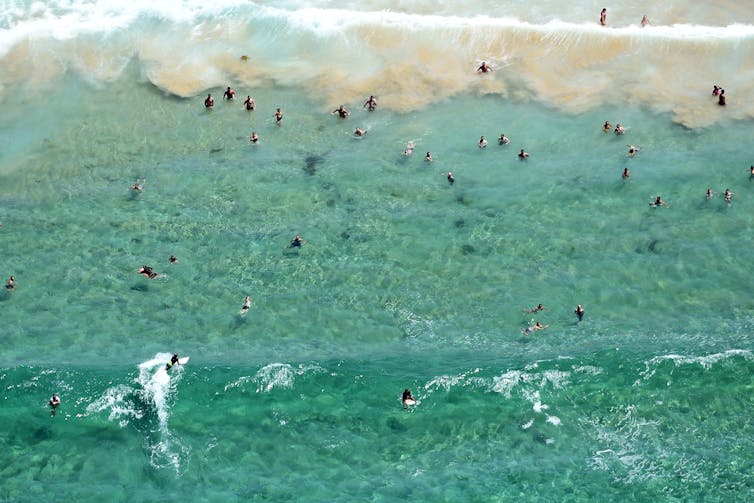
Choose Your Swimming Spot Wisely
Our latest research explored how winds and other environmental factors affect bluebottle beaching.
We analysed daily bluebottle numbers and stings at three Sydney beaches – Maroubra, Clovelly and Coogee – over four years. The project was led by Masters student Natacha Bourg.
Bluebottles numbers were highest during summer, peaking a few weeks before maximum ocean temperatures.
Cold temperatures have previously been thought to hinder bluebottle movements. But we recorded bluebottles on beaches in winter and spring, which suggests other factors are at play.
Our research found wind direction was the main factor driving bluebottles onshore. On Australia’s east coast, both northeast and southerly winds bring bluebottles towards the beach.
Crucially, we also found the shape of the coastline, and its orientation relative to prevailing winds, affects the rate of bluebottle arrivals.
Maroubra faces east and is the longest and most wind-exposed of the three beaches. We found a summer north-easterly wind at Maroubra led to a 24% chance of bluebottles the following day.
But at nearby Clovelly beach, the chance was just 4%. Clovelly faces south and sits relatively protected at the end of a narrow bay. However, after southerly winds, the chance of bluebottle encounter there increased to 12%.
Coogee faces south and is smaller than Maroubra. A small rocky outcrop limits exposure to the ocean and therefore exposure to bluebottles.
Overall, bluebottles were most likely to be found at Maroubra, followed by Coogee then Clovelly. This reflects their varying beach lengths and orientation with respect to prevailing winds.
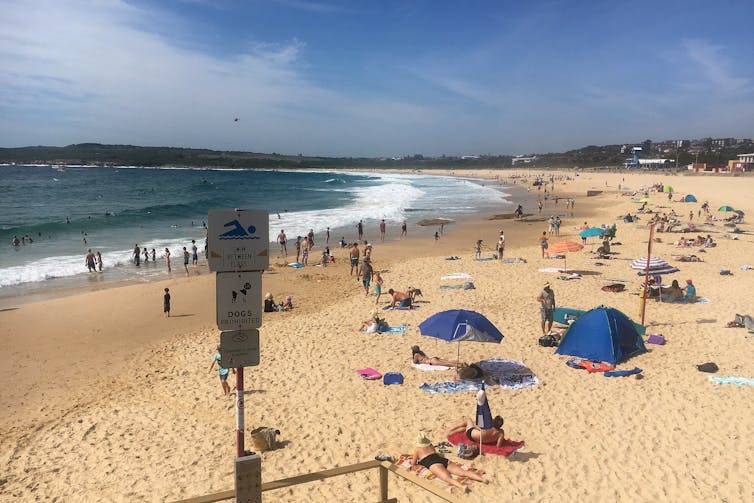
Planning Your Day At The Beach
These conclusions can be applied beyond the beaches we studied. By checking beach orientation with wind direction, we can make an educated guess as to whether the chance of encountering bluebottles is high at any beach.
We know bluebottles are pushed around 50⁰ left or right of the wind direction. So a quick drawing in your head or on the sand may tell you which nearby beach is likely to be safest.
But there are exceptions to this rule. Strong ocean currents, for example, can influence bluebottle drift, especially when winds are weaker.
Rips and the circulation of water in surf zones are also linked to bluebottle beaching.
And bluebottles can extend and contract their sails and stinging tentacles which may change the direction of their drift.
So before entering the water, take plenty of precautions against bluebottles and other dangers. Surf Life Saving Australia urges all beachgoers to:
- stop and check your surroundings
- look for rips, large waves, rocks and other hazards
- plan to stay safe, including swimming at a patrolled location
- visit beachsafe.org.au.

Learning More
Further research is needed to better understand bluebottles, including how climate change, and subsequent warming oceans, will affect their drift.
Citizen science provides a powerful opportunity to learn about bluebottle distribution, size and arrival at our beaches.
Next time you see bluebottles at the beach, take photos and upload them to this project in the iNaturalist app.
In this way, you can help researchers discover more secrets of these beautiful marine creatures – which will hopefully lead to fewer painful bluebottle encounters.![]()
Amandine Schaeffer, Senior lecturer, UNSW Sydney and Jasmin C Lawes, Adjunct associate, UNSW Sydney
This article is republished from The Conversation under a Creative Commons license. Read the original article.
Indigenous peoples across the globe are uniquely equipped to deal with the climate crisis - so why are we being left out of these conversations?
Janine Mohamed; Pat Anderson, and Veronica Matthews, University of SydneyThe urgency of tackling climate change is even greater for Aboriginal and Torres Strait Islander people, and other First Nation peoples across the globe. First Nations people will be disproportionately affected and are already experiencing existential threats from climate change.
The unfolding disaster in the Northern Rivers regions of New South Wales is no exception, with Aboriginal communities completely inundated or cut off from essential supplies.
Aboriginal and Torres Strait Islander peoples have protected Country for millennia and have survived dramatic climatic shifts. We are intimately connected to Country, and our knowledge and cultural practices hold solutions to the climate crisis. Despite this, we continue to be excluded from leadership roles in climate solution discussions, such as the recent Intergovernmental Panel on Climate Change (IPCC) report.
This continued exclusion is why investigation of the impacts of climate change on First Nations people is needed.
In October last year, the Lowitja Institute, in partnership with the Aboriginal and Torres Strait Islander National Health Leadership Forum and the Climate and Health Alliance, brought together researchers, community members, young people and advocates from across the country at a round-table discussion.
Together, they put together the findings for the Discussion Paper Climate change and Aboriginal and Torres Strait Islander health.
How Climate Change Impacts Indigenous Peoples
As the paper tells us, climate change threatens our social and cultural determinants of health, including access to Country, traditional foods, safe water, appropriate housing and health services.
Aboriginal health services are already struggling to operate in extreme weather, with increasing demands and a reduced workforce. All these forces combine to exacerbate already unacceptable levels of ill-health within Aboriginal and Torres Strait Islander populations and compound the historical and contemporary injustices of colonisation.
During the round table, we heard powerful and moving stories from communities on the front line of climate change.
Norman Frank Jupurrurla, a community leader from Tennant Creek, spoke of sacred waterholes drying up, ancient shade trees dying, temperatures rising, inadequate housing, power going out and spoiled essential food and medicines.
Vanessa Napaltjarri Davis, a Warlpiri/Northern Arrente woman and Senior Researcher at Tangentyere Council in Mparntwe/Alice Springs, spoke of changes to the availability of bush foods and medicines – essential to our health and well-being – due to changing temperatures and seasons.
For example, as Norman Frank Jupurrurla wrote:
…now the country is burning, getting destroyed, because of climate change. Already, I cannot see sand goannas any more.
Aboriginal and Torres Strait Islander peoples hold a deep and painful knowledge of the role dominant culture, racism and colonial power dynamics play within climate change. Although there have been many suggested solutions to climate change, access to these solutions is not equally or equitably available across Australia.
Norman Frank Jupurrurla demonstrated this when he shared the almost impossibly drawn-out process he has completed to become the first person to install solar panels on public housing in Tennant Creek, Northern Territory.
Indigenous Peoples’ Voices Excluded From Climate Change Conversations
Colonisation has ignored Indigenous ways of knowing, doing and being, right down to the weather. Colonisers insisted we live according to just four seasons, instead of the many seasons our people knew and respected.
This experience of marginalisation continues today where we have not been sufficiently included in national and international conversations about climate change, including being pushed to the sidelines at COP26.
The IPCC acknowledged this globally in its report last year. The report states that data and most reporting on climate change do not include Aboriginal and Torres Strait Islander or local knowledge in the assessment findings.
The IPCC’s most recent report looks to recognise this omission and focuses specifically on the importance of our role and knowledge in addressing the climate crisis and the need for climate justice.
The calls from our work are clear. We must elevate Aboriginal and Torres Strait Islander voices within climate change action and centre Aboriginal and Torres Strait Islander peoples as leaders in protecting Country. In the words of Seed Mob, “We cannot have climate justice without First Nations justice.”
In seeking solutions, we must consider how colonial ideologies and practices around climate change can impact on our peoples. As Rhys Jones wrote, “It is not possible to understand and address climate-related health impacts for Indigenous peoples without examining this broader context of colonial oppression, marginalisation and dispossession.”

The Uluru Statement from the Heart, a gift to the Australian People, provides the road map for action:
We must correct power asymmetries and establish co-governance arrangements and become strong advocates of, not only our interests, but our capabilities to tackle climate change.
We must restore access to basic rights that will lay the groundwork for action that includes appropriate community participation/decision-making and incorporates cultural, environmental and sustainable design.
We must weave our knowledges and strengthen partnerships to ensure that our collective wisdom and knowledge as Australia’s First Nations is integrated into climate adaptation and mitigation planning, directly benefitting the whole nation.
Indigenous people know about this continent; we’ve looked after it for millennia.
The Uluru Statement from the Heart gives the opportunity to restore that ancient power – for the benefit of us all and the survival of the planet.![]()
Janine Mohamed, Distinguished Fellow and CEO; Pat Anderson, Chairperson, and Veronica Matthews, Senior Research Fellow, The University Centre for Rural Health, University of Sydney
This article is republished from The Conversation under a Creative Commons license. Read the original article.
Terra nullius has been overturned. Now we must reverse aqua nullius and return water rights to First Nations people

Terra nullius has been overturned. Now we must reverse aqua nullius and return water rights to Traditional Owners.
In recent decades, important progress has been made on land rights for Traditional Owners, with more than 50% of Australia under some form of Indigenous title (including non-exclusive native title). But until now, we’ve had much less progress on water rights.
For millennia, Indigenous Australians maintained all water in Australia. After European colonisation, the rights to water were stolen. Almost none of it has come back. Where did the rest of the water go? Overwhelmingly, to settlers who used them to expand their agricultural interests.
Victoria has now begun to return water to Traditional Owners. Last week, the government returned 2.5 gigalitres (GL) to Gunditj Mirring in Victoria’s south-west. Earlier this year, 1.36GL was set aside for Traditional Owners in northern Victoria, and in late 2020, 2GL from the Mitchell River was returned to Gurnaikurnai in Gippsland. While welcome, this is only a start.
Victoria’s recent returns make it the leader in the eastern states, but competition is scarce. To date, there have been no tangible water handbacks in New South Wales and Queensland.
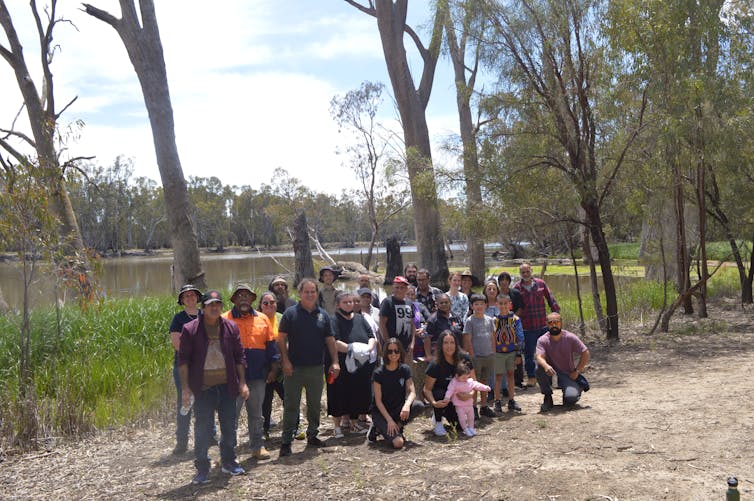
Why Are Water Rights So Important?
Water rights go well beyond commercial and economic gains. For First Nations people, water and the health of waterways are fundamental to health and well-being, including reviving cultural flows, improving physical health, restoring connection to spirit and culture, aiding self-determination, and making it possible to care for Country.
Land is important. But Australia is a dry country, and without water, there is no life. For instance, before colonisation, Gunditjmara in south-western Victoria created one of the world’s oldest and most extensive aquaculture systems to farm short-finned eels. The Budj Bim complex is now UNESCO-listed.
Most Australians are aware of terra nullius, the legal fiction that Australia belonged to no one before European settlement.
But very few know about aqua nullius, a similar fiction suggesting Traditional Owners had no rights to the water they had used for millennia.
To challenge this, First Nations people have long called for redistribution of water, particularly in the Murray-Darling Basin.
Since European colonisation, there have been vanishingly few opportunities for Indigenous communities in Australia to advance and strengthen their economies. It is vital that we recognise the central role played by aqua nullius and the long history of colonial resource rationing in stymieing Indigenous enterprise.
These first allocations are welcome. But they cannot be an afterthought. Without more, the Victorian government could recreate the water version of the rations regime of government-controlled food distribution Indigenous Australians lived with until the 1960s.
For decades, Indigenous Australians were not permitted to have a voice in how our nation’s water is allocated and used.

While these recent water returns in Victoria are vital first steps, the volumes of water are still too small to underpin the restorative justice approach needed for the environment and Aboriginal peoples.
Tinkering Around The Edges
In the Murray-Darling Basin, Australia’s most important agricultural catchment, just 0.2% of all surface water entitlements are owned by Aboriginal organisations, and 0.02% of all available groundwater.
Of this tiny fraction, the majority is low reliability. That means Aboriginal people are unlikely to get access to their water at all unless it has been a particularly wet year.
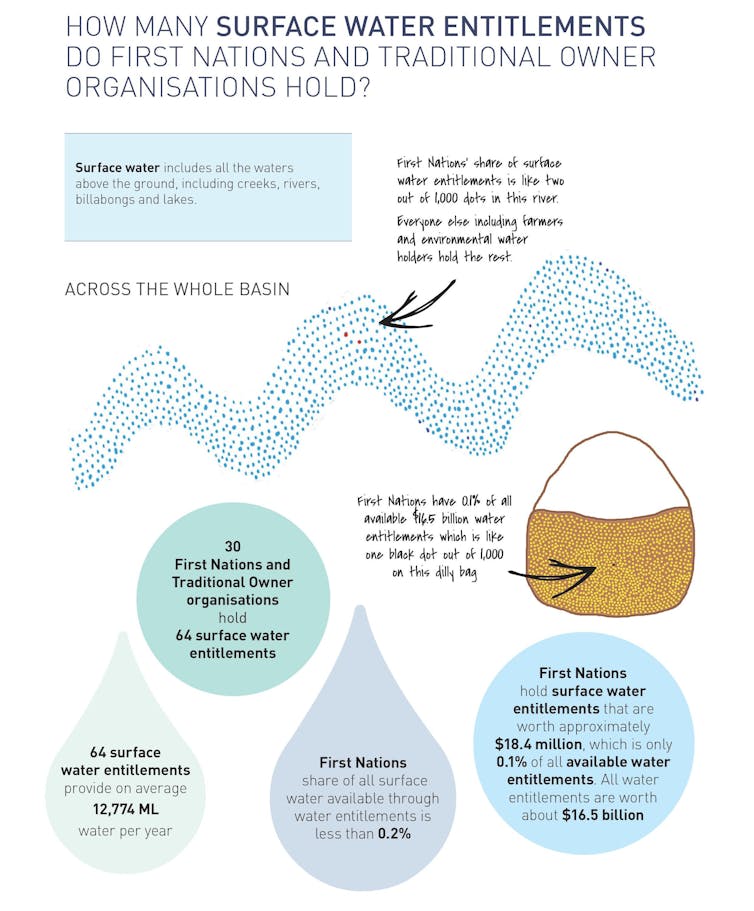
Four years ago, the federal government announced A$40 million to buy water rights for Traditional Owners in the Murray-Darling Basin. Not a dollar has been spent.
In New South Wales, unused water rights across 55 different sources have recently been listed for sale. Not one of these was returned to Traditional Owners.
In the Northern Territory, delays in water allocation planning processes continue to limit access to the Aboriginal Water Reserve – the policy that is supposed to provide Aboriginal people in the NT access to water resources and opportunities for economic development. New laws could make this problem even worse.
Handing Out Water Rights: A New Form Of Rations?
Colonisation of Australia resulted in Europeans gaining control over Aboriginal populations and the resources they relied on. This had a devastating effect on Aboriginal access to traditional resources. From the 19th century until the mid-20th century, Europeans introduced a regime of government distributed rations for Indigenous Australians.
As a result, First Nations peoples were rewritten, both in law and in society, as landless people trespassing on Country once their own.
Given this history, you can see why First Nations groups might be sceptical about these recent handbacks. While the announcements sound good, they represent a very small volume of overall water flows.
Take the recent announcement of 1.36GL set aside for Traditional Owners in Northern Victoria. Where did this water come from? From an extra 4GL of water recovered from the Connections irrigation modernisation project. While that sounds laudable, the allocation for Indigenous use represents just 0.5% of the total volume of water (433GL) recovered from this 12-year project.

What would real progress look like? Over in Western Australia, a major 2020 Indigenous land use agreement in the Geraldton region included rights to around 17% of the available water.
So while Victoria’s recent announcements are a step in the right direction, we cannot help but point out that they reinforce longstanding inequality by giving agricultural interests, who already hold vast land and water entitlements, even more water. By contrast, Victoria’s Aboriginal nations, who have barely any land and water, must divide up these miniscule offerings.
Overturning Aqua Nullius Requires Much More
We now have clear pathways for the return of water in ways which adequately tackle the staggering and ongoing injustice of aqua nullius.
To achieve water justice, we would have to see significant transfers of power and agency in water governance.
There are positive signs. The Victoria government is working with Traditional Owners on a new roadmap for Indigenous access to water. Advocacy groups are helping tailor the shift of water management functions to each Indigenous nation to match their capacity.
These recent handbacks are only the start of what’s needed. In the ongoing quest for self-determination, water is key. If governments are serious about tackling the harm caused by the forced takeover of Indigenous waters and lands, we need more significant transfers of power, agency, and water.![]()
Melissa Kennedy, Research Fellow - Participatory research and engagement, The University of Melbourne; Brendan Kennedy, Enterprise Principle Fellow in Cultural Economies and Sustainability, The University of Melbourne, and Sangeetha Chandrashekeran, Senior Research Fellow, Australian Research Council Centre of Excellence for Children and Families over the Life Course, The University of Melbourne
This article is republished from The Conversation under a Creative Commons license. Read the original article.
Avalon Golf Course Bushcare Needs You


Pittwater Reserves: Histories + Notes + Others
A History Of The Campaign For Preservation Of The Warriewood Escarpment by David Palmer OAM and Angus Gordon OAM
Angophora Reserve - Angophora Reserve Flowers
Annie Wyatt Reserve - A Pictorial
Avalon's Village Green: Avalon Park Becomes Dunbar Park - Some History + Toongari Reserve and Catalpa Reserve
Bairne Walking Track Ku-Ring-Gai Chase NP by Kevin Murray
Bangalley Headland Bangalley Mid Winter
Banksias of Pittwater
Barrenjoey Boathouse In Governor Phillip Park Part Of Our Community For 75 Years: Photos From The Collection Of Russell Walton, Son Of Victor Walton
Barrenjoey Headland: Spring flowers
Barrenjoey Headland after fire
Bayview Baths
Bayview Wetlands
Beeby Park
Bilgola Beach
Botham's Beach
Bungan Beach Bush Care
Careel Bay Saltmarsh plants
Careel Bay Birds
Careel Bay Clean Up day
Careel Bay Playing Fields History and Current
Careel Creek
Careel Creek - If you rebuild it they will come
Centre trail in Ku-ring-gai Chase National Park
Chiltern Track- Ingleside by Marita Macrae
Clareville Beach
Clareville/Long Beach Reserve + some History
Coastal Stability Series: Cabbage Tree Bay To Barrenjoey To Observation Point by John Illingsworth, Pittwater Pathways, and Dr. Peter Mitchell OAM
Cowan Track by Kevin Murray
Curl Curl To Freshwater Walk: October 2021 by Kevin Murray and Joe Mills
Currawong and Palm Beach Views - Winter 2018
Currawong-Mackerel-The Basin A Stroll In Early November 2021 - photos by Selena Griffith
Currawong State Park Currawong Beach + Currawong Creek
Deep Creek To Warriewood Walk photos by Joe Mills
Drone Gives A New View On Coastal Stability; Bungan: Bungan Headland To Newport Beach + Bilgola: North Newport Beach To Avalon + Bangalley: Avalon Headland To Palm Beach
Dunbar Park - Some History + Toongari Reserve and Catalpa Reserve
Dundundra Falls Reserve: August 2020 photos by Selena Griffith - Listed in 1935
Elsie Track, Scotland Island
Elvina Track in Late Winter 2019 by Penny Gleen
Elvina Bay Walking Track: Spring 2020 photos by Joe Mills
Elvina Bay-Lovett Bay Loop Spring 2020 by Kevin Murray and Joe Mills
Fern Creek - Ingleside Escarpment To Warriewood Walk + Some History photos by Joe Mills
Iluka Park, Woorak Park, Pittwater Park, Sand Point Reserve, Snapperman Beach Reserve - Palm Beach: Some History
Ingleside
Ingleside Wildflowers August 2013
Irrawong - Ingleside Escarpment Trail Walk Spring 2020 photos by Joe Mills
Irrawong - Mullet Creek Restoration
Katandra Bushland Sanctuary - Ingleside
Lucinda Park, Palm Beach: Some History + 2022 Pictures
McCarrs Creek
McCarr's Creek to Church Point to Bayview Waterfront Path
McKay Reserve
Mona Vale Beach - A Stroll Along, Spring 2021 by Kevin Murray
Mona Vale Headland, Basin and Beach Restoration
Mount Murray Anderson Walking Track by Kevin Murray and Joe Mills
Mullet Creek
Narrabeen Creek
Narrabeen Lagoon Catchment: Past Notes Present Photos by Margaret Woods
Narrabeen Lagoon State Park
Narrabeen Lagoon State Park Expansion
Narrabeen Rockshelf Aquatic Reserve
Nerang Track, Terrey Hills by Bea Pierce
Newport Bushlink - the Crown of the Hill Linked Reserves
Newport Community Garden - Woolcott Reserve
Newport to Bilgola Bushlink 'From The Crown To The Sea' Paths: Founded In 1956 - A Tip and Quarry Becomes Green Space For People and Wildlife
Pittwater spring: waterbirds return to Wetlands
Pittwater's Lone Rangers - 120 Years of Ku-Ring-Gai Chase and the Men of Flowers Inspired by Eccleston Du Faur
Pittwater's Parallel Estuary - The Cowan 'Creek
Riddle Reserve, Bayview
Salvation Loop Trail, Ku-Ring-Gai Chase National Park- Spring 2020 - by Selena Griffith
Stapleton Reserve
Stapleton Park Reserve In Spring 2020: An Urban Ark Of Plants Found Nowhere Else
The Chiltern Track
The Resolute Beach Loop Track At West Head In Ku-Ring-Gai Chase National Park by Kevin Murray
Towlers Bay Walking Track by Joe Mills
Trafalgar Square, Newport: A 'Commons' Park Dedicated By Private Landholders - The Green Heart Of This Community
Turimetta Beach Reserve by Joe Mills, Bea Pierce and Lesley
Turimetta Beach Reserve: Old & New Images (by Kevin Murray) + Some History
Turimetta Headland
Warriewood Wetlands and Irrawong Reserve
Whale Beach Ocean Reserve: 'The Strand' - Some History On Another Great Protected Pittwater Reserve
Winji Jimmi - Water Maze

New Shorebirds WingThing For Youngsters Available To Download
A Shorebirds WingThing educational brochure for kids (A5) helps children learn about shorebirds, their life and journey. The 2021 revised brochure version was published in February 2021 and is available now. You can download a file copy here.
If you would like a free print copy of this brochure, please send a self-addressed envelope with A$1.10 postage (or larger if you would like it unfolded) affixed to: BirdLife Australia, Shorebird WingThing Request, 2-05Shorebird WingThing/60 Leicester St, Carlton VIC 3053.

 Shorebird Identification Booklet
Shorebird Identification Booklet
The Migratory Shorebird Program has just released the third edition of its hugely popular Shorebird Identification Booklet. The team has thoroughly revised and updated this pocket-sized companion for all shorebird counters and interested birders, with lots of useful information on our most common shorebirds, key identification features, sighting distribution maps and short articles on some of BirdLife’s shorebird activities.
The booklet can be downloaded here in PDF file format: http://www.birdlife.org.au/documents/Shorebird_ID_Booklet_V3.pdf
Paper copies can be ordered as well, see http://www.birdlife.org.au/projects/shorebirds-2020/counter-resources for details.
Download BirdLife Australia's children’s education kit to help them learn more about our wading birdlife
Shorebirds are a group of wading birds that can be found feeding on swamps, tidal mudflats, estuaries, beaches and open country. For many people, shorebirds are just those brown birds feeding a long way out on the mud but they are actually a remarkably diverse collection of birds including stilts, sandpipers, snipe, curlews, godwits, plovers and oystercatchers. Each species is superbly adapted to suit its preferred habitat. The Red-necked Stint is as small as a sparrow, with relatively short legs and bill that it pecks food from the surface of the mud with, whereas the Eastern Curlew is over two feet long with a exceptionally long legs and a massively curved beak that it thrusts deep down into the mud to pull out crabs, worms and other creatures hidden below the surface.
Some shorebirds are fairly drab in plumage, especially when they are visiting Australia in their non-breeding season, but when they migrate to their Arctic nesting grounds, they develop a vibrant flush of bright colours to attract a mate. We have 37 types of shorebirds that annually migrate to Australia on some of the most lengthy and arduous journeys in the animal kingdom, but there are also 18 shorebirds that call Australia home all year round.
What all our shorebirds have in common—be they large or small, seasoned traveller or homebody, brightly coloured or in muted tones—is that each species needs adequate safe areas where they can successfully feed and breed.
The National Shorebird Monitoring Program is managed and supported by BirdLife Australia.
This project is supported by Glenelg Hopkins Catchment Management Authority and Hunter Local Land Services through funding from the Australian Government’s National Landcare Program. Funding from Helen Macpherson Smith Trust and Port Phillip Bay Fund is acknowledged.
The National Shorebird Monitoring Program is made possible with the help of over 1,600 volunteers working in coastal and inland habitats all over Australia.
The National Shorebird Monitoring program (started as the Shorebirds 2020 project initiated to re-invigorate monitoring around Australia) is raising awareness of how incredible shorebirds are, and actively engaging the community to participate in gathering information needed to conserve shorebirds.
In the short term, the destruction of tidal ecosystems will need to be stopped, and our program is designed to strengthen the case for protecting these important habitats.
In the long term, there will be a need to mitigate against the likely effects of climate change on a species that travels across the entire range of latitudes where impacts are likely.
The identification and protection of critical areas for shorebirds will need to continue in order to guard against the potential threats associated with habitats in close proximity to nearly half the human population.
Here in Australia, the place where these birds grow up and spend most of their lives, continued monitoring is necessary to inform the best management practice to maintain shorebird populations.
BirdLife Australia believe that we can help secure a brighter future for these remarkable birds by educating stakeholders, gathering information on how and why shorebird populations are changing, and working to grow the community of people who care about shorebirds.
To find out more visit: http://www.birdlife.org.au/projects/shorebirds-2020/shorebirds-2020-program
Aussie Bread Tags Collection Points

Reflections On The Federal Budget
Budget Delivers Relief But Not Reform
Cost Of Living Increases And The Age Pension
- Establishing an Age Pension Tribunal to independently set the Age Pension rate. They would take responsibility for calculating a fair and adequate pension rate. It would work out the pension rate and any supplements based on need and circumstance.
- Increase the maximum rate of Commonwealth Rent Assistance. On average, a pensioner receives only a third of what is needed to pay the rent. Older renters are hit particularly hard by recent rent increases, which lowers their living standards and increases their risk of homelessness. Indexation is currently applied to rent assistance, however the current CPI is well below recent rent increases.
- Provide a subsidy to connect to the NBN or other internet service. Without access to the internet, older people become disadvantaged in an increasingly digital world. Providing a subsidy to connect to the NBN or another appropriate internet service will help older people stay connected.
- Expand the provision of basic dental care for pensioners, including those in aged care. Dental care is essential to health and wellbeing, especially as we age. A healthy mouth enables people to eat, speak and socialise without pain, discomfort or embarrassment. Poor oral health is also linked to chronic diseases, including stroke and cardiovascular disease.
Saga Of A City
Now Shackleton’s Endurance has been found, who determines what happens to the famous shipwreck?

Tonight’s federal budget will include more than A$800 million over ten years to provide a “clear marker” of Australia’s “scientific leadership” in Antarctica.
The funds will go towards drones and helicopters amid mounting (although somewhat exaggerated) concerns over Chinese activity in the region.
But political assets in the polar region include more than expensive state of the art toys. Earlier this month, one of the most famous shipwrecks in history, Sir Ernest Shackleton’s Endurance, was discovered in the Weddell Sea – a part of Antarctica claimed by multiple nations.
The Endurance
There is enormous excitement around the discovery of the Endurance.

The wreck provides a physical connection to a great tale of human survival, as it was the vessel used during the British explorer’s 1914-1916 Imperial Trans-Antarctic Expedition.
It became stuck in the ice and eventually sunk. Remarkably, none of the men died during the ordeal, despite having to camp on the ice for months during an austral winter.
But now the Endurance has been found, who owns it and who should look after it?
The Antarctic Treaty
Antarctica is governed differently from other parts of the world. The Antarctic Treaty was signed in 1959, with its first provision stating “Antarctica shall be used for peaceful purposes only”. It also provides for free and cooperative scientific investigation on and around the frozen continent.
At the time of signing, seven countries – Argentina, Australia, Chile, France, New Zealand, Norway and the United Kingdom – had territorial claims in the region. But under the treaty, no country can assert (or deny) a claim to territorial sovereignty in Antarctica.
Despite this strong legal foundation, cultural heritage provides an opportunity for nations – in this case Britain – to assert their past, as well as their intended future, presence in the region.
Historic Sites In Antarctica
The Antarctic is governed via annual meetings, attended by signatories to the treaty. At these meetings, countries can designate historic remains as official historic sites or monuments.
At the 2019 meeting, the UK successfully proposed the Endurance wreck as an official historic site, despite not knowing its location or state at the time. After learning of plans by NGOs to search for the wreck, the UK said it wanted to “confirm the protection status of the vessel in the event that it is located”.
The “historic site” status protects:
all artefacts contained within or formerly contained within the ship, which may be lying on the seabed in or near the wreck within a 150-metre radius.
Who Is Responsible For The Sunken Ship?
The Endurance22 expedition, backed by the Falklands Maritime Heritage Trust, located the wreck in remarkable condition just over three weeks ago. This expedition had set itself the task of searching for and surveying the shipwreck.
Since 2019, the UK has effectively designated itself as manager of the site – which includes the personal possessions within and all artefacts lying on the seabed nearby. The UK has also stated the wreck should not be not moved or disturbed and only photographed according to strict heritage guidelines.
This is also in line with comments from Shackleton’s granddaughter Alexandra Shackleton, who says there should be no “rummaging” and “whatever there is will stay there.”
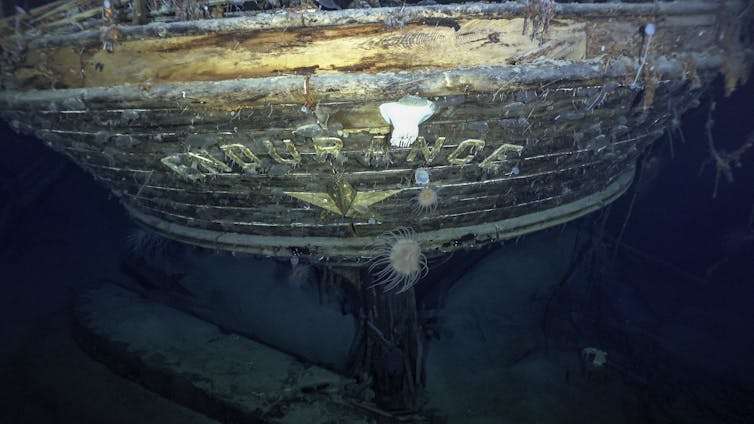
These preemptive steps are somewhat controversial because the seabed on which the Endurance rests is an area contested between the UK and Argentina.
Although, by definition, a seabed is not within claimed territory, it rests below waters belonging to claimed territory – meaning the wreck could be interpreted by the wider international community as lying outside of the UK’s jurisdiction.
Also worth noting is that the very heritage trust in charge of the expedition originates from hotly contested territory between the two countries – the Falkland Islands/Islas Malvinas.
Other Complications
Another challenge is posed by the United Nations Convention on the Law of the Sea. This sets out that archaeological and historical objects found at sea should be protected.
The ship used to search for the wreck was provided by South Africa, while funding was provided primarily by UK private and commercial sources. South Africa has signed the convention, while the UK has agreed to abide by its rules, but is not a signatory.
This has created a feeling of unease among the expert community, who understand that even though the wreck is not currently easy to access (for one, it is more than 3 kilometres below the surface), with technological developments, this situation may change.
What Happens Now?
Ultimately, the management of the site will set a precedent for the treatment of underwater cultural heritage in the region more widely.
The big question policymakers and diplomats now face is whether a line will be drawn when it comes to having not-yet-found shipwrecks internationally recognised as heritage sites.
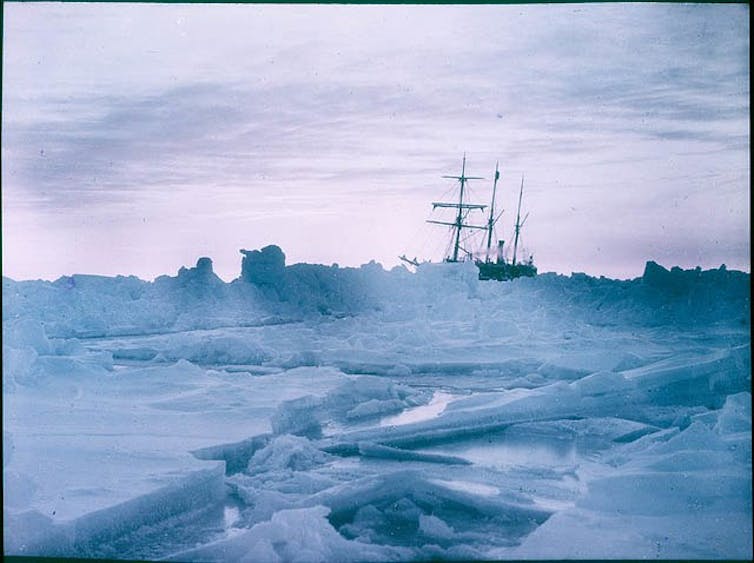
Two more sites will likely test this question: the San Telmo and the SS Hampson. Spain proposed the San Telmo – a Spanish naval ship that sunk in the Drake Passage in 1819 supposedly carrying the first “humans to live and die” in Antarctica – as an official historic site at the 2021 meeting.
The SS Hampson is expected to be the large unidentified wooden sailing boat wrecked at Hampson Cove, Elephant Island. The UK is again the manager of the site, given it established the cove’s official heritage status back in 1998.
Like the recent discoveries of other wrecks, the Erebus and Terror in the high Arctic, these sunken ships represent more than just deteriorating artefacts.
They provide a way for countries to demonstrate their historical occupation of a region where traditional displays of territorial sovereignty are banned.![]()
Rebecca Hingley, Research associate, University of Tasmania
This article is republished from The Conversation under a Creative Commons license. Read the original article.
Older Australians Advocates Urge Senate To Pass Aged Care Reform Bill
- The new residential aged care funding tool
- The creation of an Independent Pricing Authority for aged care
- The registration of aged care workers and a Code of Conduct for workers and providers
- Giving the Aged Care Quality and Safety Commission power to ban people who do the wrong thing
- Publication of provider financial statements for better transparency
- Strengthening controls over the use of restrictive practices in aged care
- Stronger governance requirements on aged care providers
Have You Heard Of Walking Netball?

Meet Your Local Seniors Groups Mini Expo: Newport - Friday 8 April 2022: 1.00pm - 4.00pm
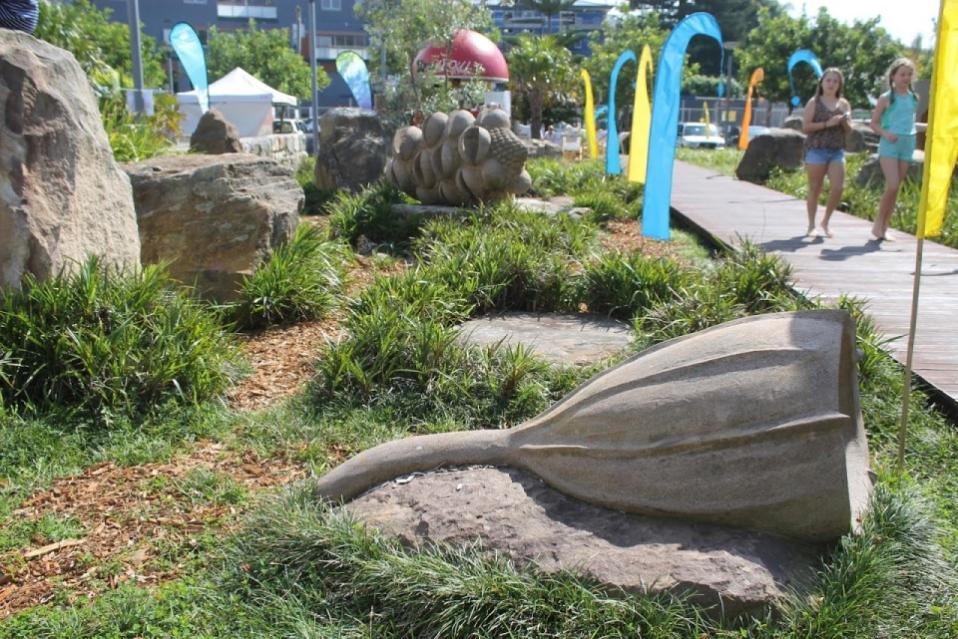
Improving Food And Nutrition In Aged Care
- Asking 20 per cent of senior Australians in residential aged care whether they like the food, as part of consumer experience interviews, and publishing the service level results on star ratings later in 2022;
- Requiring residential aged care providers to collect and report on the new Quality Indicators, including unplanned weight loss, and publishing the service level results on star ratings later from December 2022; and
- The urgent review of the Aged Care Quality Standards, which includes a focus on food and nutrition.
Rod Stewart: Rhythm Of My Heart - 1991
‘Rich with wonder’: the 2022 Sydney Biennale finds connection and relevance in troubled times

Review: the 23rd Biennale of Sydney, rīvus.
Artists for generations have shown vision and leadership in addressing society’s most wicked problems. Yet art by itself cannot change the world without a platform. International biennales are the most high-profile exhibition platforms of our times.
As the third oldest continuous international biennale, running since 1973, the Biennale of Sydney is one of the most authoritative and influential contemporary art exhibitions in the world.
Working collaboratively with a team of four Sydney-based curators from Arts & Cultural Exchange (ACE), Artspace, Museum of Contemporary Art (MCA) and the Art Gallery of NSW, the artistic director and Colombian curator José Roca has addressed some of the most pressing preoccupations of the day.
Specifically, the current 23rd edition shows how biennales can make a constructive contribution to debates around environmental sustainability and can advocate for a less ecologically combative inhabitation of Earth.
This is not a dry or didactic exhibition: it is rich with wonder, aesthetically captivating and, at times, viscerally immersive.
Equal Status To Science And Art
Nyikina Warrwa woman Dr Anne Poelina recently co-authored an article about the growing recognition of the legal rights of rivers.
She is featured in one of several similar videos in the Biennale as the personification of the Martuwarra (Fitzroy) River.
The personhood of rivers is a key premise underpinning the entire 2022 Biennale, titled rīvus, or “stream” in Latin.
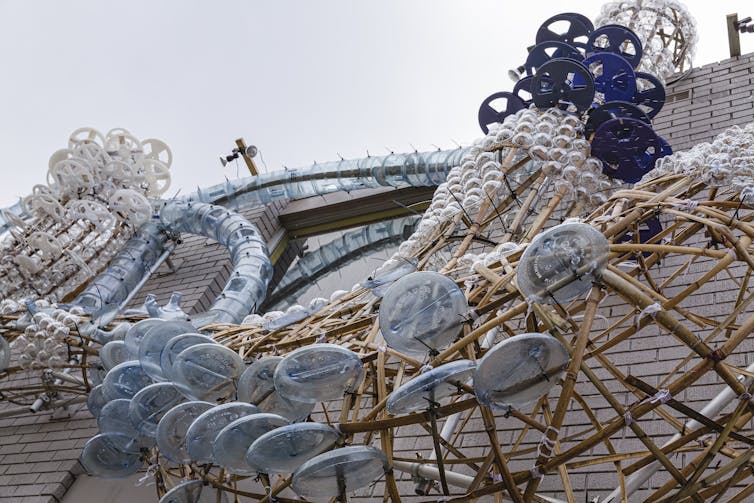
At the entrance to each of the exhibition venues, a different river greets the viewer: its cultural significance and ecological woes embodied by a First Nations custodian narrator. It is a deft curatorial device that serves to link the exhibitions across Sydney and establish the equal status this biennale affords art, science, activism, traditional knowledge and bodies of water.
For the previous Biennale in 2020, artistic director Brook Andrew made a similar curatorial intervention with his “Powerful Objects” installation at each venue, which served to gently reiterate the exhibition’s postcolonial discourse.
This is just one element of continuity between the 2020 and 2022 editions; another is the foregrounding of First Nations cultural knowledge.
If biennales are to retain relevance in these difficult times, they must look to curatorial models that accumulate rather than discard strategies and knowledge gained with each edition.
By not wiping the slate entirely clean, the 2022 Biennale of Sydney strengthens messaging from the 2020 edition, key aspects of which were impacted by COVID-19 with closures and cancellations and for that reason also have been taken up by Roca and his team.
This signals a curatorial generosity not usually associated with biennales, more commonly perceived as the playground of individualistic artists and star curators.
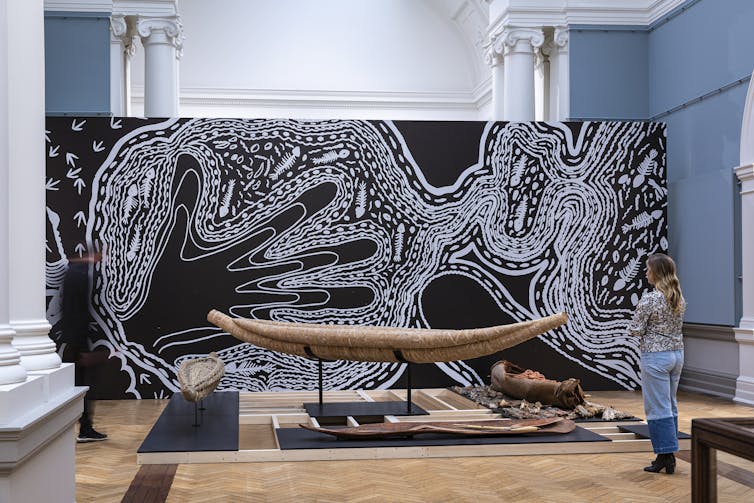
A Legacy Of Oak Trees
One former biennale legacy project built on in the 2022 edition is Joseph Beuys’ 7000 Oaks: City Forestation Instead of City Administration.
In 1982, Beuys – a German artist and environmental activist – launched the project by planting seeds for 7,000 oak trees in Kassel. In 1984, the planting of a single tree was commissioned for that year’s Biennale of Sydney.
Beuys’ work is referenced by two projects at the Art Gallery of NSW. The first is by English artist duo Ackroyd & Harvey, well known internationally for their ongoing tree-planting project Beuys’ Acorns, inspired by 7000 Oaks.

For the biennale they have created monumental “living” portraits of environmentalist Lille Madden and her grandfather Uncle Charles “Chicka” Madden. Made in Sydney from a variety of grasses, the commanding portraits are ephemeral like grass itself and will likely fade over time.
The second work connecting back to Beuys is One Beat One Tree. A digital interactive installation by the late Belgian artist Naziha Mestaoui, it invites visitors to “plant” and “grow” a tree with dance-like moves. While these trees grow on the screen, the work also has real-world reforestation outcomes.

Another response to Beuys’ tree is being performed by artist Mike Parr this week.
The 2022 biennale’s homage to Beuys resuscitates Australia’s iteration of one of the world’s earliest and most iconic environmental artworks, which will be relaunched with the opening of Sydney Modern later this year.
Flow And Connection
This seamless flow across time, cultures and natural environments epitomises the 22nd Biennale of Sydney, making it is near impossible to single out individual works as highlights.
Those that conjure the concepts of flow and interconnectedness, inherent to bodies of water, most clearly articulate the exhibition premise. There is Bernie Krause’s audio feast titled The Great Animal Orchestra and Cave Urban’s suspended bamboo river at Barangaroo.

Leanne Tobin’s film traces the journey of the Burramatta (Parramatta) River eels at ACE. Hannah Tuulikki’s equally hypnotic film depicts the artist singing to and swimming with seals in her native Scotland.
Carolina Caycedo’s expansive wall map of waterways at the National Art School Gallery is matched in its big picture vision by Barthélémy Toguo’s similarly sweeping painting, The Generous Water Giant, at the MCA.

The accompanying publication, rīvus: a glossary of water, encapsulates the exhibition’s interdisciplinary approach in a way that, like the exhibition itself, is non-hierarchical and interwoven.
The 2022 Biennale of Sydney invites new audiences through its attention to those international issues also impacting Australia, and in its extensive participation with local artists and communities.
Though still very much part of the international biennale network, this exhibition has all the ingredients to offer Australian visitors inspiration and meaningfulness at a time when art and exhibitions are all too easily overshadowed by the global challenges we face.
The 23rd Biennale of Sydney, rīvus, is at various venues until June 13.![]()
Felicity Fenner, Associate Professor at UNSW Art & Design, UNSW Sydney
This article is republished from The Conversation under a Creative Commons license. Read the original article.
3D Printing Shaping Learning For Blind And Low Vision Students

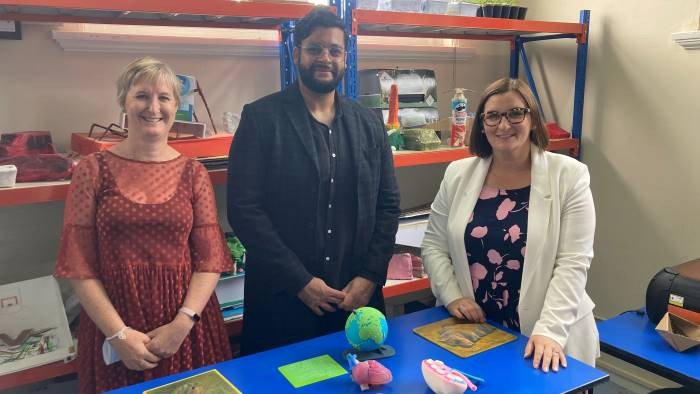

Annie Lennox - Money Can't Buy It
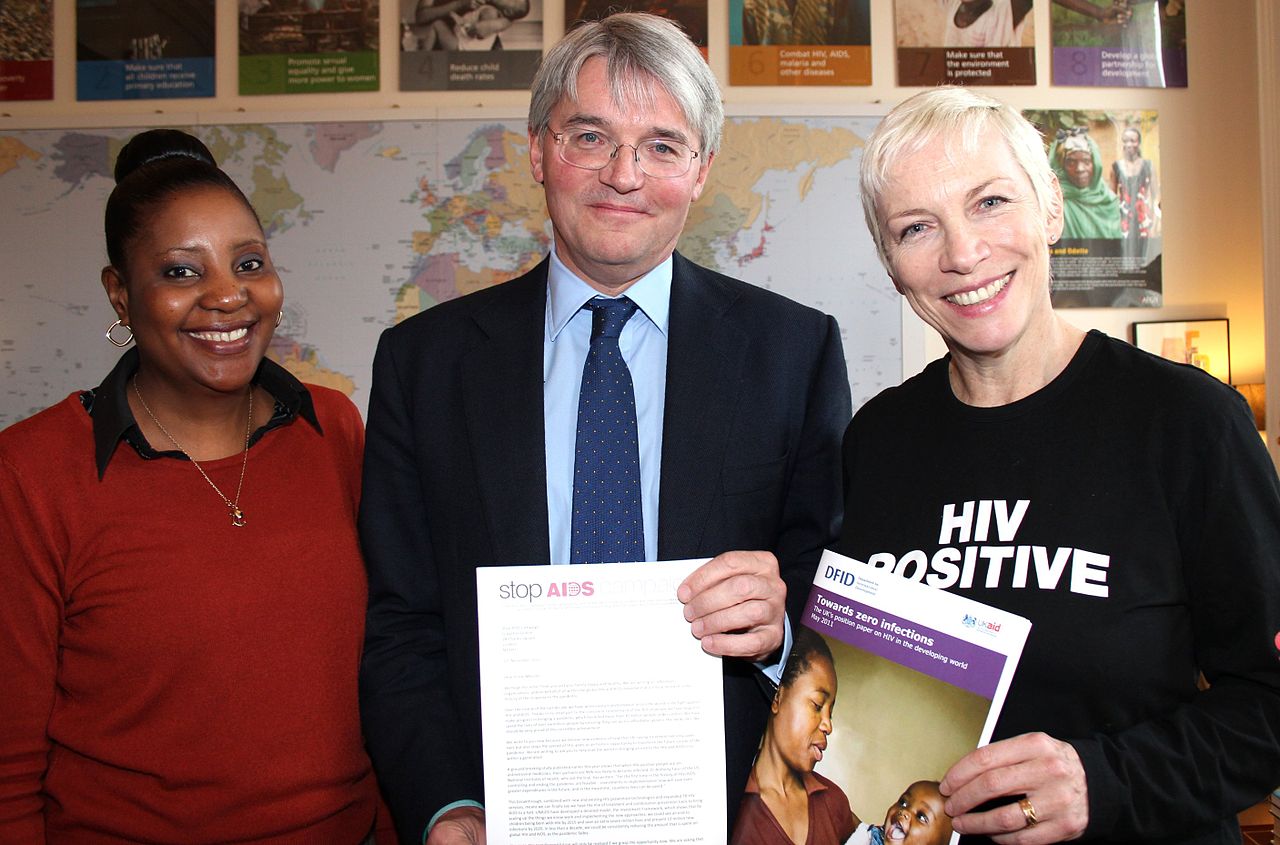
Word Of The Week: Art
Northern Beaches Environmental Art & Design Prize 2022 Open For Entries: Prize Pool Over $40,000 - Entries From Across Australia Invited
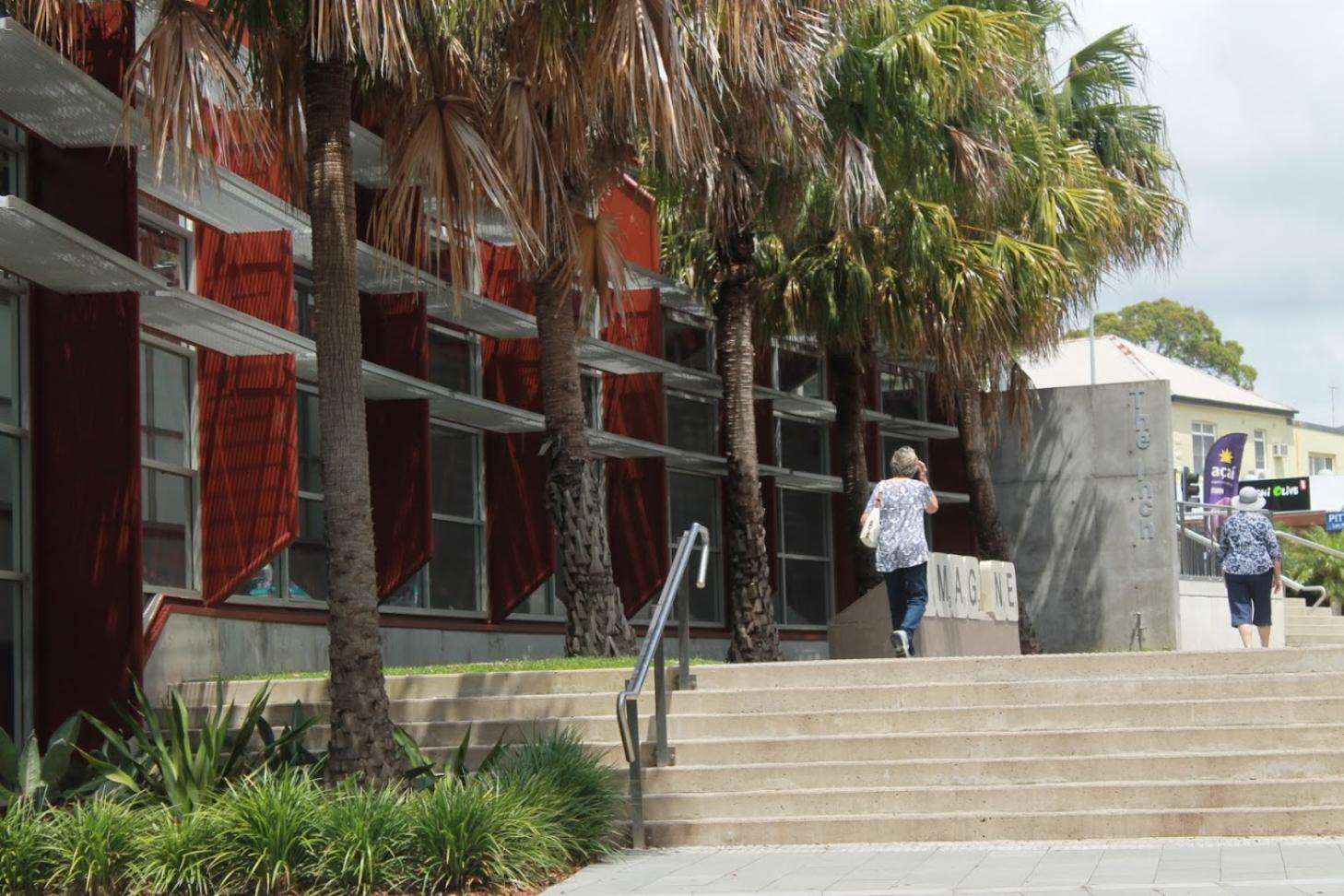
Entries are now open for the Northern Beaches Environmental Art & Design Prize (the Prize) 2022 with artists and designers across Australia invited to apply.
This is the second edition of the non-acquisitive Prize running from 5 – 28 August 2022 with nine categories and a prize pool over $40,000.
How are you responding to our climate emergency? What are your innovative and creative ideas for a better future? How are you advocating for our planet through your creative practice?
Artists and designers, are agents of change, often taking the lead in responding to environmental or societal challenges. This year the Northern Beaches Council are calling on artists and designers Australia-wide, to share their unique perspectives and creative ideas for positive change in the 2022 Environmental Art & Design Prize.
Northern Beaches Mayor Michael Regan said participants are invited to submit works celebrating a brighter, greener future, focusing on the natural world, environmental renewal, regeneration, and the circular economy.
“Artists and designers are agents of change, often taking the lead in responding to environmental or societal challenges.
“This national art prize is looking for innovative ideas for the future. It is a unique opportunity to be a part of a pivotal conversation, to help amplify this urgent topic as well as garner career development and visibility.
“Our commitment and passion for the environment is evident by creating the Prize – Australia’s first environmental art and design prize. Last year’s inaugural event saw astounding submissions across the visual art and design categories. We expect the artwork themes to grow and change each year as the national conversation evolves on environmental issues and I can’t wait to see what inspiring pieces are submitted this year,” Mayor Regan said.
Entries close 11 May.
The categories encompass a range of contemporary practices, from fashion and design to ceramics, painting, photography, digital media, functional and textile design and more.
This year, winners will be awarded by an esteemed external judging panel of leading creative practitioners and thinkers including:
Dr Michael Mossman, a Kuku Yalanji man and Lecturer, University of Sydney School of Architecture Design & Planning, Australian Artist, Janet Laurence and Kit Willow, a leading Australian luxury fashion designer.

Categories:
Artists and designers are encouraged to apply in one or two of the following categories:
Open, $5,000 each category
- Ceramics & Small Sculpture
- Functional Design (eg: architecture, urban design, a prototype of an object/product, furniture)
- Wearable Design (fashion)
- Digital Work, Film and Video
- Interdisciplinary Collaboration (eg: art & science; design & engineering)
- Painting
- Works on Paper and Photography
Young Artists & Designers, $2,000 each category and age as at 11 May 2022
- Ages 7 - 12 years
- Ages 13 - 18 years
People’s choice ($1,000 each venue)
Visitors to each venue are encouraged to vote for their favourite work.
Key dates:
Entries open: 10am, Wednesday 16 March
Entries close: 5pm, Wednesday 11 May
Finalists announced: 25 May
Prize winners announced: Friday 6 August
Exhibition dates: 5-28 August 2022 - The Prize will be shown over two weeks at Manly Art Gallery & Museum, Creative Space North Curl Curl, and the new Mona Vale Creative Pop Up Gallery (Level 1, Mona Vale Civic Centre).
People’s Choice Awards announced: Final week of exhibition (27-28 August)
View the Terms and Conditions for all the details and submit entries via Council's website, at: www.northernbeaches.nsw.gov.au/things-to-do/arts-and-culture/northern-beaches-environmental-art-and-design-prize

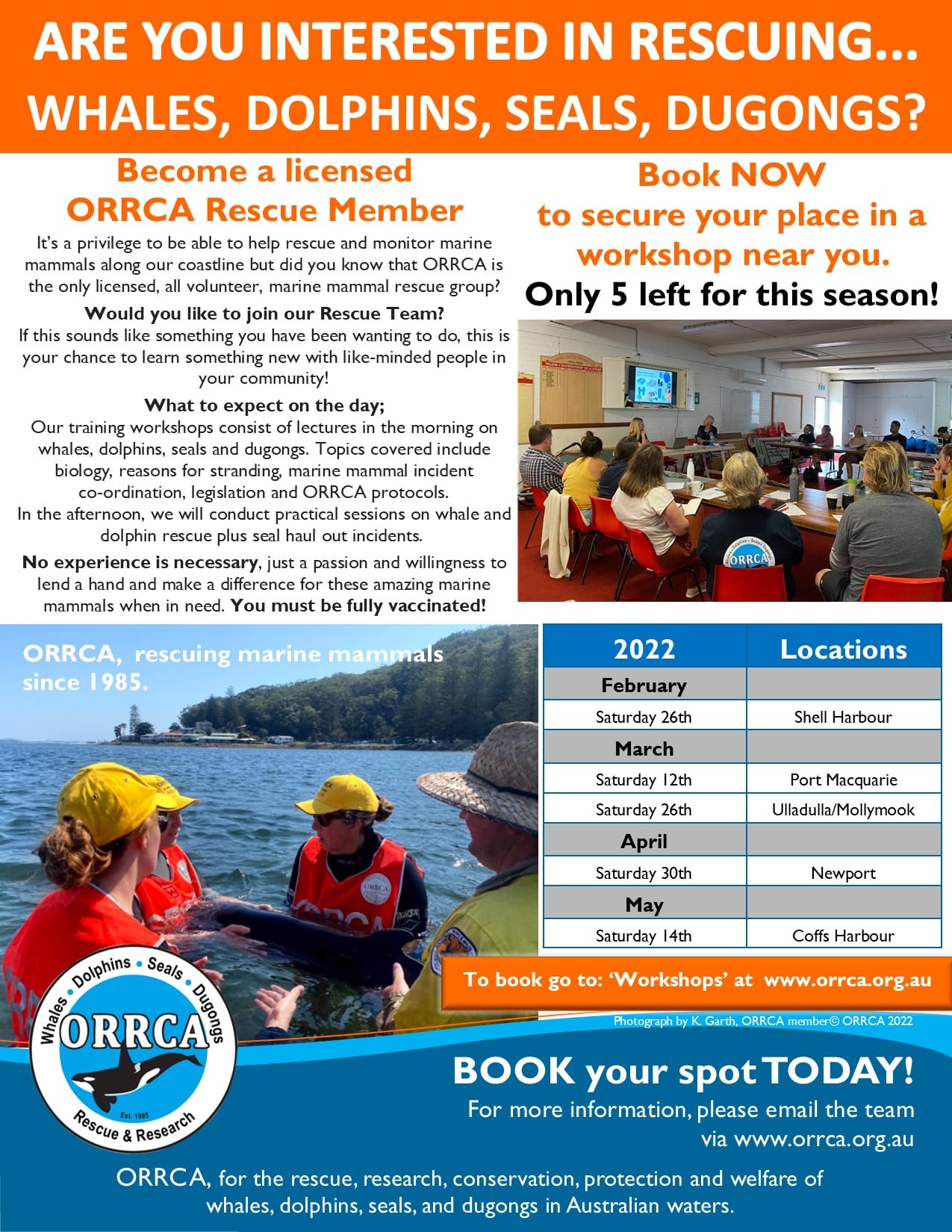


Surf Movie On The Big Screen: Featuring The Big Wave Project II
Macca Makeover
Five reasons Andy Warhol is so popular right now

Andy Warhol, like an image on one of his silkscreens, is multiplying. Suddenly, he is everywhere: in documentary series (The Andy Warhol Diaries on Netflix and Andy Warhol’s America on the BBC), in plays (The Collaboration at the Young Vic in London), and soon, at an auction house (his Marilyn Monroe painting goes on sale at Christie’s in May).
So why the current obsession with the pop artist? We believe there are striking resonances with our contemporary moment that might be fuelling the revival. Here are five of them:
1. War, Death And Disaster
The early 1960s marked a time when, much like our own, Russian tensions were high and the media was awash with violent scenes of war (Vietnam was often considered a proxy war between the US and the USSR). Warhol’s Death and Disaster series used the same silkscreen technique as his iconic, kitschy soup can artworks, only this time using newspaper images as the source material (plane crashes, poisonings, race riots and suicides, to name a few). The repetitive screen-printing process had the eerie effect of a kind of aestheticised post-traumatic stress disorder, evoking a desire for apathy in times of inescapable tragedy. “To be a machine” (one of Warhol’s most quoted mantras), to feel nothing, was the ultimate escapism.
2. ‘The Big C’
Almost half a century before it became one of the global hotspots for COVID deaths, New York emerged as the epicentre of the Aids crisis. In the 1980s, Warhol lost many friends to the disease and expressed an everyday terror in his diary entries. In many ways, this speaks to our own anxieties in the age of coronavirus. He sardonically referred to Aids as “the big C” after media scaremongering led to the widespread categorisation of the illness as “gay cancer”. In his final artworks we see a return to his earlier style but with noticeable religious themes, reworking Leonardo da Vinci’s The Last Supper. Some works from this final series even incorporated headlines from during the Aids crisis, as if in some final act of religious restitution, or perhaps, ironic supplication.
3. Embracing The ‘Swish’
In the early days of his career, Warhol’s queerness made him an outsider. Big names like Jasper Johns and Robert Rauschenberg described him as too “swish” because he didn’t convincingly pass in the straight New York art scene.
The famed Silver Factory became a space for Warhol to embrace the swish by welcoming a motley group of LGBTQ+ collaborators, many of whom are immortalised in Lou Reed’s song Walk on the Wild Side. His portrait series Ladies and Gentleman celebrates the beauty and diversity of the New York gay scene by bringing drag queens and trans women of colour to the fore, most famously the Stonewall Riots activist Marsha P Johnson. Warhol’s inclusive vision speaks to a new generation of LGBTQ+ youth inspired by prominent queer icons, from Olly Alexander to RuPaul.
4. 15 Minutes Of Fame
Warhol was immersed in the world of celebrity, from founding the glossy Interview Magazine to launching his MTV show Andy Warhol’s 15 Minutes. He achieved mainstream fame in the early 1970s by rubbing shoulders with stars at Studio 54, many of whom became the subjects of his portraits including Mick Jagger and Liza Minnelli.
Warhol understood that visibility was the key to fame: being seen in the right place, at the right time, with the right people. His 1968 comment about 15 minutes of fame is more relevant than ever before. He anticipated the likes of Kim Kardashian, a reality TV star turned global superstar, as well as the instant fame of ordinary people enabled by viral moments on TikTok, Instagram and YouTube.
5. The Man Behind The Art
The latest wave of Warhol content infuses the artist with a newfound vulnerability that makes us question and reassess who he really was. The Andy Warhol Diaries presents us with a deeply flawed but hauntingly human figure, far removed from the robotic printing machine he so desperately sought to be. It seems, in contemporary times, the man or woman behind the art is just as important – if not more so – than the art itself.
Above all, these recent depictions reveal the ever-changing mythology of Andy Warhol - he continues to be shaped by what we want him to be. As pop art theorist Lucy Lippard said: “Warhol’s films and his art mean either nothing or a great deal. The choice is the viewer’s.” But one thing is clear, the current spotlight on Warhol seems to suggest that he is an artist, once again, of the moment.![]()
Harriet Fletcher, Associate Lecturer in English and History, Lancaster University and Declan Lloyd, Associate Lecturer in Literature, Art and Film, Lancaster University
This article is republished from The Conversation under a Creative Commons license. Read the original article.
Pluto: ‘recent’ volcanism raises puzzle – how can such a cold body power eruptions?

Pluto, the Solar System’s largest dwarf planet, just became even more interesting with a report that icy lava flows have recently covered substantial tracts of its surface. In this context, “recently” means probably no more than a billion years ago. That’s old, of course – and there is no suggestion that volcanoes are still active – but it’s only a quarter the age of the Solar System and no one knows how Pluto brewed up the heat needed to power these eruptions.
The news, coming nearly seven years after NASA’s New Horizons probe made its spectacular flyby of Pluto on July 14, 2015, is thanks to analysis of images and other data by a team led by Kelsi Singer of the Southwest Research Institute in Boulder, Colorado.
Singer’s team draw particular attention to a mountainous feature named Wright Mons, which rises 4-5km above its surroundings. It is about 150km across its base and has a central depression (a hole) 40-50km wide, with a floor at least as low as the surrounding terrain.
The team claims that Wright Mons is a volcano, and cite the lack of impact craters as evidence that it is not likely to be older than 1-2 billion years. Many other areas of Pluto have been around long enough to accumulate large numbers of impact craters – no recent icy lava flows have covered them.
As volcanoes go, Wright Mons is a big one. Its volume exceeds 20 thousand cubic kilometres. Although considerably less than the volume of Mars’s biggest volcanoes, this is similar to the total volume of Hawaii’s Mauna Loa, and much greater than the volume of its above sea-level portion. This is particularly impressive given Pluto’s small size, with a diameter about a third that of Mars and a sixth that of Earth.

The Wright Stuff
In detail, the slopes of Wright Mons and much of its surroundings are seen to be crowded with hummocks up to 1km high and mostly 6-12km across. The team conclude that these hummocks are made primarily of water-ice, rather than nitrogen- or methane-ice that covers some other young regions on Pluto. They argue that this is consistent with the material strength necessary to form and preserve these domes, but they do recognise small patches of much weaker nitrogen-ice, mainly in the central depression.
The hummocks were likely created by some sort of ice volcanism, known by the technical term “cryovolcanism” – erupting icy water rather than molten rock. Pluto’s bulk density shows that it must have rock in its interior, but its outer regions are a mixture of ices (water, methane, nitrogen and probably ammonia and carbon monoxide, too, all of which are less than a third as dense as rock) in the same way that the crust of the Earth and other rocky planets is a mixture of several silicate minerals.
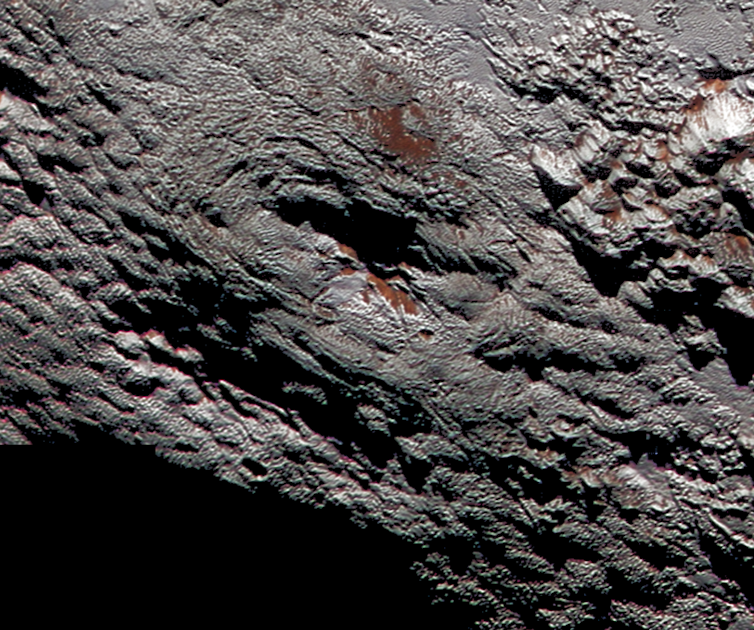
At Pluto’s surface temperature of well below -200°C, ice made of frozen water is immensely strong. It can (and on Pluto, does) form steep mountains that will last for eternity without sagging downhill like a glacier on the much less frigid Earth, where water-ice is weaker.
What Melts The Ice?
Ice, of course, melts at much lower temperatures than rock. And when there is a mixture of two ices, melting can begin at a lower temperature than for either of the pure ices (the same principle applies in silicate rock made of different minerals). This makes melting even easier. Despite this, it is a surprise to find evidence of relatively young water-rich cryovolcanic eruptions on Pluto, because there is no known heat source to power them.
There is only very limited scope for Pluto’s interior to be heated by tidal forces – a gravitational effect between orbiting bodies, such as a moon and a planet – which warm the interiors of some of the moons of Jupiter and Saturn. And the amount of rock inside Pluto is not enough to produce much heat from radioactivity.
Singer and her coworkers speculate that Pluto somehow held on to heat from its birth, which was unable to leak out until late in the body’s history. This would be consistent with Pluto having a deep internal liquid water ocean, suggested based on other evidence.
If the hummocks from which Wright Mons is built do represent water-ice eruptions, this stuff clearly was not flowing freely like liquid water, but must have been some kind of gooey crystal-rich “mush”, maybe within a completely frozen, but still pliable, outer skin that confined each effusion of fluid into a dome-like hummock.
A Hole In The Argument?
The team cite the depth and volume of the central depression of Wright Mons to dismiss earlier suggestions that this is a volcanic crater (a caldera) or that it has been excavated by explosive eruptions. Instead, they regard it as a gap that somehow avoided being covered by erupted hummocks.
I have my doubts about that, because there is an even bigger probable volcano, Piccard Mons, to the south of Wright Mons that also has a large central depression. It strikes me as too much of a coincidence for there to be two adjacent volcanoes both with fortuitous holes in their middles. I think it is more likely that these central depressions are somehow integral to how these volcanoes grew or erupted.
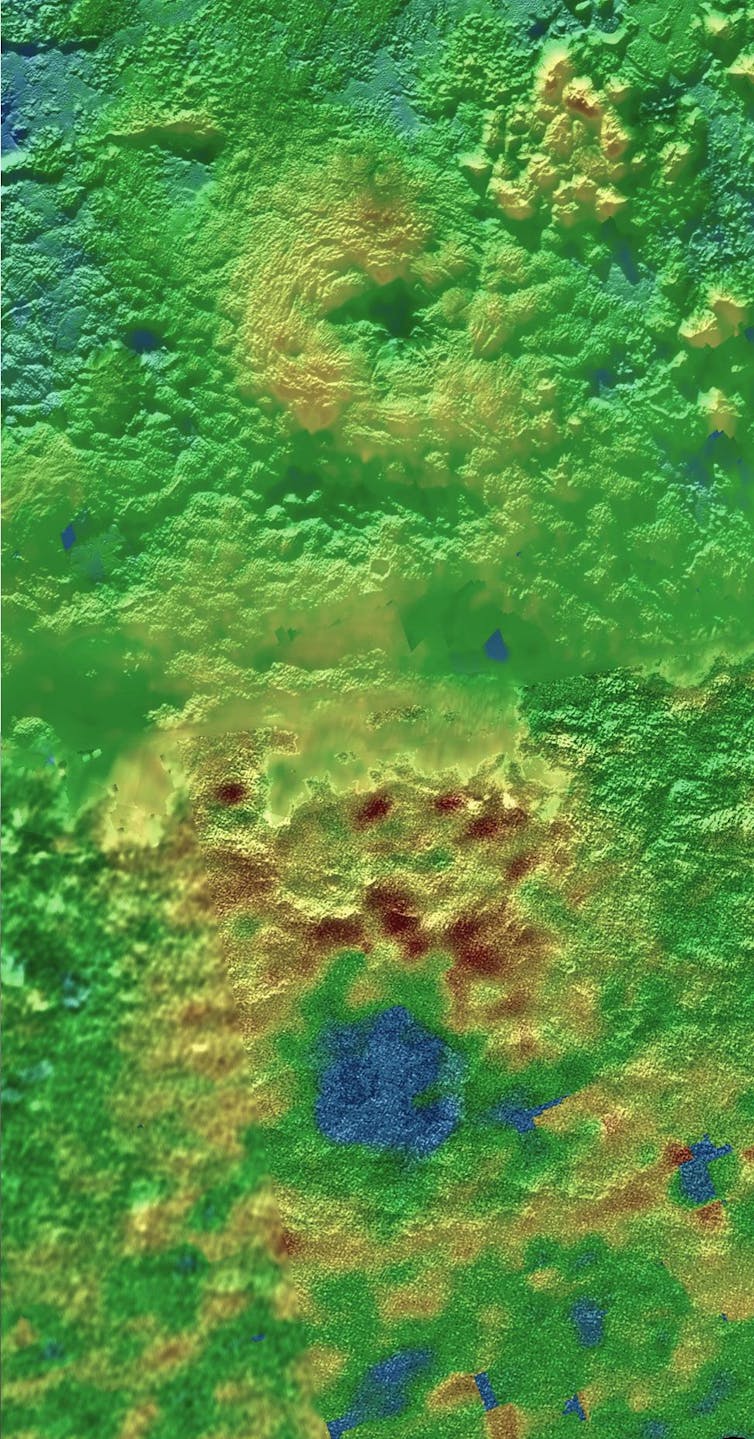
Piccard Mons is less well characterised than Wright Mons because, by the time New Horizons made its closest approach, Pluto’s rotation had carried Piccard Mons into darkness. The flyby was so fast that only the side of Pluto facing the Sun at the right time could be seen in detail. However, New Horizons was able to image Piccard Mons thanks to sunlight weakly reflected onto the ground by haze in Pluto’s atmosphere.
That was a remarkable achievement, but it leaves us wanting to know more. What extra details are lurking in the poorly imaged half of Pluto? It will probably be decades before we find out, or learn much more about how these icy volcanoes formed.![]()
David Rothery, Professor of Planetary Geosciences, The Open University
This article is republished from The Conversation under a Creative Commons license. Read the original article.
Trying to cut back on alcohol? Here’s what works

With everything going on over the past couple of years, many people have changed their drinking habits.
We’ve seen an increased demand for support, suggesting more people are trying to cut back or quit.
There are so many options for cutting back or quitting alcohol it’s hard to know what will be most effective.
What Works Depends On How Much You Drink
Most people successfully quit or cut back their alcohol consumption on their own.
People who drink more frequently are much more likely to have symptoms of dependence and might find it more difficult.
You might be dependent if:
you can’t easily go a day without drinking alcohol, or find it hard to cut back
a lot of your social activities include or are based around drinking
you find yourself thinking about or wanting alcohol a lot
you find it difficult to control the amount you drink once you start
you need to drink a lot to feel the effects
you experience withdrawal symptoms, even mild ones, such as feeling unwell or a slight shaking in your hands when you go a day or two without alcohol.
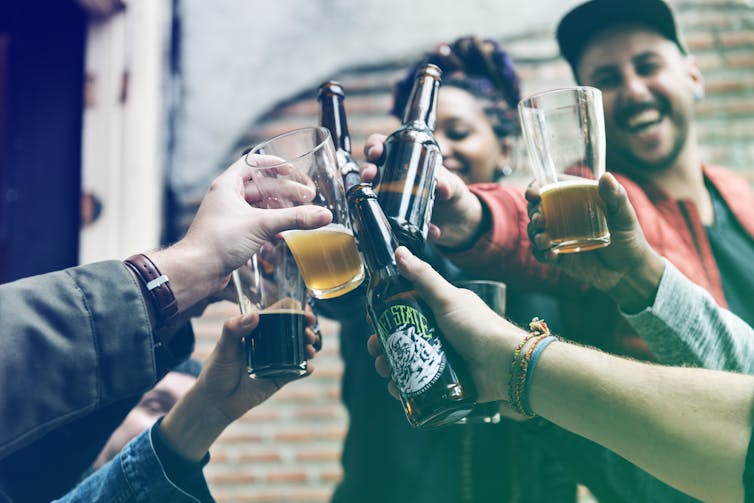
The more of these signs you have and the more severe they are, the more dependent you’re likely to be. You can check your risk of dependence here.
If you have a mild dependence on alcohol, you may be able to cut back on your own. But if you are moderately dependent, you may need to get some kind of support.
If you are severely dependent, you should seek medical advice before you make any change to your drinking because stopping suddenly can cause severe health problems, including seizures and even death in some people.
For people who are severely dependent, the usual recommendation is to take a permanent or temporary break from alcohol. It may take six months to a year or more before you are able to start drinking again. Some people find it’s better for them not to drink again at all. With severe dependence, there’s a high risk of quickly going back to heavy drinking if you just try to cut back.
If you experience any symptoms of dependence, once you stop or cut back your drinking, you might need specialist treatment or ongoing support to prevent going back to heavy drinking.
‘Cold Turkey’ Or Reduction?
If you’re not dependent, you should be able to either reduce the quantity or frequency of drinking or quit altogether. You may do this on your own or choose to get some support. If one method doesn’t work, try a different way.
If you experience mild to moderate dependence, every time you have a drink it can become a trigger to drink more. So it’s sometimes easier to increase drink-free days, rather than reducing the quantity on drinking days, or to quit altogether for a period of time.

People who are severely dependent usually require some kind of withdrawal support to stop drinking. It is usually better to stop altogether (“cold turkey”) as long as you have medical support. You can undertake withdrawal treatment in a hospital, at home with the help of a GP or nurse, or via telehealth. Alcohol withdrawal typically lasts about five to seven days.
Zero-Alcohol Drinks
Zero-alcohol drinks are alcoholic drinks with the alcohol removed but which retain a taste similar to the alcoholic version. There is now a huge variety of options for spirits, beer and wine.
If you are not dependent but are trying to reduce your alcohol intake for health or other reasons, these can be a good option. By replacing some or all of your usual alcoholic drinks with zero-alcohol drinks, you can still enjoy the social aspects of drinking without the health risks of alcohol.
If you are dependent on alcohol, the smell and taste of zero-alcohol drinks can act as a trigger for drinking alcohol. They might make it more difficult to make permanent changes to your drinking.
Treatment Apps And Online Support
A range of computerised, web-based, and mobile apps have been developed to support people cutting back or quitting alcohol. They have shown promising results in early trials. The benefit of these apps is accessibility, but the outcomes are modest and they seem to work best in conjunction with professional support.
Hello Sunday Morning’s Daybreak program is a large online alcohol support community, accessed through a mobile and desktop app. It’s designed for moderate drinkers who want to cut back or quit. Early research suggests it’s effective in reducing drinking, as well as improving psychological well-being and quality of life.
Some previously face-to-face support groups like SMART Recovery and Alcoholics Anonymous have moved online, which has increased accessibility. These are typically more suited to people who are dependent on alcohol.
Psychological Interventions
BRIEF INTERVENTIONS
As little as five minutes of advice from a GP can reduce alcohol consumption by 30%, especially for people who are in the mild to moderate dependence category. So it’s worth chatting to your doctor if you need a little help getting started.
COUNSELLING AND PSYCHOLOGICAL THERAPY
The main treatment type to help with alcohol issues is counselling. Sessions are usually once a week with a qualified professional, such as a psychologist. Sometimes they are delivered in group settings. Counselling is suitable for any level of drinker who is trying to make changes.
Some of the main evidence-based counselling treatments in Australia are behavioural and cognitive therapies, such as cognitive behavioural therapy and mindfulness-based relapse prevention. These types of treatments have been shown to be at least as effective as medication

INTENSIVE GROUP PROGRAMS
A number of more intensive group programs are suited to people who are dependent on alcohol or who are having significant problems, including:
residential rehabilitation, which is usually for people who have tried other treatments unsuccessfully or who may be unsuitable for non-residential treatment because their home life is not supportive of making changes. It has been shown to be effective in increasing abstinence in dependent drinkers
day programs, which are similar to residential rehabilitation programs but participants live at home and go in each day. These are a relatively new treatment type and there is limited good quality research on their outcomes.
Medication
A number of medications can help people who are moderately to severely dependent on alcohol. They tend to work best in conjunction with counselling.
disulfiram is an older medication that works on the alcohol metabolism system and induces nausea and vomiting if alcohol is taken at the same time
acamprosate can help prevent relapse in people who have already been through withdrawal
naltrexone reduces cravings in heavy drinkers.
Self-Help Groups
Alcoholics Anonymous’s 12-step movement has a long history dating back to the 1930s, when there was very little available in the way of real alcohol treatment. There is relatively little research on AA and much of that has been conducted from within the organisation. The known outcomes are modest – the success rate is estimated to be around 10% and the dropout rate appears high.
AA can be helpful for some people and also provides a very well-established peer support network if you need support. It seems to be more effective in conjunction with professional treatment.
There are many options if you are trying to reduce your drinking and no single strategy works for everyone. The best approach is to start with something that looks appealing and feasible to get the outcomes you are looking for. If that’s not effective, try something else or seek professional help.![]()
Nicole Lee, Professor at the National Drug Research Institute (Melbourne), Curtin University
This article is republished from The Conversation under a Creative Commons license. Read the original article.
Remaking history: cooking slippery, slimy and oozy historical recipes made me uncomfortably conscious of my own anatomy

In this series, academics explain the ways they are recreating historical practices, and how this impacts their research today.
Old recipes and cookery books are increasingly being recognised as archival records, documenting more than just the food that was eaten in the past. They help us track consistencies and changes in our tastes and traditions, and in the techniques and technologies we employ or rely on to prepare a dish or meal.
Whether hand written or commercially produced, the fact that the recipes were recorded indicates the author felt the resulting foods were worth eating.
When you flick through old Australian recipe books, you will find some of the dishes are familiar, if not the same (“fricasees” and “ragouts” we now know as casseroles), while others, such as flummery and blancmange are echoed in today’s more sophisticated bavarois and pannecotta.
Other dishes which were once common in old cookbooks are curious or even peculiar to the contemporary cook, especially those made with meat cuts that some Australians might balk at: mock turtle soup (made with a calf’s head), brawn (made from a pigs’ head), calves’ feet jelly and boiled tongues being standouts.
As a historian with a Le Cordon Bleu Master’s degree in gastronomy, (which I describe as the study of food and food cultures), I am an intrigued by foods such as these. They are still popular in many other cultures’ cuisines, but have lost their place in Australia’s everyday culinary repertoire.
Why have they disappeared from our menus, and what does their absence from our kitchens, dining tables – and cookbooks – say about contemporary food choices?

Sensory And Visceral
I take a very hands-on approach to researching our food heritage. My gastronomy degree is an academic qualification – I am not a formally trained cook, let alone chef. I have an Anglo-Celtic background that has not exposed me to the majority of “lost” dishes mentioned above in the normal course of life.
In order to understand them – and, importantly, the processes involved in making them – reading recipes is not enough. To write or speak about them with any authority, I need to experience them myself.
I do not profess to be exactly recreating the past or replicating the techniques and resulting dishes. Technological and food safety standards have changed the ingredients and necessary equipment to cook with them, but my experimental and explorative “forensic” exercises have been enlightening and instructive.

They have provided me with a far more intimate connection with these dishes and appreciation of the time, skills and effort required to create them – even with modern cooking facilities – than words on a page could ever conjure.
The sensory and, at times, visceral nature of making these dishes has been particularly educational, but often challenging and discomforting.
I recognise now the vague, nondescript but distinctive smell that is emitted when reconstituting jelly crystals as that which emanates from boiling calves’ feet: the fruity flavours and colouring a thin veil for the true origins of animal-derived gelatine.
Just the thought of handling an ungainly, surprisingly large, dense and heavy ox-tongue, trimming away the unsightly connecting ligaments and peeling its thin but leathery skin from the organ makes me uncomfortably conscious of my own tongue’s anatomy.
Cooking whole animal heads – their eyes staring back at me (accusingly? beseechingly?) as the pot bubbled away on the stove – was quite disarming.

Dismembering the pig’s face to retrieve the edible parts for brawn (cheeks, jowls, palate, tongue and snout) is a sticky, slippery and messy job.
While these experiential and embodied forms of self-education have elicited feelings of repugnance, to me they are tangible ways of connecting the past and the present, sharing experiences with cooks who also made these dishes or followed these recipes.
Slippery, Slimy And Oozy
Emotional responses are of course individual, and imbued with cultural and personal meaning. My feelings of distaste or revolt may not have been experienced by cooks and diners who welcomed these dishes onto their tables.
With the gradual disappearance of local butchers’ shops working with whole animals, our meat, poultry and fish is often sold in plastic packaging, often deboned or filleted with skin removed, trimmed of fat and sinew, ready-portioned, perhaps marinated and ready to cook without further handling.
Moisture sachets and packaging that help absorb fluids and odours make us less tolerant of the natural realities of animal parts that are messy, bloody, sinewy, gristly, viscous, gelatinous, slippery, slimy and oozy.
While convenient and time-saving for consumers, these preparations distance and disconnect consumers from the source animal. We are losing practical skills, but also the sensory connections and emotional sensibilities that come with working with them.

Many meat eaters who are comfortable with conventional flesh-meats recoil at cuts that are reminders of the once-living animal, finding heads, tongues, feet and tails revolting, perhaps horrifying, even barbaric.
Conversely, nose-to-tail dining, which makes use of every edible part of an animal is lauded as a respectful and responsible acknowledgement of the environmental impacts of meat production and a way of honouring the life taken from an animal bred for consumption.
If we consider the adage that food should not simply be good to eat but good to think about – morally and ethically – is resisting or rejecting these foods prejudice or a mark of refined taste? Were past generations crude and uncouth in their tastes and dining habits, or do they in fact hold the higher moral ground, coming face-to-face with the reality of their food sources?

A Recipe To Try: Mock Turtle Soup
Get a calf’s head as fresh as possible, split it and take out the brains, wash and clean it well and lay it to steep in cold water for an hour. Then put into a stewpan with enough water to cover it, and two or three pints over; set it on the fire to boil, let it simmer 1½ hours; take out the head, and when cold enough cut [the meat] into pieces, from 1 inch square, and peel the tongue and cut it into pieces, only smaller, and put these into a pan till the next day, covered with a little of the liquor.
Then put all the bones of the head, and about 4 lbs of shin beef into the liquor in the stewpan. To this liquor when boiling, must be added the rind of a lemon, 1 turnip, and a little mace and allspice, and a bunch of sweet herbs with white peppers and salt to taste. Let these boil slowly for 5 hours and then strain.
Warm up the next day with the pieces of meat, egg balls and two or three glasses of white wine (sherry preferred).
— Mrs. Arthur Hardy’s recipe. The Kookaburra Cookery Book, The Lady Victoria Buxton Girls’ Club, Adelaide, South Australia. 1912.
Jacqueline Newling, Honorary Associate, History, University of Sydney
This article is republished from The Conversation under a Creative Commons license. Read the original article.
Supernovas, auroral sounds and hungry tides: unpacking First Nations knowledge of the skies
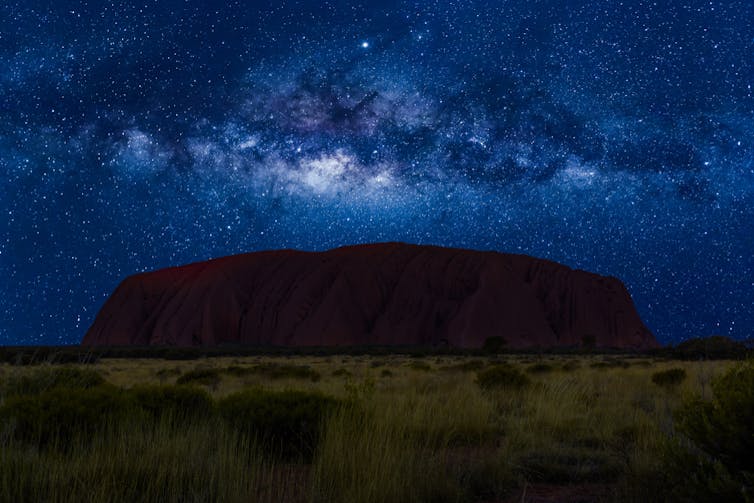
Duane Hamacher’s The First Astronomers explores the deep and living star knowledge of First Nations people from around the world – and challenges the notion that Indigenous knowledge is not scientific.
Review: The First Astronomers: How Indigenous Elders Read the Stars - Duane Hamacher, with Elders and Knowledge Holders (Allen & Unwin)
This magnificent book is the latest in a growing body of work showcasing Indigenous knowledge of the natural world.
It follows other popular texts, including Bill Gammage’s The Biggest Estate on Earth (2011), Bruce Pascoe’s widely debated and important Dark Emu (2014), Australia’s First Naturalists (2019) by Penny Olsen and Lynette Russell, and the First Knowledges series edited by Margo Neale.
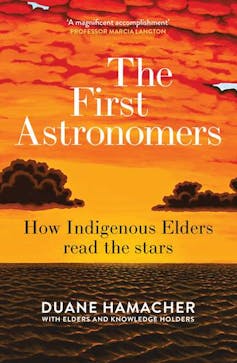
Astrophysicist Hamacher has been guided by Elders and Knowledge Holders Ghillar Michael Anderson, Segar Passi, John Barsa, David Bosun, Ron Day and Alo Tapim.
This book developed from a collaboration with Torres Strait Islander scholar Professor Martin Nakata, a leading authority on the intersection of Indigenous and Western ways of knowing.
It’s stunning in scope, impressive in detail and accessible in style. For readers with no background in astronomy (like me), terms are clearly explained.
Importantly, Hamacher reflects on what he is learning throughout, demonstrating his willingness to listen and learn. His example reminded me to reflect on my own assumptions about different ways of knowing.
Challenging Western Scientific Knowledge
First Nations people have been observing the skies for millennia. This book recognises that Indigenous and Western ways of knowing can work together. Indigenous astronomy has often challenged Western scientific knowledge, motivating further scientific inquiry.
For example, auroras have long been witnessed by First Nations people, both in high latitudes near the Arctic and low latitudes in Aoteoroa/New Zealand and Australia. First Nations people have reported auroras sounding like “rustling grass, or a person walking through snow”. Sámi – the indigenous people of the northernmost parts of Sweden, Finland and Norway – refer to auroras as guovssahas, meaning “the light you can hear”.
The Western scientific community was dismissive of these “auroral sounds”. But in 2016 a group of Finnish scientists, guided by Sámi and Inuit traditions, confirmed that they exist.

The Movement Of The Planets And The Twinkling Of The Stars
Another concept that First Nations people understood early was the relative motion of the planets, including retrograde motion, when a planet appears to move backwards in the sky owing to its relative position to Earth.
Winifred Buck, an Ininew Elder from Manitoba, Canada, explains that retrograde motion is referred to as mooswa acak or “moose spirit”, because a moose is inclined to circle back when startled, in the same way that Mars appears to be circling back during retrograde motion.
In the most intriguing chapter, Hamacher describes how the twinkling (scintillation) of stars – a source of frustration in Western astrophysics – has been harnessed by First Nations people to understand atmospheric conditions.
For example, for the people of Mabuyag in the Torres Strait, stellar twinkling indicates heavy wind, temperature change and approaching rain. The Wardaman of the Northern Territory use this twinkling to predict the approach of the wet season.
Interpreting The Colonial Archive
Variable stars – stars that change in brightness through time – were not formally defined as a phenomenon by Western astronomers until 1836. Yet, as Hamacher reveals, First Nations people already knew about them.
The Irish anthropologist Daisy Bates spent nearly two decades in Kokatha Country at Ooldea Mission in the Great Victoria Desert, where she recorded local oral traditions, including star stories, which were published throughout the 1920s. Bates recorded the story of Nyeeruna (Orion), a man in the stars, who pursued the young Yugarilya sisters.
She struggled to explain the stars that brightened and faded in the story, wrongly attributing them to “emissions from nebulae”. Unbeknown to Bates, she was recording traditional knowledge of the variable nature of Betelgeuse and Aldebaran.
This raises an important point. Where specialist knowledge of First Nations people has been recorded by Western observers like Bates, early ethnographies need to be revisited and reassessed by those with relevant knowledge. This is a point that has been raised before, in books such as Dark Emu.

Similarly, traditional knowledge also recognised novas, supernovas and supernova imposters. In 1847, William Stanbridge recorded Boorong observations of what (according to Hamacher) must have been the Great Eruption of Eta Carinae, which was incorporated into pre-existing oral traditions as a female crow.
The Strength Of Oral Traditions
In many examples throughout the book, Hamacher shows how oral traditions have captured and transmitted Indigenous knowledge.
First Nations people possessed a complex understanding of positional astronomy, which was used to navigate the land and sea. They understood how cardinal points can be discerned from the stars. In the Torres Strait, the gills of the shark constellation known as Beizam (the Big Dipper in the northern hemisphere) are used to orient north.
Long-distance travel routes are also mapped via the stars, with waypoints on land committed to memory. Travellers “sing the land”, instilling a memory of the journey. Hamacher reveals that many paths and roads imposed by European colonists overlay existing Songlines and pathways: for example, the Great Western Highway through the Blue Mountains.
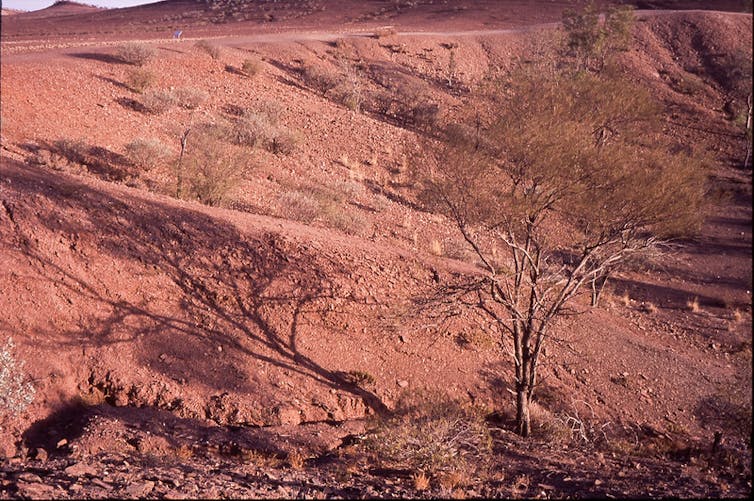
In his final chapter, “The Falling Stars”, Hamacher explores the cultural significance and memories associated with shooting stars and meteorite impacts. For many First Nations people, shooting stars are thought to mark the departure of a soul.
The incredible intergenerational memory associated with the formation of what are today known in Arrernte language as Tatyeye Kepmwere (the Henbury Craters, on the boundary of Arrernte and Luritja lands in the Northern Territory) is also detailed.
Aboriginal people had long known that the 15 craters were created by meteorite impact.
In 1921, prospector James Mitchell asked a local Aboriginal man to accompany him to the site and the man refused, explaining in Luritja language that was where “a fiery devil ran down from the Sun and made his home in the Earth”. In 1931, a geologist established the craters as a meteorite impact site. Radiometric dating has since confirmed that the craters are 4,200 years old.
Recognising Indigenous Knowledge
Hamacher closes his book by acknowledging the expanding cohort of Indigenous people currently working in astronomy. One is Dr Stacy Mader, a Gidja Man who works for the CSIRO at Parkes Observatory in New South Wales. Another is Kirsten Banks, a Wiradjuri woman, PhD Candidate in astrophysics at UNSW, and TEDx speaker.
Karlie Noon and Krystal Di Napoli, Gomeroi women pursuing and holding qualifications in astrophysics, have co-authored Sky Country (2022), a book in the First Knowledges series.
As an outcome of a 2016 working group, over a hundred star names from Indigenous languages were assigned to visible stars by the International Astronomical Union (IAU). In 2017, the organisation formally approved the Wardaman name, Ginan, to the fifth-brightest star in the Southern Cross (Epsilon Crucis).
Hamacher also recognises the importance of incorporating Indigenous ways of knowing into school curricula, such as Professor Marcia Langton’s education modules for secondary schools in the areas of fire, water and astronomy.
The First Astronomers contains three key messages. Firstly, many so-called Western scientific “discoveries” have long been known by First Nations people, a point which echoes the message of other popular texts. Secondly, early ethnographies which include First Nations specialist knowledge, need to be interpreted by those with relevant knowledge of the subject material. Finally, the complex, scientific and long-established knowledge of the sky held by First People is retained through the strength of oral traditions.
And as Hamacher states, “there is a great deal more we can learn if we simply listen”.![]()
Mirani Litster, Lecturer in Archaeology, James Cook University
This article is republished from The Conversation under a Creative Commons license. Read the original article.
There is, in fact, a ‘wrong’ way to use Google. Here are 5 tips to set you on the right path

I was recently reading comments on a post related to COVID-19, and saw a reply I would classify as misinformation, bordering on conspiracy. I couldn’t help but ask the commenter for evidence.
Their response came with some web links and “do your own research”. I then asked about their research methodology, which turned out to be searching for specific terms on Google.
As an academic, I was intrigued. Academic research aims to establish the truth of a phenomenon based on evidence, analysis and peer review.
On the other hand, a search on Google provides links with content written by known or unknown authors, who may or may not have knowledge in that area, based on a ranking system that either follows the preferences of the user, or the collective popularity of certain sites.
In other words, Google’s algorithms can penalise the truth for not being popular.
Google Search’s ranking system has a fraction of a second to sort through hundreds of billions of web pages, and index them to find the most relevant and (ideally) useful information.
Somewhere along the way, mistakes get made. And it’ll be a while before these algorithms become foolproof – if ever. Until then, what can you do to make sure you’re not getting the short end of the stick?
One Question, Millions Of Answers
There are around 201 known factors on which a website is analysed and ranked by Google’s algorithms. Some of the main ones are:
- the specific key words used in the search
- the meaning of the key words
- the relevance of the web page, as assessed by the ranking algorithm
- the “quality” of the contents
- the usability of the web page
- and user-specific factors such as their location and profiling data taken from connected Google products, including Gmail, YouTube and Google Maps.
Research has shown users pay more attention to higher-ranked results on the first page. And there are known ways to ensure a website makes it to the first page.
One of these is “search engine optimisation”, which can help a web page float into the top results even if its content isn’t necessarily quality.
The other issue is Google Search results are different for different people, sometimes even if they have the exact same search query.
Results are tailored to the user conducting the search. In his book The Filter Bubble, Eli Pariser points out the dangers of this – especially when the topic is of a controversial nature.
Personalised search results create alternate versions of the flow of information. Users receive more of what they’ve already engaged with (which is likely also what they already believe).
This leads to a dangerous cycle which can further polarise people’s views, and in which more searching doesn’t necessarily mean getting closer to the truth.
A Work In Progress
While Google Search is a brilliant search engine, it’s also a work in progress. Google is continuously addressing various issues related to its performance.
One major challenge relates to societal biases concerning race and gender. For example, searching Google Images for “truck driver” or “president” returns images of mostly men, whereas “model” and “teacher” returns images of mostly women.
While the results may represent what has historically been true (such as in the case of male presidents), this isn’t always the same as what is currently true – let alone representative of the world we wish to live in.
Some years ago, Google reportedly had to block its image recognition algorithms from identifying “gorillas”, after they began classifying images of black people with the term.
Another issue highlighted by health practitioners relates to people self diagnosing based on symptoms. It’s estimated about 40% of Australians search online for self diagnoses, and there are about 70,000 health-related searches conducted on Google each minute.
There can be serious repercussions for those who incorrectly interpret information found through “Dr Google” – not to mention what this means in the midst of a pandemic.
Google has delivered a plethora of COVID misinformation related to unregistered medicines, fake cures, mask effectiveness, contact tracing, lockdowns and, of course, vaccines.
According to one study, an estimated 6,000 hospitalisations and 800 deaths during the first few months of the pandemic were attributable to misinformation (specifically the false claim that drinking methanol can cure COVID).
To combat this, Google eventually prioritised authoritative sources in its search results. But there’s only so much Google can do.
We each have a responsibility to make sure we’re thinking critically about the information we come across. What can you do to make sure you’re asking Google the best question for the answer you need?
How To Google Smarter
In summary, a Google Search user must be aware of the following facts:
Google Search will bring you the top-ranked web pages which are also the most relevant to your search terms. Your results will be as good as your terms, so always consider context and how the inclusion of certain terms might affect the result.
You’re better off starting with a simple search, and adding more descriptive terms later. For instance, which of the following do you think is a more effective question: “will hydroxychloroquine help cure my COVID?” or “what is hydroxychloroquine used for?”
Quality content comes from verified (or verifiable) sources. While scouring through results, look at the individual URLs and think about whether that source holds much authority (for instance, is it a government website?). Continue this process once you’re in the page, too, always checking for author credentials and information sources.
Google may personalise your results based on your previous search history, current location and interests (gleaned through other products such as Gmail, YouTube or Maps). You can use incognito mode to prevent these factors from impacting your search results.
Google Search isn’t the only option. And you don’t just have to leave your reading to the discretion of its algorithms. There are several other search engines available, including Bing, Yahoo, Baidu, DuckDuckGo and Ecosia. Sometimes it’s good to triangulate your results from outside the filter bubble.

Muneera Bano, Senior Lecturer, Software Engineering, Deakin University
This article is republished from The Conversation under a Creative Commons license. Read the original article.
Hidden away in a museum, we found the skull of a rare armoured dinosaur that roamed Queensland 105 million years ago
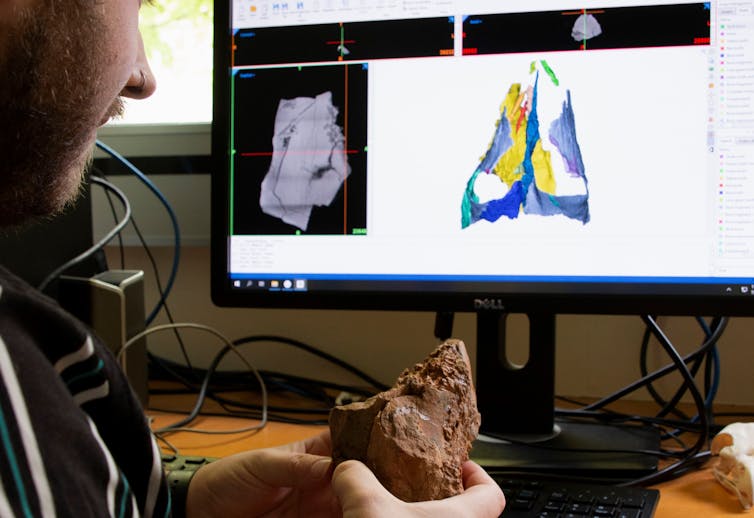
You might think all important dinosaur “discoveries” are made as soon as fossils are collected in the field – that palaeontologists instantly know the significance of what they’ve found.
This is often true. But sometimes, and maybe more often than you’d think, fossils will be stored in museum collections for years before the right researchers come along to “rediscover” them. This was the case for one Australian ankylosaur skull, which we’ve published about today in the journal Frontiers in Earth Sciences.
Originally discovered in 2005 near the regional Queensland town of Boulia, the specimen remained at the South Australian Museum until we enquired about the museum’s dinosaur collection.
Ankylosaurs, the so-called “armoured” dinosaurs, are a group of dinosaurs that lived from the Early Jurassic to the Late Cretaceous – roughly 196 to 66 million years ago.
Compared to other dinosaurs, such as the long-necked sauropods and smaller herbivorous ornithopods, ankylosaur remains are rarely found in Australia and the broader southern hemisphere. So you can imagine our excitement when we “rediscovered” Australia’s second ankylosaur skull.
An analysis of the skull bones and teeth suggests it belongs to the genus Kunbarrasaurus, which also contains the first Australian ankylosaur skull.
What Were Ankylosaurs Like?
Ankylosaurs were medium-to-giant herbivorous dinosaurs (anywhere between 200-5,000kg) that walked on four legs and were covered in armoured plates or spikes. Some are recognisable by tail clubs, such as the five-tonne Ankylosaurus magniventris from North America.
Of the 75 recognised ankylosaur species, only five are from the southern hemisphere. Several small and incomplete fossils are spattered across the ancient Gondwana supercontinent – which is now dispersed and broken up into Australia, India (which back then was in the southern hemisphere), Africa, Antarctica and South America.
These fossils offer tantalising hints of what was once a widespread ankylosaur presence in these regions. The five Gondwanan ankylosaur species are Kunbarrasaurus ieversi and Minmi paravertebra from Australia, Antarctopelta oliveroi from Antarctica, Spicomellus afer from Africa, and Stegorous elengassen from Chile.
A Dinosaur From Boulia
The bones of the ankylosaur from Boulia were found encased in a large, hard rock called a concretion. Concretions often form around organic matter, and likely helped the initial preservation of the fossil. When it was discovered, all that was visible was a series of rock chunks that could have easily been overlooked.

The collected fossils include limbs, vertebrae, many armoured plates and, excitingly, a partial skull. Along with several skull bones, the skull also includes the impressions of many teeth from the upper jaw.
The entire skull block was scanned at the Australian Synchrotron in Melbourne. The synchrotron shoots x-rays at the specimen, generating a series of images that can be processed to reveal the bones in 3D (as seen below).
This technique is often used for fossils that may otherwise get damaged or lose important information if physically removed from the rock.
We analysed the scans and discovered the bones are those of the roof of the mouth (or the palate). We also found several teeth “floating” within the block.
Placing Southern Ankylosaurs In The Family Tree
Identifying this new ankylosaur as Kunbarrasaurus suggests this particular dinosaur was potentially more widespread in Queensland than previously thought, and may have existed for more than five million years. But what do ankylosaurs from Australia, and Gondwana more generally, tell us about the group’s evolution as a whole?
As it stands, the vast majority of ankylosaurs are from either North America, Europe, or Asia. And most are from the late Cretaceous (100 to 66 million years ago). However our study suggests a separate and possibly earlier diversity of ankylosaurs in the south, a theory which is supported by recent discoveries from South America and Africa.
The southern radiation of ankylosaurs includes the species from Australia, Chile and Antarctica, all of which together form the group called Parankylosauria.

The Importance Of The Boulia Ankylosaur
Because the fossil block was scanned with x-rays and reconstructed in 3D, we were able to explore aspects of the ankylosaur’s airways, or “choanae”. These were not well preserved in the first and only other known Kunbarrasaurus skull.
Typically ankylosaur choanae are long, located close to the front of the snout and can have multiple openings within the palate. Coupled with complex nasal passages, these features point to the group generally having a keen sense of smell.
However, in the Boulia ankylosaur there is only one opening on each side, and they are located towards the back of the palate. This suggests Kunbarrasaurus did not have the complex nasal system seen in ankylosaurs such as Pawpawsaurus campbelli and Euplocephalus tutus. As such, it may have had a reduced sense of smell compared to most of its northern counterparts.
There is still a lot we don’t know about ankylosaur evolution, especially the Gondwanan species. Perhaps more of these discoveries await us in museum troves.![]()
Timothy Frauenfelder, PhD Candidate in Palaeontology, University of New England; Nicolas Campione, Senior lecturer, University of New England, and Phil Bell, Palaeontologist, Earth Science Faculty, University of New England
This article is republished from The Conversation under a Creative Commons license. Read the original article.
Book Of The Month - April 2022: My Brilliant Career - By Miles Franklin
.jpg?timestamp=1648576988777)
Was made staff cook against my will. ... Then Miss Brown made a row with everyone & insisted on being head. I just let 'em muddle along and take no notice as I've had a year's training in London of English ways. Will think my own thoughts and write a book if the plot comes into my head. — Miles Franklin (personal diary), describing her wartime service


New Shorebird Identification Booklet
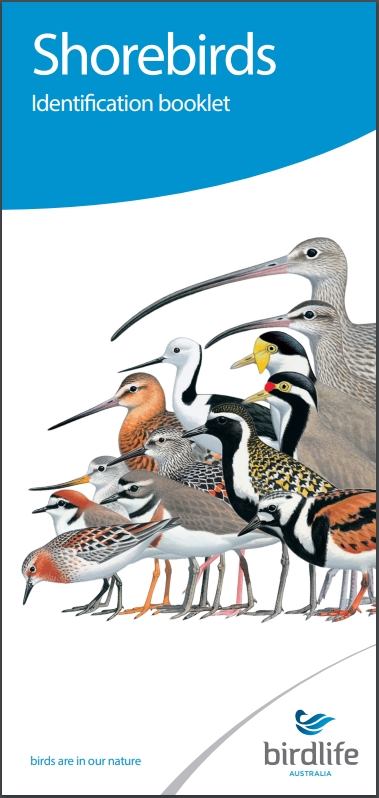 The Migratory Shorebird Program has just released the third edition of its hugely popular Shorebird Identification Booklet. The team has thoroughly revised and updated this pocket-sized companion for all shorebird counters and interested birders, with lots of useful information on our most common shorebirds, key identification features, sighting distribution maps and short articles on some of BirdLife’s shorebird activities.
The Migratory Shorebird Program has just released the third edition of its hugely popular Shorebird Identification Booklet. The team has thoroughly revised and updated this pocket-sized companion for all shorebird counters and interested birders, with lots of useful information on our most common shorebirds, key identification features, sighting distribution maps and short articles on some of BirdLife’s shorebird activities.
The booklet can be downloaded here in PDF file format: http://www.birdlife.org.au/documents/Shorebird_ID_Booklet_V3.pdf
Paper copies can be ordered as well, see http://www.birdlife.org.au/projects/shorebirds-2020/counter-resources for details.
Download BirdLife Australia's children’s education kit to help them learn more about our wading birdlife
Shorebirds are a group of wading birds that can be found feeding on swamps, tidal mudflats, estuaries, beaches and open country. For many people, shorebirds are just those brown birds feeding a long way out on the mud but they are actually a remarkably diverse collection of birds including stilts, sandpipers, snipe, curlews, godwits, plovers and oystercatchers. Each species is superbly adapted to suit its preferred habitat. The Red-necked Stint is as small as a sparrow, with relatively short legs and bill that it pecks food from the surface of the mud with, whereas the Eastern Curlew is over two feet long with a exceptionally long legs and a massively curved beak that it thrusts deep down into the mud to pull out crabs, worms and other creatures hidden below the surface.
Some shorebirds are fairly drab in plumage, especially when they are visiting Australia in their non-breeding season, but when they migrate to their Arctic nesting grounds, they develop a vibrant flush of bright colours to attract a mate. We have 37 types of shorebirds that annually migrate to Australia on some of the most lengthy and arduous journeys in the animal kingdom, but there are also 18 shorebirds that call Australia home all year round.
What all our shorebirds have in common—be they large or small, seasoned traveller or homebody, brightly coloured or in muted tones—is that each species needs adequate safe areas where they can successfully feed and breed.
The National Shorebird Monitoring Program is managed and supported by BirdLife Australia.
This project is supported by Glenelg Hopkins Catchment Management Authority and Hunter Local Land Services through funding from the Australian Government’s National Landcare Program. Funding from Helen Macpherson Smith Trust and Port Phillip Bay Fund is acknowledged.
The National Shorebird Monitoring Program is made possible with the help of over 1,600 volunteers working in coastal and inland habitats all over Australia.
The National Shorebird Monitoring program (started as the Shorebirds 2020 project initiated to re-invigorate monitoring around Australia) is raising awareness of how incredible shorebirds are, and actively engaging the community to participate in gathering information needed to conserve shorebirds.
In the short term, the destruction of tidal ecosystems will need to be stopped, and our program is designed to strengthen the case for protecting these important habitats.
In the long term, there will be a need to mitigate against the likely effects of climate change on a species that travels across the entire range of latitudes where impacts are likely.
The identification and protection of critical areas for shorebirds will need to continue in order to guard against the potential threats associated with habitats in close proximity to nearly half the human population.
Here in Australia, the place where these birds grow up and spend most of their lives, continued monitoring is necessary to inform the best management practice to maintain shorebird populations.
BirdLife Australia believe that we can help secure a brighter future for these remarkable birds by educating stakeholders, gathering information on how and why shorebird populations are changing, and working to grow the community of people who care about shorebirds.
To find out more visit: http://www.birdlife.org.au/projects/shorebirds-2020/shorebirds-2020-program
Evidence Of Brain Changes In Those At Risk Of Bipolar Disorder Captured With MRI Scans: UNSW
- Lifeline 24 hr Crisis support - 13 11 14
- Beyond Blue 24 hr support line - 1300 22 4636
Lack Of Sleep Increases Unhealthy Abdominal Fat
Spirituality Can Improve Quality Of Life For Heart Failure Patients
- In the Palliative Care in Heart Failure (PAL-HF) trial, spiritual well-being improved in patients randomized to a palliative care intervention compared to usual care as evaluated by FACIT-Sp. ?The FICA spiritual history tool was also used to gather information on spirituality.
- Patients randomized to palliative care had increased quality of life as measured by Kansas City Cardiomyopathy Questionnaire (KCCQ) and Functional Assessment of Chronic Illness Therapy-Palliative Care (FACIT-Pal). They were also found to have lower levels of anxiety and depression.
- Another study found that after a 12-week mail-based psychosocial intervention, patients completing the intervention had higher quality of life as measured by KCCQ, as well as less depression and searching for meaning. Out of the 33 patients included, 85.7% felt that the intervention was worthwhile. In a pilot study, spiritual counseling was associated with improved quality of life, although there was no control group to determine if the effect was significant.
Ultra-processed foods are trashing our health – and the planet
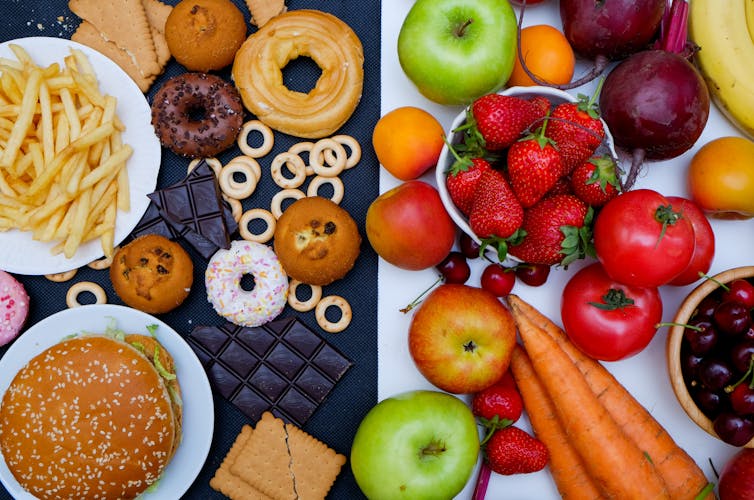
Our world is facing a huge challenge: we need to create enough high-quality, diverse and nutritious food to feed a growing population – and do so within the boundaries of our planet. This means significantly reducing the environmental impact of the global food system.
There are more than 7,000 edible plant species which could be consumed for food. But today, 90% of global energy intake comes from 15 crop species, with more than half of the world’s population relying on just three cereal crops: rice, wheat and maize.
The rise of ultra-processed foods is likely playing a major role in this ongoing change, as our latest research notes. Thus, reducing our consumption and production of these foods offers a unique opportunity to improve both our health and the environmental sustainability of the food system.
Impacts Of The Food System
Agriculture is a major driver of environmental change. It is responsible for one-third of all greenhouse gas emissions and about 70% of freshwater use. It also uses 38% of global land and is the largest driver of biodiversity loss.
While research has highlighted how western diets containing excessive calories and livestock products tend to have large environmental impacts, there are also environmental concerns linked to ultra-processed foods.
The impacts of these foods on human health are well described, but the effects on the environment have been given less consideration. This is surprising, considering ultra-processed foods are a dominant component of the food supply in high-income countries (and sales are rapidly rising through low and middle-income countries too).
Our latest research, led by colleagues in Brazil, proposes that increasingly globalised diets high in ultra-processed foods come at the expense of the cultivation, manufacture and consumption of “traditional” foods.
How To Spot Ultra-Processed Foods
Ultra-processed foods are a group of foods defined as “formulations of ingredients, mostly of exclusive industrial use, that result from a series of industrial processes”.
They typically contain cosmetic additives and little or no whole foods. You can think of them as foods you would struggle to create in your own kitchen. Examples include confectionery, soft drinks, chips, pre-prepared meals and restaurant fast-food products.
In contrast with this are “traditional” foods – such as fruits, vegetables, wholegrains, preserved legumes, dairy and meat products – which are minimally processed, or made using traditional processing methods.
While traditional processing, methods such as fermentation, canning and bottling are key to ensuring food safety and global food security. Ultra-processed foods, however, are processed beyond what is necessary for food safety.
Australians have particularly high rates of ultra-processed food consumption. These foods account for 39% of total energy intake among Australian adults. This is more than Belgium, Brazil, Columbia, Indonesia, Italy, Malaysia, Mexico and Spain – but less than the United States, where they account for 57.9% of adults’ dietary energy.
According to an analysis of the 2011-12 Australian Health Survey (the most recent national data available on this), the ultra-processed foods that contributed the most dietary energy for Australians aged two and above included ready-made meals, fast food, pastries, buns and cakes, breakfast cereals, fruit drinks, iced tea and confectionery.
What Are The Environmental Impacts?
Ultra-processed foods also rely on a small number of crop species, which places burden on the environments in which these ingredients are grown.
Maize, wheat, soy and oil seed crops (such as palm oil) are good examples. These crops are chosen by food manufacturers because they are cheap to produce and high yielding, meaning they can be produced in large volumes.
Also, animal-derived ingredients in ultra-processed foods are sourced from animals which rely on these same crops as feed.
The rise of convenient and cheap ultra-processed foods has replaced a wide variety of minimally-processed wholefoods including fruits, vegetables, grains, legumes, meat and dairy. This has reduced both the quality of our diet and food supply diversity.
In Australia, the most frequently used ingredients in the 2019 packaged food and drink supply were sugar (40.7%), wheat flour (15.6%), vegetable oil (12.8%) and milk (11.0%).
Some ingredients used in ultra-processed foods such as cocoa, sugar and some vegetable oils are also strongly associated with biodiversity loss.
What Can Be Done?
The environmental impact of ultra-processed foods is avoidable. Not only are these foods harmful, they are also unnecessary for human nutrition. Diets high in ultra-processed foods are linked with poor health outcomes, including heart disease, type-2 diabetes, irritable bowel syndrome, cancer and depression, among others.
To counter this, food production resources across the world could be re-routed into producing healthier, less processed foods. For example, globally, significant quantities of cereals such as wheat, maize and rice are milled into refined flours to produce refined breads, cakes, donuts and other bakery products.
These could be rerouted into producing more nutritious foods such as wholemeal bread or pasta. This would contribute to improving global food security and also provide more buffer against natural disasters and conflicts in major breadbasket areas.
Other environmental resources could be saved by avoiding the use of certain ingredients altogether. For instance, demand for palm oil (a common ingredient in ultra-processed foods, and associated with deforestation in Southeast Asia) could be significantly reduced through consumers shifting their preferences towards healthier foods.
Reducing your consumption of ultra-processed foods is one way by which you can reduce your environmental footprint, while also improving your health.![]()
Kim Anastasiou, Research Dietitian (CSIRO), PhD Candidate (Deakin University), Deakin University; Mark Lawrence, Professor of Public Health Nutrition, Institute for Physical Activity and Nutrition, Deakin University; Michalis Hadjikakou, Lecturer in Environmental Sustainability, School of Life and Environmental Sciences, Faculty of Science, Engineering & Built Environment, Deakin University, and Phillip Baker, Research Fellow, Institute for Physical Activity and Nutrition, Deakin University, Deakin University
This article is republished from The Conversation under a Creative Commons license. Read the original article.
Endometriosis can end women’s careers and stall their education. That’s everyone’s business

The Coalition has announced a A$58 million funding package to improve endometriosis diagnosis, care and treatment.
This would see new specialised endometriosis and pelvic pain clinics set up in each state and territory, expanded Medicare-funded medical imaging for the condition, and support for women who manage endometriosis with their GP, among other measures.
This announcement would benefit the estimated one in nine Australian women with endometriosis.
However, endometriosis is not just a medical issue. Our recently published research shows there’s a high chance that women surgically diagnosed with endometriosis will leave the workforce.
Remind Me, What Is Endometriosis?
Endometriosis causes inflammation when tissue similar to the lining of the womb grows throughout the body.
Women often describe “stabbing” pain during their period, back pain, and pain going to the toilet and during sex.
They might have stomach pain, vomiting and diarrhoea, headaches, muscle aches and tiredness. Imagine dealing with this every day or not knowing when symptoms might strike.
Endometriosis is estimated to cost A$9.7 billion each year to the Australian economy. Most of these costs come from lost productivity at work.
How Do Women With Endometriosis Struggle At Work?
Focusing at work can be difficult because of unpredictable symptoms, side effects of strong painkillers, and frequent trips to the toilet.
Women seeking a diagnosis of endometriosis through surgery need time off to recover and might find themselves having more surgeries in the future.
Trying to explain this to people at work and employers can be embarrassing, feel like an invasion of privacy or may unfairly risk future career opportunities.
Sick leave can disappear quickly, and women may feel pressured to work while unwell.
Emma Watkins, the former Yellow Wiggle, went public with her battle to balance endometriosis and work. Ongoing pain and the need for surgery to treat it forced Emma to pull out of the 2018 Wiggles national tour.
It Can Take Years To Be Diagnosed
Many women with endometriosis start to see symptoms as adolescents or young adults. However, many women aren’t officially diagnosed until their early thirties. It takes an average of eight years to be diagnosed.
Stories of women fighting hard to get a diagnosis because doctors wouldn’t believe them, or take their symptoms seriously, are common.
To make matters worse, until recently, the only way to tell if someone had endometriosis was to do surgery.
Surgery isn’t the right option for everyone; it has risks, is costly, requires time to recover, and doesn’t always stop women’s pain. Many cannot have, or do not want, surgery and are labelled with “suspected” endometriosis.
Fortunately, international guidelines updated earlier this year say endometriosis can be diagnosed without needing surgery.
Diagnosis Is A Turning Point
A diagnosis of endometriosis was a turning point for women’s participation in work, our research showed.
We used data from the Australian Longitudinal Study on Women’s Health to look at employment for 4,494 Australian women born in 1973-78, with and without endometriosis.
We found 63% of women who had surgery for endometriosis were working full-time before diagnosis. This dropped to 44% after diagnosis.
Women who had surgery for endometriosis were 85% more likely to be unemployed three years after their diagnosis than before it.
Women who had “suspected endometriosis” (diagnosed without surgery) stayed working but were more likely to suffer from severe period pain, tiredness, heavy periods, and headaches or migraines than women without endometriosis.
Women who had surgery for endometriosis may have been in a better financial position to afford to get surgery and to eventually stop working than women who didn’t have surgery.
But we cannot underestimate the emotional and physical challenges of living with endometriosis. The often limited support available in the workplace means women may have been forced to stop work.
How Can We Support Women To Stay In Work?
The 2018 National Action Plan for Endometriosis attempts to educate employers about supporting women with endometriosis at work.
This includes offering flexibility in the workplace – whether that’s through job modifications and time off in lieu, or flexible work hours and working from home.
Creating a supportive workplace culture is also important. Non-judgemental responses to women’s experiences with endometriosis are also key.
Additional days of sick leave for women with endometriosis may also help to manage the demands of their job and symptoms.
These are great starts for women already in work, but we need to do more, and start earlier.
Girls and women need flexibility early in their education to cope with the unpredictable nature of endometriosis.
Virtual classrooms could help minimise missed days at school, TAFE or university. Programs that offer flexibility and allow women to complete their education over a longer period could help.
More Funding Will Be Needed
The recent funding announcement for people with endometriosis includes A$2 million with a portion to fund a workplace assistance program. This is for employees and employers to navigate discussions in the workplace.
The detail of how that will work is not yet available, although this just a starting point. More funding will be needed to address the inequity for women with endometriosis in the workplace, to support women to stay working for as long as they want.
Women With ‘Suspected’ Endometriosis Also Need Support
Finally, we mustn’t invalidate women’s experiences of endometriosis, and the severity of their symptoms, based on their type of diagnosis.
Policymakers, doctors and employers should acknowledge women with “suspected” endometriosis need just as much support as those with surgically diagnosed endometriosis.![]()
Ingrid Rowlands, Research Fellow, The University of Queensland; Gita Mishra, Professor of Life Course Epidemiology, Faculty of Medicine, The University of Queensland, and Jason Abbott, Professor of Obstetrics and Gynaecology, UNSW Sydney
This article is republished from The Conversation under a Creative Commons license. Read the original article.
Lung Damage May Persist Long After COVID-19 Pneumonia
- Anna K. Luger, Thomas Sonnweber, Leonhard Gruber, Christoph Schwabl, Katharina Cima, Piotr Tymoszuk, Anna K. Gerstner, Alex Pizzini, Sabina Sahanic, Anna Boehm, Maximilian Coen, Carola J. Strolz, Ewald Wöll, Günter Weiss, Rudolf Kirchmair, Gudrun M. Feuchtner, Helmut Prosch, Ivan Tancevski, Judith Löffler-Ragg, Gerlig Widmann. Chest CT of Lung Injury 1 Year after COVID-19 Pneumonia: The CovILD Study. Radiology, 2022; DOI: 10.1148/radiol.211670
- Ann N. Leung. COVID-19 Pandemic: The Road to Recovery. Radiology, 2022; DOI: 10.1148/radiol.220488
Residual Water From The Food Industry Gives Seaweed Cultivation A Boost
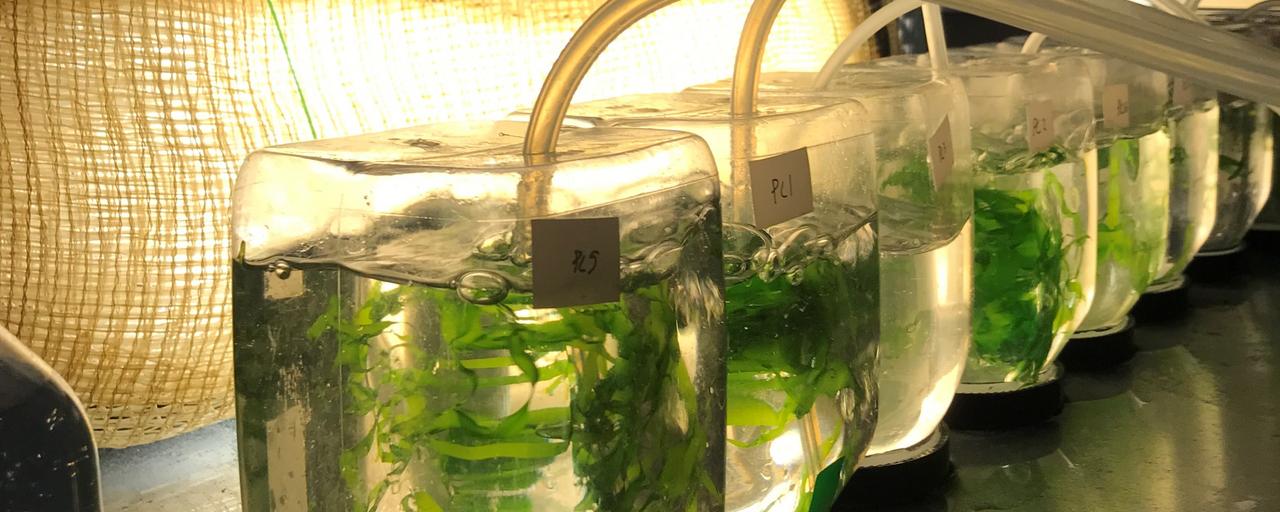
An Approach To Treating A Severe Congenital Myopathy
Good News For Coffee Lovers: Daily Coffee May Benefit The Heart
Improving Asphalt Road Pavement Using Engineered Nano Mineral Composites

Disclaimer: These articles are not intended to provide medical advice, diagnosis or treatment. Views expressed here do not necessarily reflect those of Pittwater Online News or its staff.